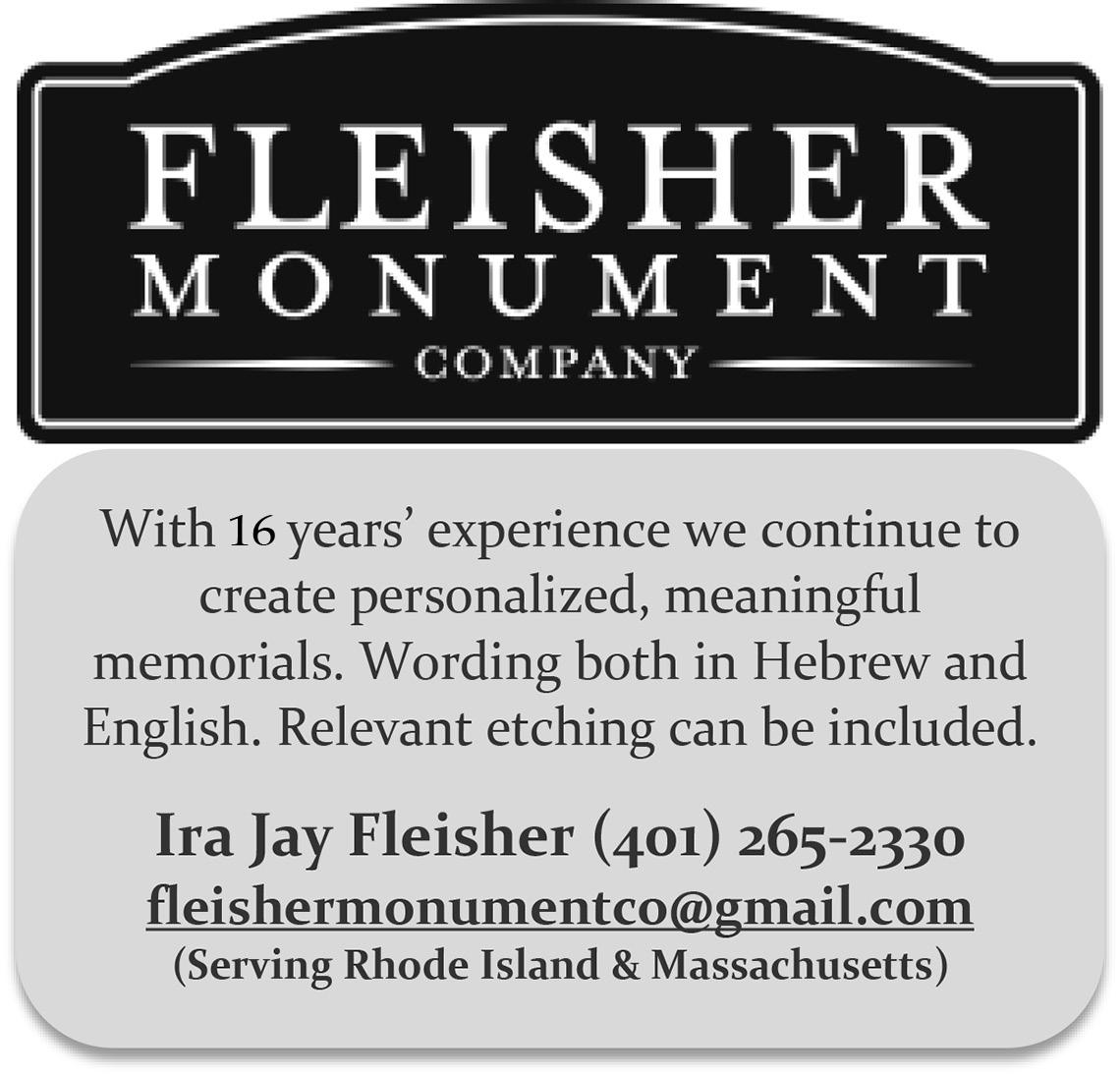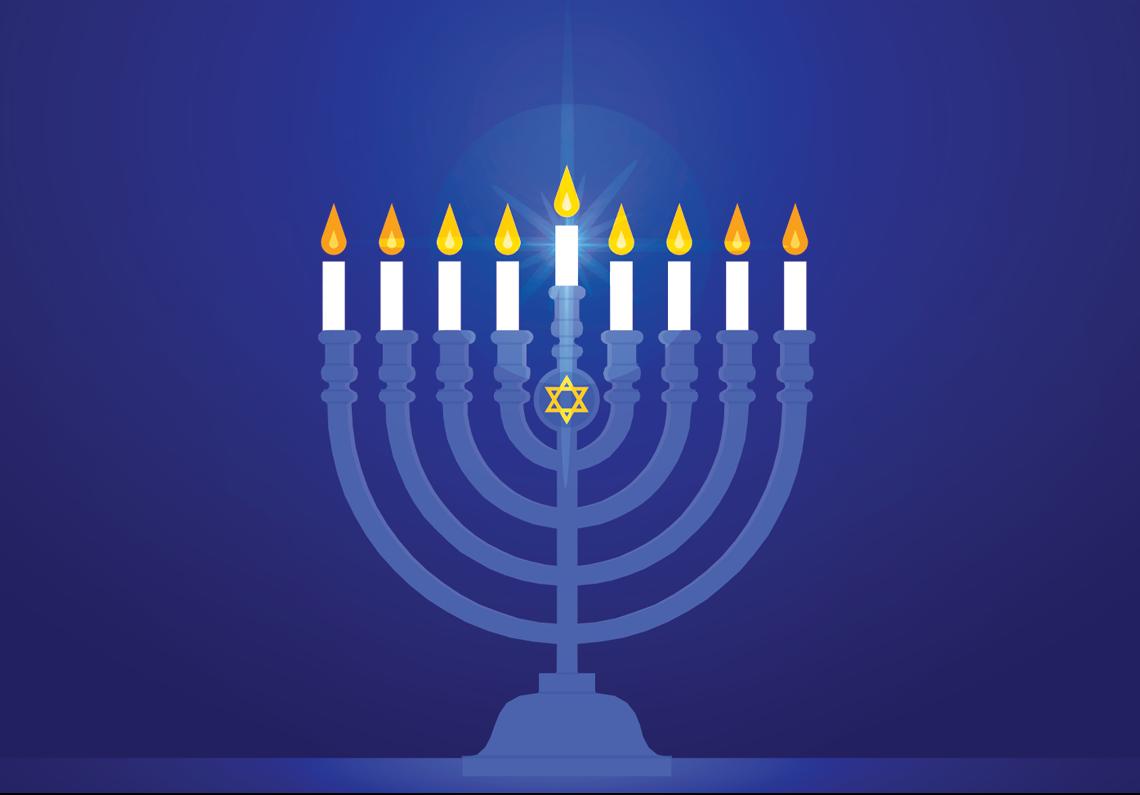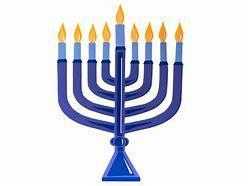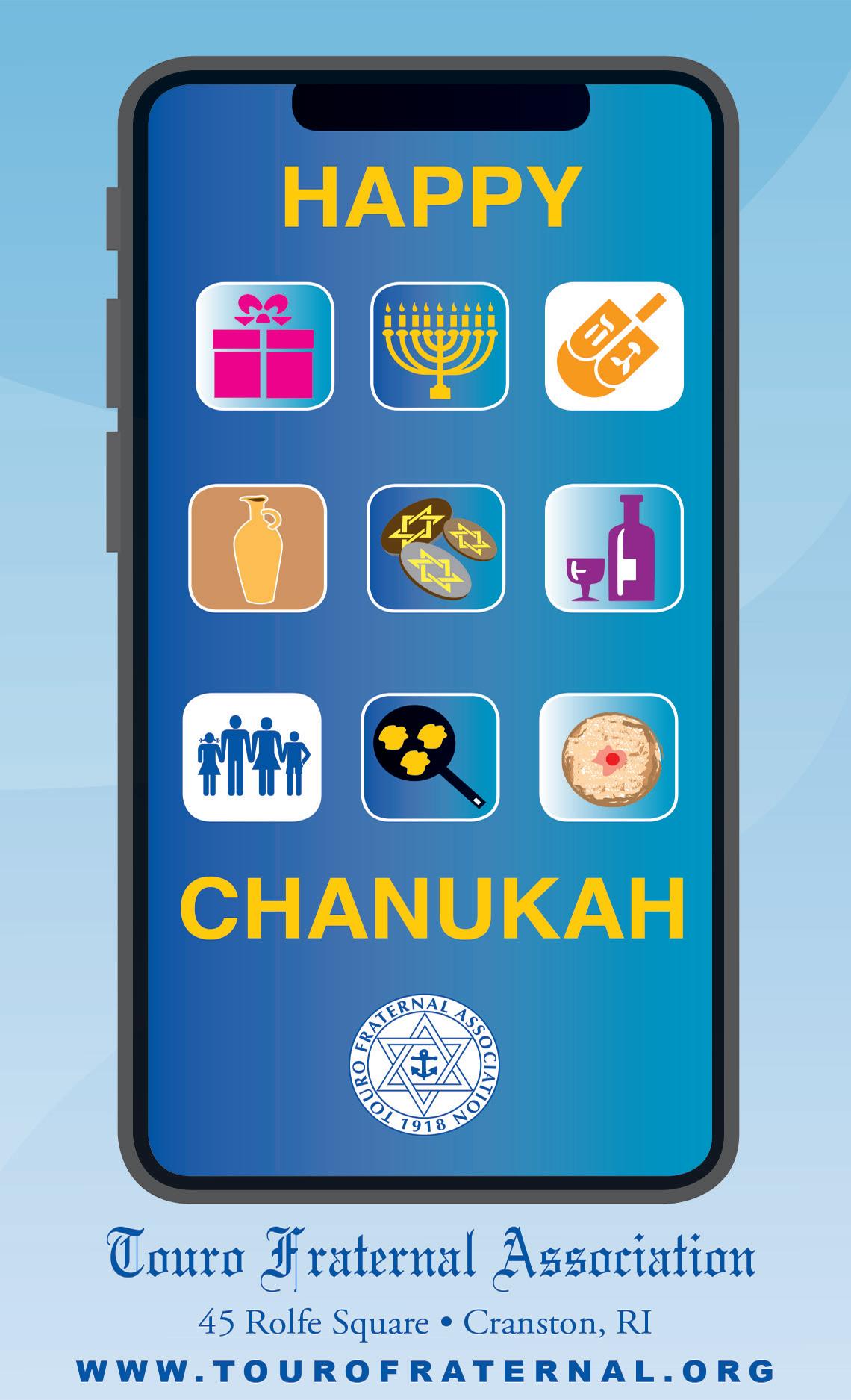The







IT SEEMS LIKE we could all use a little more light in our lives right now.
Light gives us joy. It opens our eyes to the world around us and cancels the darkness.
And there sure is a lot of darkness right now. I’m not just speaking of the early setting of the sun, which can be just discouraging on its own. I’m using the word darkness figuratively.
In Arizona, election deniers are holding up certification of an election with little or no evidence that any serious issues occurred that impacted the outcome.
In Georgia, a runoff election is putting our core values to the test. And whichever candidate wins, is it a win for the state and country or another occasion for us to tumble into election controversy?
Our politics are dividing our leaders, but also our families and friendships.
December darkness in Washington, D.C., could bring more political controversy. Will our lame-duck Congress act on a long list of important and con troversial issues before the end of their tenure? Will the new Congress work together to solve problems, or stoke them? And what will the Supreme Court do next?
We face a lot of economic uncertainty and potential shifts in our homes and investment values. Travel ing is more expensive and
more of a hassle. A triad of medical issues still threaten, from COVID and flu to RSV.
The impact of all this is taking a toll on our mental health.
And there is the war in Ukraine, turmoil in China and Iran, and concerns about food shortages and climate change worldwide. We are experienc ing more mass killings and an increase in hate speech against Jews, Asians, Blacks and others. It can feel over whelming.
So how can we spread more light? What brings us joy? How do we increase our optimism and avoid focusing
and miracles. That little vial of oil burned brightly for eight nights. What could offer more hope in these negative times?
That promise of light attracts loved ones to my house, which brings joy to our entire family. And the anticipation of crispy latkes certainly helps.
I’m happy to host our family gatherings, with the accompanying excitement and warmth. Everyone has a menorah, and we light them all together. If that doesn’t push out the darkness, I don’t know what will.
A wise rabbi has told me repeatedly over the years that the more we light candles, like the Shabbat candles or the Hanukkah candles, the more light we bring into the world and the more good will come of the light.
entirely on the negative?
Hanukkah is a good start.
A little light from the glow of our Hanukkah candles is always a welcome sight on these short December days. And that brings me joy. I know Hanukkah is certainly not the most significant of holidays, but it always seems to come at the right time.
Hanukkah is a celebration of freedom, perseverance
This month, as you light the Hanukkah candles, take a few moments to focus on the positive, the warmth and the love that surround you. Take the opportunity of the Festival of Lights to shine a light on what is good and right. And perhaps take the opportunity to think about how you can contribute more to the light moving forward.
I’m going to kindle all our hanukkiot this year because our world can sure use the light. I hope you will too, and that it will help you experi ence some of the joy of the miracle of Hanukkah.
Fran Ostendorf, Editor
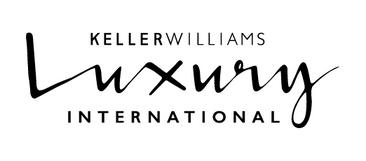
ADVERTISING DEPARTMENT
Peter Zeldin | 401-421-4111, ext. 160 pzeldin@jewishallianceri.org
CONTRIBUTORS Cynthia Benjamin, Larry Kessler, Robert Isenberg, Emma Newbery, Sarah Greenleaf, George M. Goodwin
COLUMNISTS Michael Fink, Patricia Raskin, Rabbi James Rosenberg, Daniel Stieglitz
JEWISH RHODE ISLAND (ISSN number 1539-2104, USPS #465-710) is published monthly except twice in May, August and September.
PERIODICALS POSTAGE PAID at Providence, R.I
POSTMASTER Send address changes to: Jewish Rhode Island, 401 Elmgrove Ave., Providence, RI 02906.


PUBLISHER
The Jewish Alliance of Greater Rhode Island, President/CEO Adam Greenman, Chair Harris Chorney, 401 Elmgrove Ave., Providence, RI 02906. 401-421-4111; Fax 401-331-7961

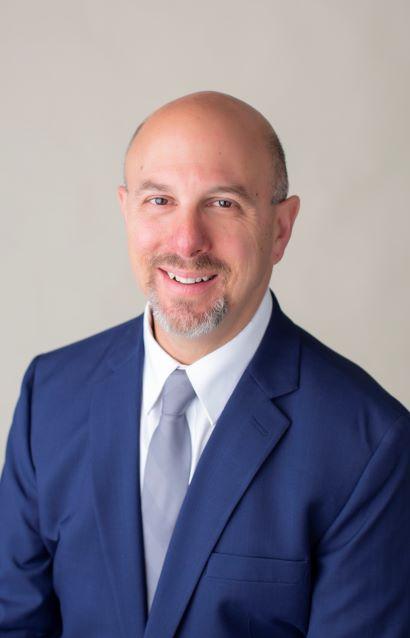
THE MISSION OF JEWISH RHODE ISLAND is to communicate Jewish news, ideas and ideals by connecting and giving voice to the diverse views of the Jewish community in Rhode Island and Southeastern Massachusetts, while adhering to Jewish values and the professional standards of journalism.
COPY DEADLINES: All news releases, photographs, etc., must be received on the Wednesday 10 days prior to publication. Submissions may be sent to: editor@jewishallianceri.org.

ADVERTISING: We do not accept advertisements for pork or shellfish. We do not attest to the kashrut of any product or the legitimacy of adver tisers’ claims.
ALL SUBMITTED CONTENT becomes the property of Jewish Rhode Island. Announcements and opinions contained in these pages are pub lished as a service to the community and do not necessarily represent the views of Jewish Rhode Island or its publisher, the Jewish Alliance of Greater Rhode Island. We reserve the right to refuse publication and edit submitted content.
ON THE COVER : Photo illustration. BY TOMERTU | ISTOCKPHOTO.COM

Since childhood, Kate Liberman has lived and breathed theater. She’s devoted nearly all her adult life to the performing arts, in cities across the Northeast and in California. So the staff of Trinity Repertory Theater, in Providence, was eagerly awaiting Sept. 1, Liberman’s first day as executive director of the company.
LIBERMAN, 37, who grew up in Needham, Massa chusetts, has a brother who works in the theater industry, but says her parents “weren’t really theater people.”
“But my parents were very encouraging of what ever we were interested in,” she adds.
Liberman’s mother is a printmaker and illustra tor, and her father was an educator for the former Bureau of Jewish Educa
tion of Greater Boston.
When Liberman was growing up, her brother Jacob would perform impromptu plays in the living room, which led to family outings at the local community theater. Then they volunteered there, followed by visits to Boston playhouses.
As a student at the New Jewish High School, now known as the Gann Academy, in Waltham, Massachusetts, Liberman
identified mostly as an athlete, playing on the soccer and basketball teams. But when she started her studies at the University of Pennsylva nia in 2003, she gravitated toward the theater depart ment. She says that it was the technical and manage rial aspects of theater, not being in the spotlight, that appealed to her.
“I never caught the bug of enjoying being onstage,” Liberman says. “I don’t like to be other people, I like to be me. [And] I have trouble remembering lines. That’s not my expertise. But I like being part of telling stories through art.”
During college, Liber man landed an intern ship at the Manhattan Theatre Club. Most of her work was helping to write grants, but she was fascinated by the number
of invisible networks that labored behind the scenes.
“I realized there were all these people who worked at the theater who weren’t in the scene shop, or the costume shop, or working back stage at night,” Liberman recalled. “There was this whole team of managers. Really, there are so many different levels of exper tise that are necessary for putting a play on stage for a live audience. That’s when I started to under stand that problem-solv ing could spill over into a profession.”
After college, Liber man found a job on the development team at the John F. Kennedy Center for the Performing Arts, in Washington, D.C. The world-renowned venue was eye-opening for Liber man; she experienced top-notch productions and
international art expos, but she also experienced the 2008 financial crisis, when arts organizations were scrambling to retain their funding.
After two years at the Kennedy Center, Liber man says she felt the need to go back to school to enhance her skills.
In 2008, Liberman was admitted to Yale Uni versity, and she settled comfortably into her new home in New Haven, Connecticut. She earned an MFA and an MBA in Theater Management, and spent innumerable hours working with the Yale Repertory Theatre.
Liberman was named a Truman Scholar at Yale, and served as president of the Truman Scholars Association. It’s also where she met Eric
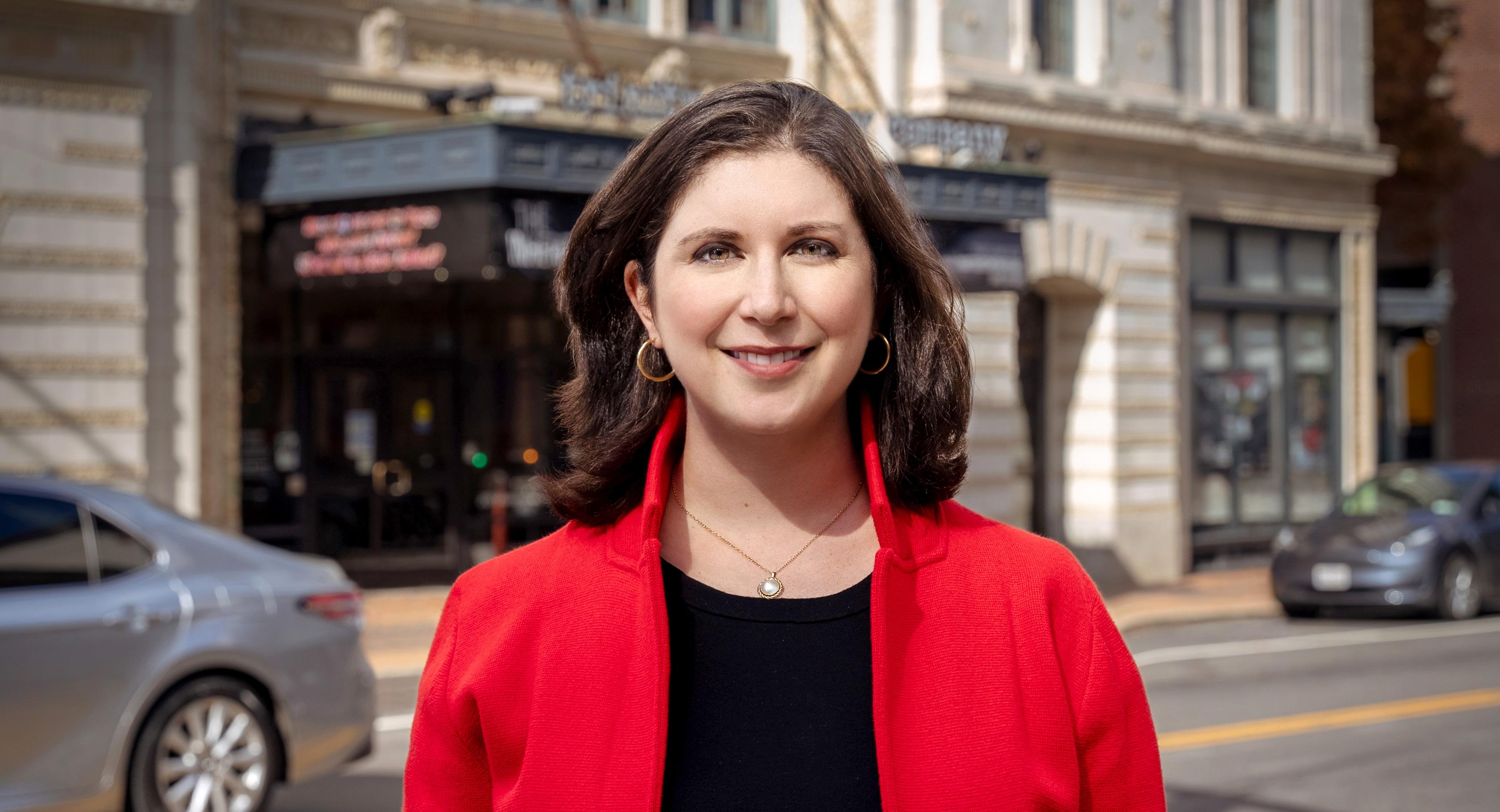
THE TORAH PORTION Vayetze describes Jacob’s vision of a ladder stretching between heaven and Earth: “He dreamed, and lo – a stairway was set on the ground with its top reaching to heaven, and lo – angels of God going up and coming down on it” (Genesis 28:12).
The rabbis point out that although the angels first went up the ladder, they always came back down. A midrash (Raba Vayikra 29:2) equates the angels to Esau and sug gests that the angels ascending and descend ing the ladder represent the major empires of ancient Jew ish history, such as the Baby lonians and the Persians, that ascended to a place of power over the Jewish people only to descend again. The midrash also refers to our overcoming Greek domination, which we celebrate during Hanukkah.
The midrash was meant to reassure the Jews, who were under Roman rule at the time it was written, that just as God had limited Esau’s ascendency and the reign of Babylonia, Persia and Greece,
the small Jewish nation would survive even the rule of mighty Rome.
The analogy of Jacob fearing that his children would never be free of Esau’s domination being compared to the Jews under Greek and Roman rule, who despaired that they would never be liberated, is coun tered by the words of Genesis 28:15, in which God says, “And here I am, with you: I will watch over you wherever you go, and I will bring you back to this soil. I will not let go of you as long as I have yet to do what I have promised you.”
Yet, despite God’s promise, the Jewish people have con tinued to experience moments in history when the ascen dency of the angels recurs. Jewish homeland and/or the Jewish people face threats to their very existence by those who have achieved positions of power, whether hostile nations or antisemitic groups.
The holiday of Hanukkah teaches us that we should not remain passive and rely
solely on God’s promise, but rather we should also act on our own behalf. In addition to remaining steadfast in our faith in God, we must also do everything we can to help ourselves, working toward making the world better and fighting against those seeking to destroy us as a people and a nation.
In the thousands of years since God’s promise was made, the Jewish people have endured many threats to our existence. Even in modern times, rulers and nations, such as Hitler, have climbed the figurative ladder only to fall back again. But history has also taught us never to be complacent.
The nation of Israel and Israelis have fought against those seeking to destroy us or deny our right to practice our traditions. As American Jews, we must do whatever we can to support Israel against terrorists and others who wish to destroy it, and urge our government to do the same. But we should not do so by becoming like our enemies or supporting those who act in such a manner.
Hanukkah serves as a reminder of our many strug gles for self-determination
and the importance of our right to practice our religion free from persecution. Recent reports from the FBI, the Southern Poverty Law Center and the Anti-Defamation League, among other organi zations, have shown a sharp rise in hate crimes against Jews and others. But we do not need their reports to notice this trend; news stories all too frequently alert us to new incidents of antisemitism and the steady rise in hate crimes against other groups as well.
This surge is not limited to the United States; it parallels a worldwide resurgence of antisemitism and hate crimes. In a world like this, the message of Hanuk kah, that we can unite and win vic tory against those who hate, is more relevant than ever.
As we light our Hanukkah candles, let us continue to believe the promise that God made to our people, but let us not rely on the promise alone. Let us also do whatever we can to ensure
another group or nation does not ascend the ladder and oppress us, or any other group.
We are taught that we were created in God’s image and, like God, can share our compassion, love and power so that it multiplies and makes the world better – just like the candles of Hanukkah share their flames, growing brighter and multiplying with each additional night.
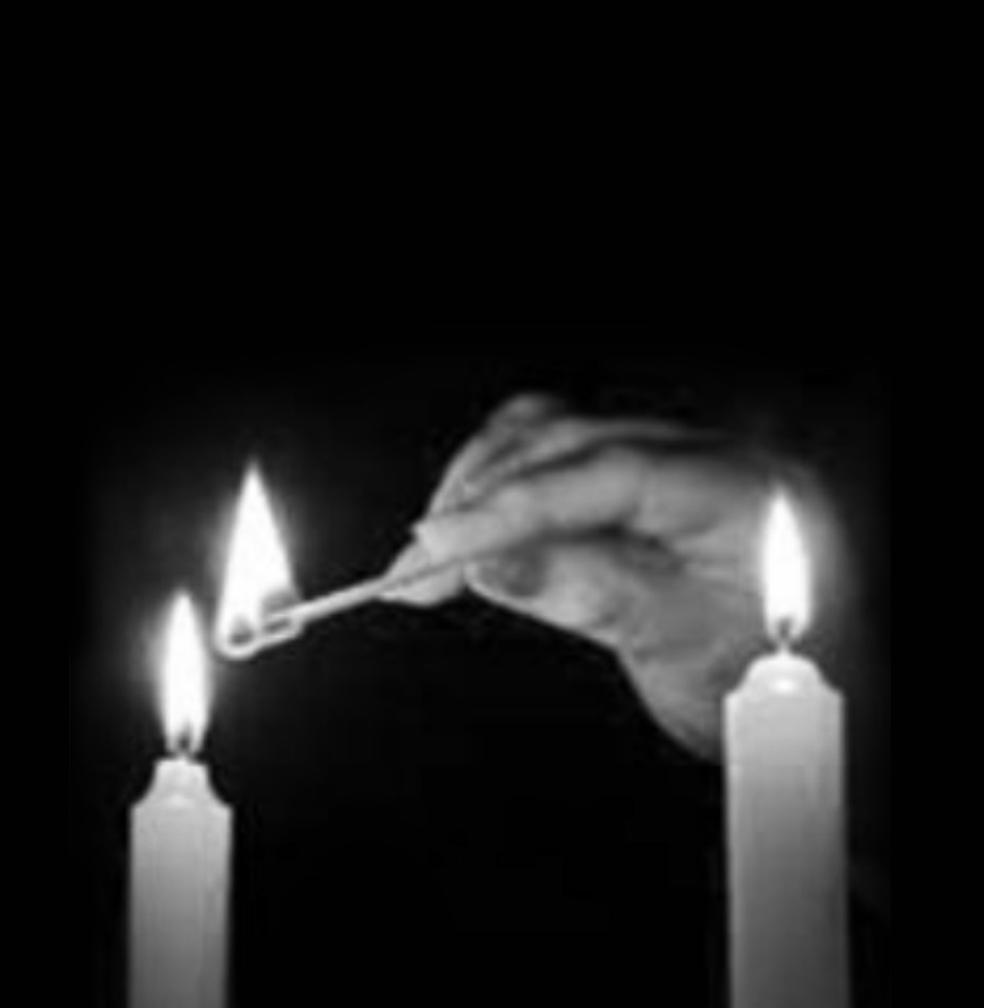
Rhode
Gershman, a veteran theater technician who was studying in the same department, and who would eventually become her husband.
The couple weathered a long-distance relationship while Liberman served as general manager of The Laguna Playhouse, in Laguna Beach, California, for two years. She says she loved the environment in California, describing it as “paradise,” but she missed home.
“I ultimately learned that I’m a New Englander at heart, and it kind of felt foreign” in California, she says.
In 2015, Liberman became the managing director of the Hudson Valley Shakespeare Festival, in Garrison, New York. She loved her life and work there, and stayed for seven years. During that time, the festival was given a 100-acre gift from a local benefactor, and a permanent facility will soon replace the tent that is erected each summer.
Liberman weathered the worst of COVID with her Hudson colleagues, and the festival became one of the first live theatrical events in New York state to reopen to the public. For her work there, Liberman was named a “40 Under 40 Rising Star” by the Westchester Business Council.
“I hold that company very close to my heart,” she says. “We were building something really excit ing there.
People would come every summer, and built it into their family traditions.”
Liberman and Gershman might have continued to live there, raising their son, Tobias, 4, in upstate New York. But then the execu tive-director opening at Trin ity Rep appeared on Liber man’s radar in early 2022. She hadn’t been searching for new work, but she visited
Providence to investigate the opportunity.
“All it takes is an hour with Curt Columbus, our artis tic director, and I was very quickly convinced that I had to be a part of this place,” she says with a laugh.
While visiting, Liberman saw Trinity’s production of August Wilson’s “Gem of the Ocean” and was further sold on pur suing the job. She was also impressed with the the ater’s home in downtown Providence.
“It feels like we’re in a moment of downtown revi talization for the city. It was exciting. I hadn’t been looking for my next move, but this is it,” she says.
Liberman received the job offer in the spring; stayed at the Shakespeare festival through the summer; moved her family to Cranston at the beginning of August; and
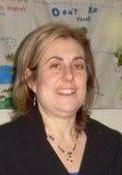
started at Trinity on Sept. 1.
For her husband, now 37, the move was relatively easy; Gershman is a consultant for arts organizations around the world, and most of his work is remote.
Upon arrival in the Ocean State, the couple took a badly needed two weeks off.
“We got to know as many beaches as we could and unpacked as many boxes as we could,” says Liberman. “We sort of started to love Rhode Island already, just in that short period of time.”
Liberman’s family has also eased into the local Jewish community, observing the High Holy Days at Temple Emanu-El, in Providence.
As it turned out, Liber man had already met Barry Dolinger, the rabbi at Con gregation Beth Shalom, in Providence, when they were undergraduate students at
Dec 2 3:56pm Dec 9 3:55pm Dec 16 3:56pm Dec 23 3:59pm Dec 30 4:04pm
Penn. She speculates about one day moving to Providence and the close-knit Jewish community on the East Side.
“Our family is deeply committed to living Jewish values in our household,” she says. “We have started to get involved where we can.”
ROBERT ISENBERG (risenberg@ jewishallianceri.org) is the multimedia producer for the Jewish Alliance of Greater Rhode Island and a writer for Jewish Rhode Island.
‘I hadn’t been looking for my next move, but this is it.’
Kosher Senior Café and Pro gramming. In-person lunches 11 a.m.-1 p.m. Monday – Thursday and Friday, 12/16 (Hanukkah Party – see event below), at the Dwares JCC, 401 Elmgrove Ave., Providence; Friday (except 12/16) at Temple Sinai, 30 Hagen Ave., Cran ston. No Café on 12/26. In-person and Zoom programming from 11 a.m.-noon followed by lunch and a guest speaker or discussion from noon-1 p.m. The second Tuesday of the month is “Susie’s Corner” with Susie Adler. The third Thursday of the month is a book chat with Neal Drobnis. Suggested donation: $3 per lunch for age 60 and older as well as for younger adults with a disability. Other adults $6.50. The Kosher Senior Café is a program of Jewish Collaborative Services and is supported by the Jewish Alliance of Greater RI and Blackstone Health. Information and RSVP, Neal Drobnis at neal@jfsri.org or 401421-4111, ext. 107.
Project Shoresh Ladies’ Part ners in Torah Night. Sundays 7:45-8:45 p.m. Providence Hebrew Day School, 450 Elmgrove Ave., Providence. Partner-based study group. On-site facilitators available. Free. Information, projectshoresh. com or Naftali Karp at naftalikarp@ gmail.com or 401-632-3165.
Delve Deeper | Sephardi and Mizrahi Jews: From 1492 to the 20th Century. Mondays 7:30-9:30 p.m. Thru 12/12. Explore via Zoom the history of Arab/Middle Eastern and Sephardi Jews in this course taught by Yaron Ayalon, Ph.D., director of the Yaschik/Arnold Jewish Studies Program and associate professor of Jewish and Middle Eastern Stud ies, College of Charleston (South Carolina). Presented in cooperation with the Jewish Alliance of Greater Rhode Island, Congregation Beth Sholom, Temple Beth-El, Temple Emanu-El, Temple Habonim, Temple Sinai and Temple Torat Yisrael. Information, Morty Miller at morty miller1945@gmail.com.
Project Shoresh: For Young Professionals – A Walk through Torah. Tuesdays 7-8 p.m. 132 Lancaster St., Providence. Explore the Five Books of Moses with Rabbi Chaim Yehuda and Mrs. Guta Shaps. RSVP (requested) or infor mation, text or call Rabbi Shaps at 732-822-0028.
Temple Habonim “The Wisdom’s Literature.” Wednesdays 11 a.m.noon. Study the texts found in the Writings, the final section of the Hebrew Bible. These texts offer perspectives on our relationship with God and the meaning and purpose of our lives. Via Zoom.
Information, Adina Davies at office@ templehabonim.org or 401-2456536.
Temple Habonim Lunch and Learn. Thursdays noon-1:15 p.m. 165 New Meadow Road, Barrington. Join Rabbi Howard Voss-Altman in person for weekly Torah Study on Pirke Avot: A Modern Commentary on Jewish Ethics. Free. Information, Adina Davies at office@templeha bonim.org or 401-245-6536.
naftalikarp@gmail.com or 401-6323165.
Temple Habonim Tot & Family Shabbat. First Friday of each month. 5:45 p.m. 165 New Meadow Road, Barrington. Tot Shabbat (5:45-6:15 p.m.): interactive service designed for families with young children that offers an opportunity to experience the joy of Shabbat through music, story and prayer. Pizza Dinner (6:15 p.m.): $5 per
wasser and Cantor Deborah John son. Zoom link at templesinairi.org. Information, dottie@templesinairi. org or 401-942-8350.
Cape Cod Synagogue Shabbat Services. Fridays 7 p.m., except second Friday of the month 6:30 p.m. when Family Shabbat Services take place. 145 Winter St., Hyannis, Mass. With Rabbi David Freelund. In-person and livestreamed on website, Facebook, Cape Media,

Temple Sinai Shabbat Break fast & Torah Study In-person and via Zoom. Saturdays 9:30-11 a.m. Temple Sinai, 30 Hagen Ave., Cranston. Breakfast followed by interactive discussion at 10 a.m. with Rabbi Jeffrey Goldwasser or others in our community. Zoom link at templesinairi.org. Information, dottie@templesinairi.org or 401942-8350.
Temple Habonim Torah Study. Saturdays (no Torah Study when there is a Bar or Bat Mitzvah) 10-11 a.m. Rabbi Howard Voss-Altman leads study on current portion. Via Zoom. Information, Adina Davies at office@templehabonim.org or 401245-6536.
Cape Cod Synagogue Shabbat Services. Saturdays 10:30 a.m. 145 Winter St., Hyannis, Mass. With Rabbi David Freelund. In-person and livestreamed. Services are in-person with proof of vaccina tion; masks optional. Services also available on our website, Facebook and YouTube. Information, Cape Cod Synagogue at 508-775-2988 or capecodsynagogue.org.
Temple Sinai Shabbat Morning Service In-person and via Zoom. Saturdays 11 a.m. (10:30 a.m. when celebrating a Bar or Bat Mitzvah). 30 Hagen Ave., Cranston. Informa tion, templesinairi.org or Dottie at 401-942-8350.
Temple Torat Yisrael Men’s Club Game Night. Thursdays 6-8 p.m. 1251 Middle Road, East Greenwich. Socialize and play games including table tennis. Information, www. toratyisrael.org.
Delve Deeper | Moses Maimon ides: Rabbi, Philosopher and Community Leader. Thursdays 7:30-9:30 p.m. Thru 12/15. Explore Maimonides’ mindset, life and cultural world in this course taught by Alan Verskin, Ph.D., associate professor of History, URI. Pre sented in cooperation with the Jewish Alliance of Greater Rhode Island, Congregation Beth Sholom, Temple Beth-El, Temple Emanu-El, Temple Habonim, Temple Sinai and Temple Torat Yisrael. Information, Morty Miller at mortymiller1945@ gmail.com.
Project Shoresh presents “Jew in 2022: Exploring a Meaningful Life” with Rabbi Eli Kasirer. Thursdays 8-9 p.m. Providence Hebrew Day School, 450 Elmgrove Ave., Providence. Rabbi Moshe Don Kestenbaum’s book “Olam Ha’avodah – A guide to understand ing and achieving our purpose in this world” will be the basis for discussions. To confirm time and place for each class, Naftali Karp at
Dec. 18.
person; email office@temple habonim.org to sign up. Family Service (6:45-7:45 p.m.): both in-person and streamed restorative service designed for both families with school-aged children as well as those without. Information, Adina Davies at office@templehabonim. org or 401-245-6536.
Project Shoresh Lively Kabba lat Shabbat. Fridays. Services will begin at the commencement of Shabbat. Be in touch for exact timing each week. Providence Hebrew Day School (side entrance), 450 Elmgrove Ave., Providence. Welcome Shabbat with a few inspiring words, melodious songs and traditional services. Open to all. Information, Naftali Karp at nafta likarp@gmail.com or 401-632-3165.
Temple Torat Yisrael Virtual Kabbalat Shabbat Songs & Torah Services. Fridays in December except 12/16. 5:45-6:30 p.m. Led by Rabbi David Barnett. Information and Zoom link, Temple@toratyis rael.org.
Temple Sinai Shabbat Evening Service. Fridays usually 6 p.m. 30 Hagen Ave., Cranston. Song, prayer and reflection offered in person or on Zoom. With Rabbi Jeffrey Gold
YouTube and Community Television Comcast channel 99. Services are in person with proof of vaccination; masks optional. Information, 508775-2988 or capecodsynagogue. org.
Temple Beth-El Torah Study. Saturdays 9-10:30 a.m. (No Torah Study second Saturday of the month.) 70 Orchard Ave., Provi dence. Delve into the weekly portion with Rabbi Sarah Mack and Rabbi Preston Neimeiser. Join in-person or via Zoom. Information, Joie Mag none at jmagnone@temple-beth-el. org or 401-331-6070, ext. 100.
Temple Beth-El Shabbat Morn ing Service. Second Saturday of the month 9 a.m. 70 Orchard Ave., Providence. Shabbat morn ing minyan with lay participation incorporating study, Torah and Haftarah readings. In-person or via Zoom. Information, Joie Magnone at jmagnone@temple-beth-el.org or 401-331-6070, ext. 100.
Temple Torat Yisrael Shabbat Services. Saturdays 9:30 a.m. 1251 Middle Road, East Greenwich. On 12/3, streaming only. Other Satur days, both virtual and in-person. Led by Rabbi David Barnett. Infor mation, Temple@toratyisrael.org.
Sandra Bornstein Holocaust Education Center presents “The State of Hate.” 7 p.m. Dwares JCC, 401 Elmgrove Ave., Providence. Peggy Shukur, deputy director of the Anti-Defamation League of New England, will discuss regional and national threats, the ADL response to rising antisemitism and hate, and how the average citizen can help to combat this growing threat. Infor mation, Kelly Vest at info@hercri. org or 401-453-7860.
Congregation Beth David Story Time and Crafts with PJ Library. 9:45 a.m. 102 Kingstown Road, Narragansett. Explore a variety of PJ Library books, and participate in crafts and games. No fee; syna gogue membership not required. For ages 2-8. Hosted by Congrega tion Beth David in partnership with PJ Library. Information, Amanda Stevens at greenspan.amanda@ gmail.com.
Temple Beth-El K’tantan 5783 Hanukkah Lego Celebration with PJ Library. 4 p.m. 70 Orchard Ave., Providence. Get ready for Hanukkah by building a giant hanukkiah with Legos. K’tantan is a wonderful way to celebrate

Shabbat and holidays with children ages 0-5 with our friends from PJ Library. Information or to register, Rachel Mersky Woda at rmer skywoda@temple-beth-el.org or 401-331-6070, ext. 107.
Core Connects RI Book Club: “Shanda: A Memoir of Shame and Secrecy.” 7:30-8:30 p.m. In her deeply engaging, astonishingly candid memoir, author and activist Letty Cottin Pogrebin exposes the fiercely guarded lies and intricate cover-ups woven by dozens of members of her extended family. Via Zoom. Information, Elissa Felder at CoreConnectsRI@gmail.com or 401-241-9631.
Project Shoresh Ladies Pres ents “Hanukkah Delicacies & Inspiration.” 7:45 p.m. Providence Hebrew Day School, 450 Elmgrove Ave., Providence. Prepare for Hanukkah with ladies from across the community with inspiration while enjoying classic Hanukkah delicacies. Information and to RSVP, projectshoresh.com.
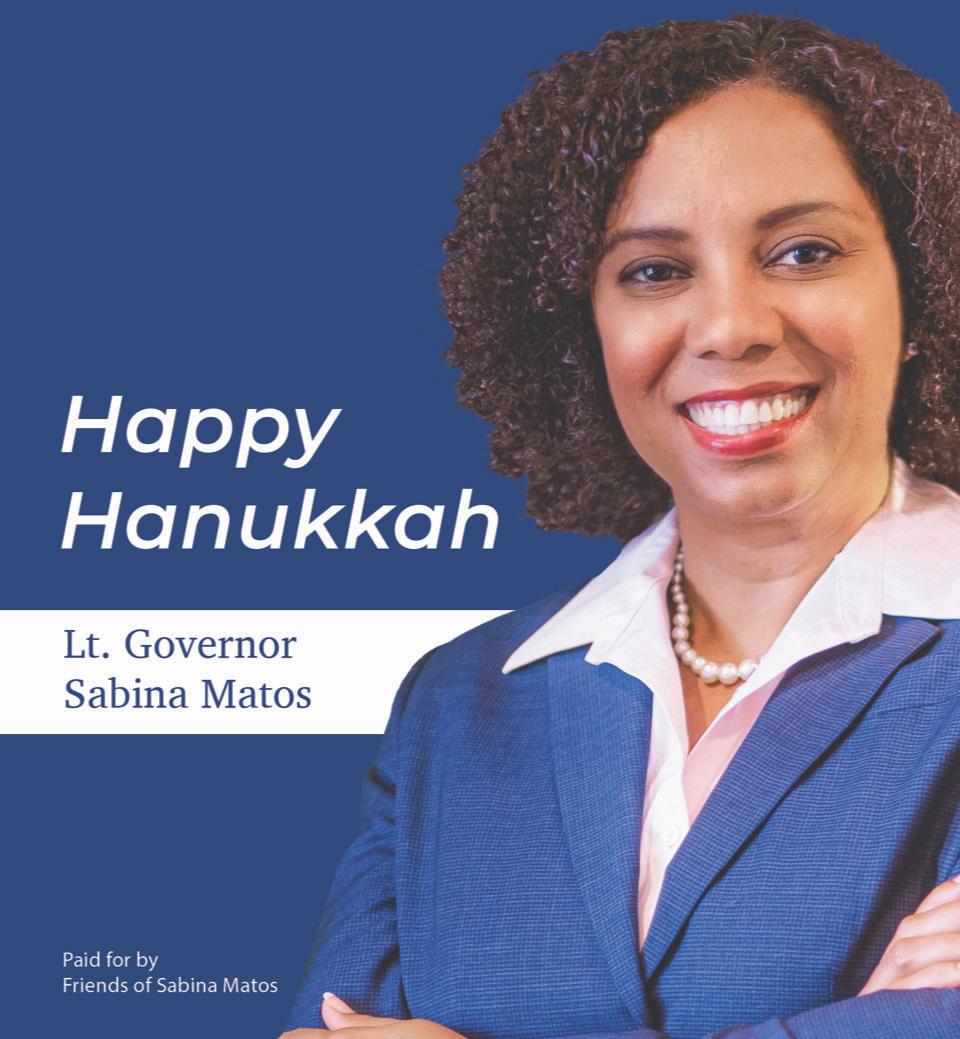
Behind the Book: “Under Jeru salem: The Buried History of the World’s Most Contested City.” 7 p.m. Delve into the tombs, tunnels and trenches of the Holy City in a saga of biblical treasures, intrepid explorers and political upheaval. With author Andrew Lawler. Via Zoom. Free. In partnership with the Jewish Book Council. Information, Larry Katz at lkatz@jewishallian ceri.org or 401-421-4111, ext. 179.
Kosher Senior Café Hanukkah Party. 11 a.m.-1 p.m. Dwares JCC, 401 Elmgrove Ave., Providence. Festive meal including butternut squash soup, potato latkes, salmon croquettes and sufganiyot. Music by Stanley Freedman & Sounds of Simcha. The Kosher Senior Café is a program of Jewish Collaborative Services. This event supported by the Isenberg Music Celebration Series, the Jewish Alliance of Greater RI and Blackstone Health. Suggested donation: $3. Information and RSVP, Neal Drobnis at neal@ jfsri.org or 401-421-4111, ext. 107.
Temple Torat Yisrael Torah Sprouts: Hanukkah. 9:15-10:15 a.m. 1251 Middle Road, East Greenwich. Learn about Jewish culture and holidays in a one-hour active pro gram with Rabbi David Barnett and Morah Leah. For children ages 3-5 and their parents. Open to all. You do not need to be a member of the synagogue. Cost: $12 per session or $80 for 8 sessions. Information and RSVP, www.toratyisrael.org.
Temple Habonim’s Shore shim: Roots – Pre-K Program: Hanukkah. 10:15-11:15 a.m. 165 New Meadow Road, Barrington. Introduce your child to the sounds, sights and traditions of Judaism with a focus on Jewish holidays. Once per month. A grown-up must stay with child. Led by PJ Library’s Lindsey Ursillo and Temple Habonim’s Educational Director David Perolman. Information and registration, Adina at office@ templehabonim.org or David at eddirector@templehabonim.org.
Hanukkah Spectaculah. 3-6 p.m. Biltmore Park, Between Exchange Terrace & Dorrance Street, Providence. The Department of Art, Culture + Tourism, in collabo ration with the Jewish Alliance of Greater RI, the Board of Rabbis of Greater RI, RISCA, RI Commerce, Providence City Council and P3, presents festive music, food, drinks, candle-lighting and art activities. Open to all. Free. Information, Larry Katz at lkatz@jewishallianceri.org or 401-421-4111, ext. 179.
Project Shoresh “Best Jewish YP Hanukkah Party.” 7:45 p.m. Providence Hebrew Day School, 450 Elmgrove Ave., Providence. Join YPs from around Southern New England for an uplifting, joyous, music-filled evening with Hanukkah delicacies, music, latkes, dreidels and fun for everyone. $10. Information and to RSVP, projects horesh.com.
account remains.
And such despicable expressions of hate are only the tip of the iceberg:
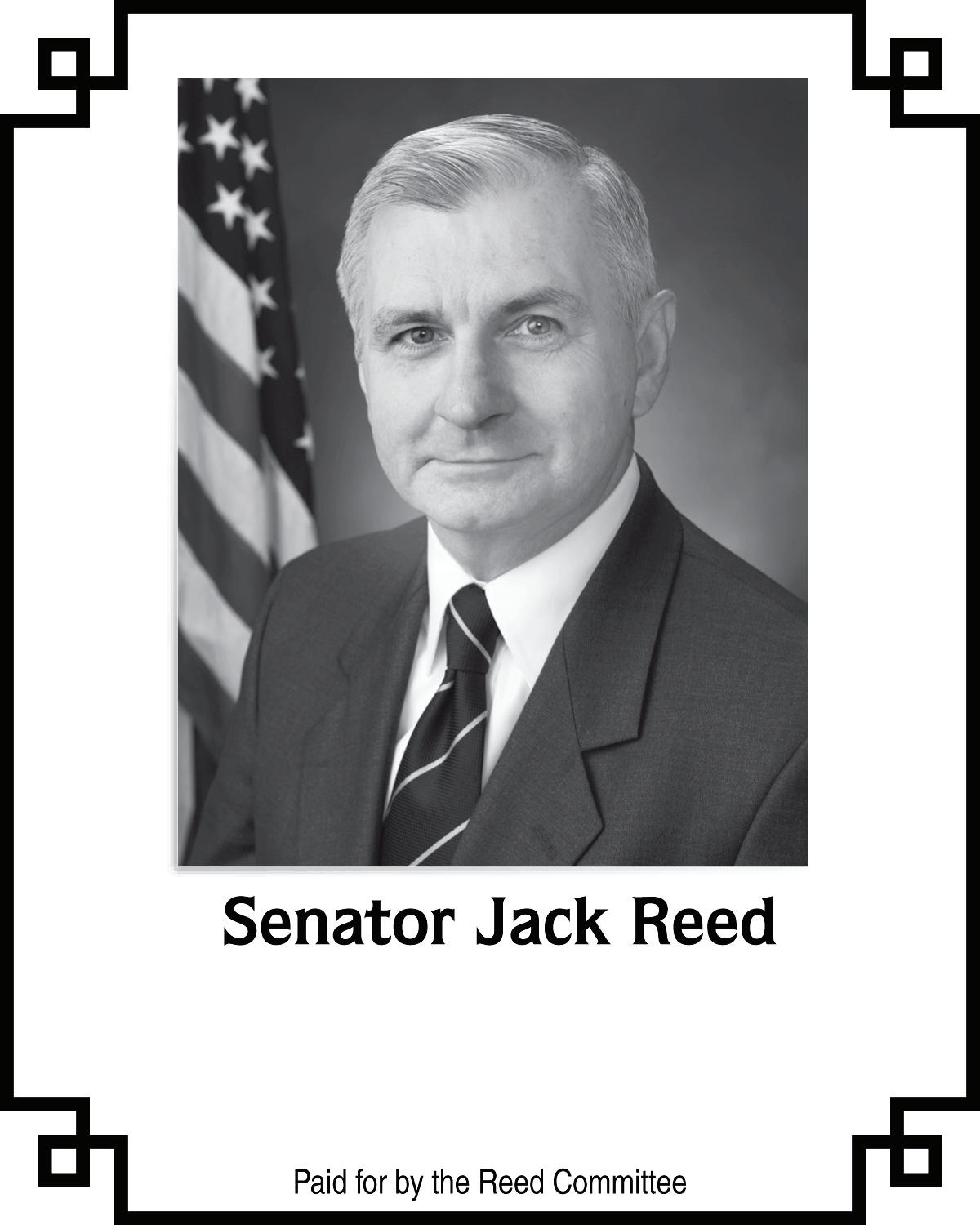
OR WILL THE MILLIONS who are indifferent, or even embrace, antisemitic rants by the likes of entertainer Ye (formerly Kanye West) continue their hateful view of the Jewish people, pushing us closer to the unthinkable?
Ye's Twitter rant against Jews is just one of the recent events demonizing Jews by people who – like the Ger
mans during the rise of the Nazis, in the 1930s – want someone to blame for the country’s problems.
Ye, in a Twitter post (since deleted) to his millions of followers, wrote that he was going to go “death con 3 On JEWISH PEOPLE.” Most companies, including Adidas, eventually cut ties with Ye over the post, but his Twitter
• During a University of Florida versus University of Georgia football game on Oct. 29, “Kanye is right about the jews” was pro jected on the outside of one of the end zones at TIAA Bank Field, in Jacksonville, Florida.
• In late October in Los Angeles, antisemitic banners were displayed over the 405 Freeway.

• In Massachusetts, similar banners were spread across overpasses on highways in Saugus and Danvers in Sep tember. In October, swasti kas were found on a family’s lawn in Stoneham.
• In November, basketball player Kyrie Irving, of the NBA’s Brooklyn Nets and formerly of the Boston Celtics, was suspended by the Nets for tweeting about a film that includes many antisemitic tropes and denies the Holocaust.
YE AND IRVING’S WORDS returned to the spotlight on Nov. 12, when comedian Dave Chappelle devoted his lengthy monologue on “Saturday Night Live” to the controver sies.
He first read this statement: “I denounce antisemitism in all its forms. And I stand with my friends in the Jewish community.” Then he added a series of jokes that made me extremely uncomfortable and had me doubting his sincer ity: “And that, Kanye, is how you buy yourself some time,” he said right after his state ment.
By the end of the mono logue, it was hard not to conclude that Chappelle was joining those who have either defended Ye and Irving or who have thought that way too much has been made of their hurtful and harmful words.
If you think hate speech is no big deal, you’re wrong, because such talk often leads to violence, as it did, tragi cally, four years ago, when the deadliest attack ever on American Jews resulted in 11 being killed during a Sab bath service at a Pittsburgh
synagogue. Holocaust survivors, including those who survived Kristallnacht, the “Night of Broken Glass,” are adding their inspiring voices to the warning against hate speech.
During Kristallnacht, on Nov. 9, 1938, Nazis and Germans terrorized Jews in Germany and Austria, killing at least 91 and vandalizing 7,500 Jewish businesses and temples. Their voices have been raised as part of the #ItStartedWith Words cam paign, which is being under taken, according to the Associated Press, by the New York-based Con ference on Jewish Material Claims Against Germany, a digital-education project that gives survivors a chance to reflect on the moments that led to the Holocaust.
“It started for me when I was 8 years old, and I could not understand why my best friends were shouting bad names at me,” Auschwitz survivor Eva Szepesi, 90, told the AP.
Greg Schneider, the con ference’s executive vice president, said in the same AP story, “with the grow ing prevalence of Holocaust denial, distortion and hate speech on social platforms, the core message behind the ItStartedWithWords cam paign becomes even more important: The Holocaust did not start with camps, ghettos and deportations; it started with words of hate.”
Indeed, that was precisely the strategy that the Nazis used in the 1930s as they targeted everyone not con sidered a “pure” German. That created the atmosphere that led to Jews being denied their basic rights, having their property seized and being deported to concentra tion camps across Eastern Europe, where 6 million were slaughtered. (Another 5 million non-Jews were also executed by the Nazis in their drive to “purify” Germany.)
Those determined to stand up to a revival of such vile hate include New England Patriots owner Robert Kraft, who is Jewish. A nonprofit he founded aired an ad during
the Oct. 30 Patriots-Jets NFL game that condemned hate speech targeting Jews and encouraged non-Jews to speak up.
The 30-second spot from Kraft’s Foundation to Combat Antisemitism said: “We hear you today. We must hear you tomorrow. There are less than 8 million Jewish people in this country. Fewer than are watching this ad. They need you to add your voice.” The ad ended with the hashtag: #StandUptoJewishHate. Kraft, in a statement to AP on the dramatic rise in antisemitism, said: “I have committed tremendous resources toward this effort and am vowing to do more. I encourage others to join in these efforts. My hope is this commercial will continue to enhance the national con versation about the need to speak out against hatred of all types, and particularly to stand up to Jewish hate.”
Antisemitism, of course, isn’t new; Jews have been targeted for centuries. When I was growing up in Dorches ter, Massachusetts, in the 1950s and ’60s, it was still commonplace for Jews to be excluded from many organi zations and workplaces. My father was denied employ ment at the Boston Globe because, in the ’50s, you could ask prospective employees their religion. He was told the Globe didn’t hire Jews.
Now, 77 years after the Allies liberated the Nazi death camps, neo-Nazis are using the same rhetoric, and with Holocaust survivors down to a precious few, it seems as if most Americans have forgotten what happened inside those camps.
That’s why American Jews will continue to be worried, if not frightened, until a major ity of Americans say enough is enough to people who insist on demonizing them.
Think it can’t happen here? Many Germans who didn’t speak up when Hitler started persecuting the Jews thought it’d never happen there, either.
LARRY KESSLER (larrythek65@ gmail.com) is a freelance writer based in North Attleboro. He blogs at https:// larrytheklineup.blogspot.com.
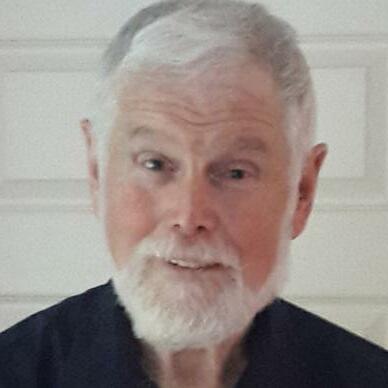
Afew weeks ago, my wife, Betsey, and I were fortunate enough to take our first trip abroad since the onslaught of COVID. We returned to Italy, one of our favorite destinations, where we focused on Venice and the surrounding area.
I LIKE TAKING PHOTOS, so, using my cellphone, I took about 3,500. On a typical twoweek vacation, I often take about 2,000 photos, so 3,500 seemed somewhat excessive. And what could I possibly do with so many?
I may be one of the last Rhode Islanders who still enjoys assembling photo albums. I will print 700 of the better photos – seven per page – to mount in a beauti ful, handmade Italian album. Then I’ll stick it on a shelf or inside a cabinet – if I can find one with room.
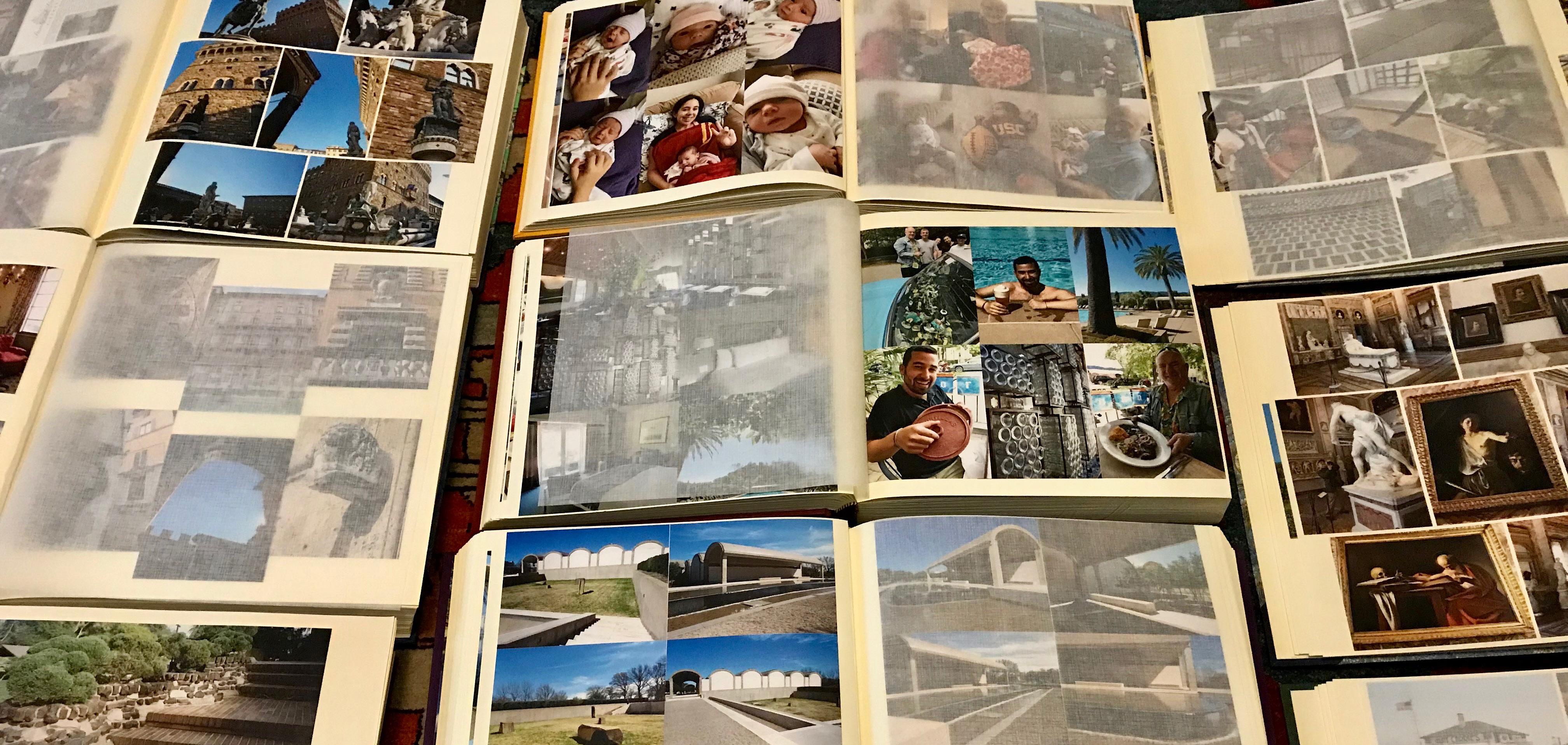
Over the decades, my penchant for album-making has become far more than a hobby. I have created more than 100 albums, holding perhaps 35,000 photos. I have never had a reason to count them, but I recently compiled an index so I can rediscover that favorite trip to Israel or remind myself what I did three summers ago or last
January.
Why have I created so many albums? Do I fear that I will forget much of the distant, or recent, past, or that our kids or grandkids will do the same? Who, after all, would be much interested in what Betsey and I have experi enced during nearly 40 years together?
My basic motivation is to become a more accomplished photographer. As much as I love art museums and art books, I’ve never had much interest in the work of master photographers. Do I endeavor to craft a near-perfect image, one that captures not only a moment, but a week, a year or even a decade? Perhaps.
And while I occasionally enjoy paging through some of my better albums, I’m much more interested in my next adventure.
So how did I develop such a photographic obsession? It’s easy to blame my late mother,
Madeline, who created her first album after Theo, my older twin, and I were born.
Mom’s older brother, George, became a profes sional photographer and a highly accomplished art collector, but I doubt that Mom ever owned a camera. Rather, she relied on my late father, Eugene, to take photos, though this never became one of his considerable accom plishments. Mom also saved all kinds of paper records. For example, nearly 1,000 letters! Eventually, reflecting frequent and distant travels, Mom created 30 or 40 photo albums.
After our parents passed away, Theo, my sister Betty and I agonized over what to do with these albums. We had not participated in most of these voyages, and we had limited space for our own ever-expanding collections.
Ultimately, we decided that we would save only some of the best albums, as well as some of the best photos from others.
No doubt my obsession with creating photo albums also evolved from some of my childhood passions for col lecting, especially stamps, but also postcards and books.
I collected photos long before I began taking them. In 1969, when I studied in Florence, Italy, during my
junior year of college, I fore saw a career as an art history professor, so I bought slides in museums shops to eventually show my students.
Gradually, I began taking my own slides of paintings, sculptures and buildings, and I still have a collection of perhaps 30,000, all neatly organized.
Is it fair to blame part of my obsession with photo albums on Betsey? I began assem bling my first, in 1983, soon after we met. After we were married, and moved far from our parents, and welcomed Molly and Michael into this world, my album infatuation steadily increased.
Travels near and far soon worsened my infatuation. These travels may have included a few days in Maine, an afternoon in Boston or a walk around the block.
I often take portraits of our home, both its exterior and interior. Flowers are an easy subject, but given my love of good food, any meal or snack can present a compositional challenge.
So what will become of my ever-proliferating album col lection? Of course Molly and Michael will be welcome to whatever they want, but they too will face physical as well as emotional constraints.
Having been deeply involved with the Rhode
Island Jewish Historical Association for decades, I would be pleased to donate some albums to its wonderful archival collection. And I’ve also been active on the board of the Rhode Island Historical Society, and I believe that a large number of my albums belong in its encyclopedic collection.
Since I also care about Temple Beth-El’s important Braude Library, perhaps I should also donate a few albums there.
Or perhaps I exaggerate my own importance when I occasionally refer to myself as “Rhode Island’s last epic photo-album maker.” But one thing I am sure of: virtually all of my albums record countless blessings.
Yes, I have suffered many disappointments and occa sional defeats, but my life has been filled with much goodness, privilege, joy and wonder.
Taking photos is almost always fun, often quite challenging and occasionally thrilling. And more often than not, the results are my quite tangible expressions of thanksgiving.
HANUKKAH HAS two mira cles: the physical victory of a tiny band of Jews over the Greeks, which had the most powerful army in the world in the second century B.C.E., and the spiritual victory of finding one unspoiled cruse of oil, which miraculously lasted for eight days instead of one.
But what exactly is a miracle, from the Jewish perspective?
In researching this question, I came across an in-depth article in the Merri mack Valley Havurah’s website, “The Jewish View of Miracles,” by Robert D. Kaiser.
In the article, published on Nov. 21, 2001, Kaiser discusses the biblical view; miracles as part of creation preplanned by God; Maimonides’, Nachmanides’ and Gersonides’ views of miracles; and non-literal reinterpretations of mira cles.
He writes, “Despite the many different views of miracles … there are some beliefs that most Jews have in common. According to Maimonides and Gersonides, God created a set of laws of nature, and all events occur in accordance with these laws. According to the Hasidic view, all events are miracles.
“Note that common ground does exist: We can consider the laws of phys ics as miracles in and of themselves, and therefore all of nature is a miracle –and should be appreciated as such. However, nature follows its course and God does not supernaturally intervene. This ideology is expressed in the Modim prayer in the Amidah, the central prayer of every Siddur.”
Based on the Hasidic view that all events are miracles, here are some events that I believe are miracles in my own life:
• I lock myself out of my condo just as my neighbor comes out of their condo and offers to help.
• I am at a local store and see a friend who I haven’t seen for awhile. I share a trying experi ence, and am immediately offered the help I need.
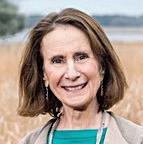
• I needed extra work, and at that exact moment, I got a phone call from a new client.

Can you relate to any of these?
• You help a friend who is ill and they get better much quicker than expected.
• The person you were just thinking about calls you.
• The stranger in front of you helps to carry your heavy bags.
• You get a letter, hug or gift that gives you (at least) eight days of joy.
THESE SMALL MIRACLES count as much as the big ones. And sometimes those small acts of kindness can actually save a person’s life. Happy Hanukkah to all. Here’s to celebrating the miracles in our lives!
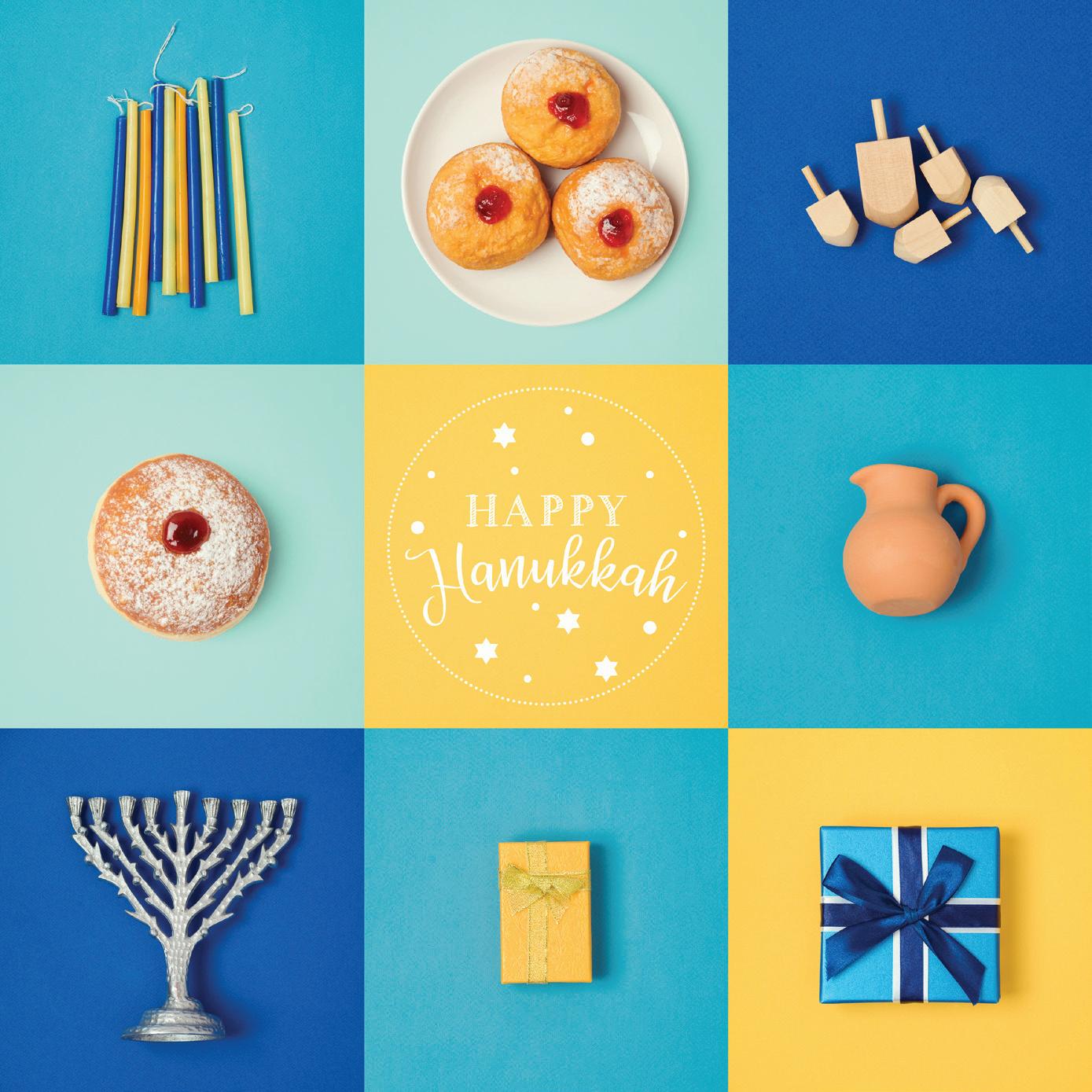
ONCE UPON A TIME , was there in fact a cactus that caught fire by itself?
I read that once: a sponta neous flaming shrub gave birth to the Torah tale of the divine voice speaking to Moses from the earthbound bush. Just a natural phenom enon of the desert that inspired a long-last ing legend ... perhaps.
The stainedglass circle above the ark at Temple Emanu-El, in Providence, depicts this image and has always captured my rapt atten tion, from my Bar Mitzvah ever onward.
Well, I was a December baby, so Hanukkah often brings the birthday menorah out from its hiding place, onto the table or the mantel or windowsill, for one and all to behold on a special candlelit holiday of lights and fights.
The family that struggled to liberate the temple and dedicate the renewal of our sacred space and the prayers of our people, that heroic band of brothers, holds a special spot for me on my cal endar. My “Roman” birthday is on the 12th, which likewise has a numerical metaphori cal meaning for me, like the iconic 12 tribes of Israel.
I love to give gifts of fine and fancy menorahs to my children and grandchildren, but once I made a mistake: I chose one that was shaped like a grove of trees, so the branches were somewhat uneven. The ritual director at Emanu-El was then “Mr. Adler,” the beloved Edward O., and he objected to my selection.


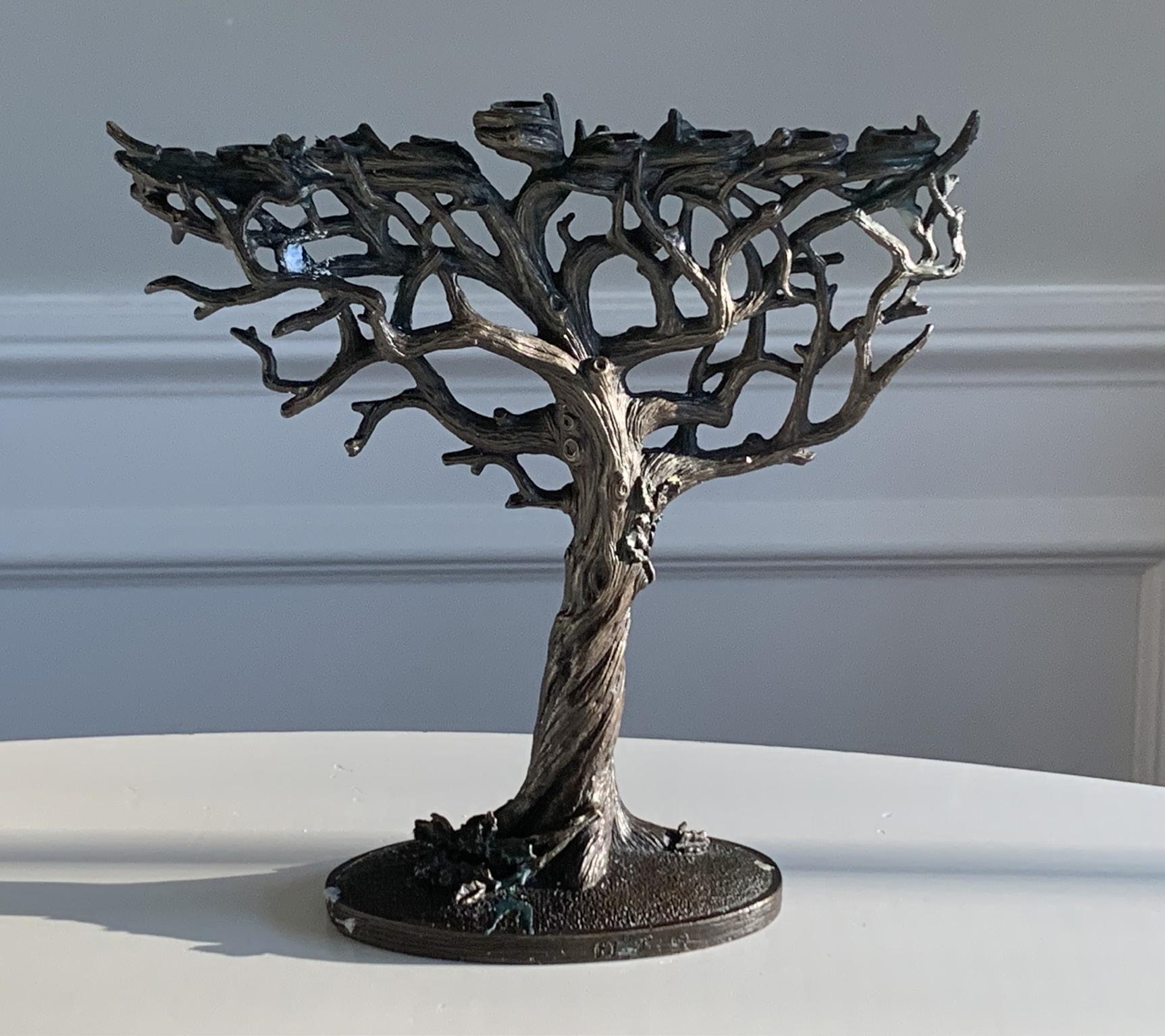
“They should all be of equal height to be kosher, except for the One,” he told me, and so I use that one merely as an outdoor decoration, not on a windowsill for all to observe and honor.
Somehow, I was always fas cinated by the way miracles seem to sum up the seasons that bring beauty, maybe magic, into our daily lives that buoy up our moods and bring us words of cheer and comfort.
Indeed, Hanukkah is not Christmas (although both are about the miracle of light,
how it vanishes and then renews itself). And every year on each calendar, I try to listen to my annual inner voice speaking to me about the words that rise from the wicks of the wee slim candles of many colors.
Like Joseph’s coat of many colors, like the Torah tales, like the Sab bath duo, or even the memorial glass minia ture lamps to summon back the souls of our dear departed, who visit us on their anniver saries: Nothing disappears quite utterly or silently. There is always the unexpected visit from our spiritual but not silent past – and they return not to haunt us, but to speak to us from beyond.
Like all of our moon months, we can live yester day, today and tomorrow. And this holiday features the stars of the firmament (one of my favorite words), which whisper to each of us and all of us, with quiet blessings and tidings of resistance and good counsel.
Why, by the way, does the burning bush instruct Moses, while listening, to take off his shoes? In a small Jewish museum in Copenhagen, I found a book in its bookshop that suggested an answer to that command: “Listen” with your feet on the ground. That volume claimed that Jews serve as cobblers to respect the earth itself!
I was intrigued, touched, even inspired, by that rather subtle invitation to connect all the tales in the Torah to whatever themes strike the reader as relevant, useful, adaptable, to whatever chap ters in the chronicle of our people, our species, unfold in our hourly history.
So happy holiday. Wiggle your toes freely, look up at the stars in the skies above, stand with and for us Jews every where, and admire the trees, their leaves, their imprints on the sidewalk, even their branches, which somehow speak to us.
MIKE FINK (mfink33@aol.com) teaches at the Rhode Island School of Design.
With a Jewish co-founder, it was just a matter of time before the world’s only bobblehead museum unveiled Hanukkah bobbles.
THE NATIONAL BOBBLEHEAD Hall of Fame and Museum, in Milwaukee, was founded in 2019 by Phil Sklar, a Jewish Illinois native, and his friend, Brad Novak. The museum has 7,000 bobble heads on display, including some manufactured by Sklar and Novak.

Bobbleheads date back to the late 1700s, Sklar said in an interview with the Jewish Telegraphic Agency. A famous painting of Queen Charlotte – a replica of which hangs in the bobblehead museum – shows two figu rines behind the monarch, with heads that bobble.
In 2021, the museum unveiled its first-ever Hanukkah items: a Bobble Menorah that features nine bobbling “flames” and comes in three color patterns, and a Bobble Dreidel on a geltshaped base.
“Having the candles with the flame bobbling and the dreidel on a spring, we thought was pretty unique,” said Sklar. “It was some thing that was tasteful and that people would enjoy displaying on Hanukkah, or with their Judaica collec tion.”
JTA spoke to Sklar about how a unique collection turned into a one-of-a-kind museum, how he uses bob bleheads for a good cause, and, of course, which famous Jews have their own bobble heads.
This interview has been edited and condensed.
Q: With any collection like this, the first question has to be: How did you get into bobbleheads?
A: My dad collected baseball cards, and he got me into collecting when I was growing up. Brad [Novak]
was working for a minor league baseball team in the early 2000s, and they gave away a bobblehead for the first time in 2003. We decided the bobblehead was sort of cool, and the [Milwaukee] Brewers and Bucks and local soccer and hockey teams were giving out bobbleheads. So we started to circle the bobblehead dates on the calendar, since we were already going to several games a year anyway as big sports fans. The collection sort of grew from that.
Q: How did this interest turn into the world’s only bobblehead museum?
A: The collection grew out of traveling. We went on a journey to try to go to all the Major League Baseball stadiums, and as we traveled, we’d go to different museums in local places. Several times we’d either go to the stores in the area of the stadium, or antique malls, and just pick up some bobbleheads from the area to bring back.
Before we knew it, we were doing some buying, trading and selling on eBay, in our free time. Then in 2013 we set
out to produce a bobblehead for the first time, of a friend of ours who was a manager for the University of Wiscon sin-Milwaukee sports teams, and also a Special Olympian. We thought it would be a cool way to honor him.
During that process, we realized there was a need in the market, an oppor tunity to produce bobble heads – people or things that otherwise haven’t had bobbleheads produced – and market them.
At the time, our collection was numbering in the 3,000 range. I don’t even know how we got that many. We were running out of room for them. It’s a lot easier to store 3,000 baseball cards – you can get one box and store them. But 3,000 bobbleheads take up a lot more room.
We started brainstorming, and realized, hey, there’s no museum in the world dedi cated to bobbleheads. There’s museums dedicated to mus tard and spam, and a bunch of other random things. So we started to do market research on the museum side, and November 2014 was when we announced the idea for the museum.
Q: Tell me about the collection. How many bobbleheads do you have now, and what are some of the highlights?
A: We have 7,000 unique bobbleheads on display in the museum. The collection itself is now numbering in the 10,000-11,000 range. We’re getting in new bobbleheads pretty much daily. There are teams sending them in, organizations, people across the country. It’s really everything from sports to pop culture, politics, music, movies, TV, comics. Really anything and everything that can be turned into a bobblehead, including the menorah and the dreidel.
Q: Do you have a personal favorite bobblehead?
A: The one of [friend] Michael is sort of the one that sparked the whole idea for the museum, so that’s my sentimental favorite. He’s also Jewish. We didn’t meet because of being Jewish, we just saw him around campus when we started going to school and got to know him. Then we got to know his family, and found
out we went to the same congregation.
Q: What has the reception been to the museum? How did the pandemic impact your work?
A: We’ve been blown away by the reception. We’ve had visitors from all 50 states and I think 25 different countries.
We opened on February 1, 2019, and then closed for about 14-and-a-half months in March 2020 because of the pandemic. Luckily, we were able to produce a ton of bob bleheads during that time. In the beginning of April was the first Dr. [Anthony] Fauci bobblehead .… We were able to keep busy, keep everybody employed that works for us, and also do something for a good cause during the pandemic.
Q: With some unique collections, there can be subcultures that develop within particular groups –the cult-like popularity of the band Phish among Jews comes to mind. Is there any bobblehead subculture that
you’ve seen?
A: There definitely are various bobblehead subcultures. There’s definitely people out there who collect Jewish figures and bobbleheads. Or, usually, it’s their favorite team or player. There are definitely Grateful Dead [bobbleheads] – quite a few different bobbleheads, and people try to collect all of them. There are people who are political, they want all the presidential- or historical-related.
The Wisconsin Jewish Chronicle did a story, and we sent them pictures of the different Jews that have been depicted in bobbleheads.
Sandy Koufax, Ruth Bader Ginsburg, a member of Kiss, a wide variety of people. It’s sort of fun to see, there’s more [Jews] than we had anticipated when we were going through the list.
Q: How do you decide who to make?
A: Every day we’re coming up with new ideas. Staying in tune with the news, social media and trending topics is definitely helpful. But then we have a long list of general ideas. Like, there hasn’t been a turkey bobblehead in a long time, and we have a series of bobbleheads where holiday characters are sitting on a shelf. So we have a turkey on a shelf coming out for Thanksgiving. Things like that, we’ll identify sometimes years in advance. A lot of them take some time to come to fruition. But it’s more, what do we think people will enjoy or buy? And we go from there.
and then aisles of Christmas stuff. We could definitely help increase that assortment. They’re not going to be at Target or Walmart this year, but it could be something that in future years could be added to that assortment for a broader audience to see and to purchase.
Q: Are there any other Jewish holidays that you think would be particularly conducive for a bobble?
A: Yeah, I think my aunt actually sent a list. There were some characters like Judah Maccabee. We could do Purim. We’re sort of waiting to see how the Hanukkah bobbleheads go. There’s also some other fun things that we could turn into bobbles. A bobble hamantashen just came to mind. But I don’t know, it might get people to try to eat it or something. We’ll put a warning on the package.
Q: A lot of your products and launches are connected to charities. Why is it important to you to use the bobbleheads to support these causes? Does your Jewish identity have any impact on that?
A: I think it probably does have something to do with my upbringing. Being taught to give back, and taught about tzedakah [charity]. And we’ve seen other bobblehead companies start to do the same thing, and they hadn’t done it in the past, so I think we’ve actually inspired other people.
Kindle the Menorah on each of the eight nights of Chanukah. See below for the times, number of lights and the order of kindling. The Chanukah lights are kindled in the front window or by a doorway.
You may use olive oil or paraffin candles which are large enough to burn until half an hour after nightfall. Use the shamash to kindle the lights and place it in its special place on the Menorah.
All members of the family should be present at the kindling of the Chanukah lights. Students and singles who live in a dormitory or in their own apartments, should kindle in their own rooms.
Friday afternoon, the Chanukah lights (which will burn until 1/2 hour after nightfall) are kindled before the Shabbat candles. The Menorah should not be relit, moved or prepared, from the time Shabbat candles are lit, until Shabbat ends and the Havdalah prayer is recited
Before kindling the lights, recite:
1. Bo-ruch A-toh A-do-noi E- lo-hey-nu Me-lech Ha-o-lom A-sher Ki-di sha nu Bi mitz vo sov Vi tzi va nu Li had lik Ner Cha nu kah.
2. Bo ruch A toh A do noi E lo hey nu Me lech Ha o lam She a sa Ni sim La a vo sey nu Ba ya mim Ha heim Bi z’man Ha zeh.
Blessed are You, L rd our G d, King of the universe, who wrought miracles for our fathers in days of old, at this season.
The following blessing is recited on the first evening or on the first time one kindles the Chanukah lights this year:
A: It was probably around this time last year, sort of close to Hanukkah, and we were thinking there hasn’t really been anything Hanukkah-related when it comes to bobbleheads. And I mentioned to my aunt who lives in Omaha, she works at the [Jewish Community Center] in childcare there, and she really liked the idea and mentioned it to a few other family members, and they thought it was pretty cool. So we had a rendering made, and we went through some different iterations of the design, and thought, yeah, this would be pretty cool.
You go to Target or dif ferent stores, and you see a little small display of Hanuk kah-related merchandise
We’re not doing it to boost the sales, but we’ve seen that when it has that good cause, it can definitely help boost the sales, and boost the excitement around it as well. But we’re really doing it to give back to causes and to get people engaged.
3. Bo ruch A toh A do noi E lo hei nu Me lech Ha o lom She he chi ya nu Vi ki yi ma nu Vi hi gi ya nu Li z’man Ha zeh.
Blessed are You, L rd our G d, King of the universe, who has kept us alive, and has preserved us, and enabled us to reach this season.
Friday. Dec. 23, light before 3:59pm Shabbat Dec. 24, light after 5:06pm
Other nights any time after nightfal approx. 4:50pm
Wednesday, Dec. 21
After Nightfall
“This was my second time there. The first time was a major service one year ago and everything got completed correctly and on time This time was just an oil change and inspection while I waited Again everything went well, professional and timely service, what more can you ask for?”
Steve O , Warwick, Mercedes Benz E430
Sunday, Dec. 18 After Nightfall
Monday, Dec. 19 After Nightfall
Tuesday, Dec. 20 After Nightfall
Thursday, Dec. 22 After Nightfall
Friday, Dec. 23
Saturday, Dec. 24 After Shabbat 5:06pm
Sunday, Dec. 25 After Nightfall
Provided as a public service by Jewish Rhode Island. Compiled by Chabad of RI
Q: How did you decide to create the Hanukkah bobbles? What is your goal with the products?
This story was originally pub lished on HeyAlma.
MOST OF THE WOMEN in the Bible fall into a few distinct categories. There are the wise wives and mothers like Sarah, Rebecca and Yoch eved, required to make hard decisions to protect their children. Then there are the tragic romantic damsels, the ready-for-soap-opera players: Rachel, Leah and Bathsheba. Silent sufferers who survive humiliation, poverty and assault with grace – like Tamar, Ruth and Esther – are credited with saving Jewish continuity and tradition. But supporting figures who speak their minds, women like Miriam and Michal, often pay for their unruliness, their misdeeds defined in the eternal text as a warning for generations to come.
And then there’s Judith. Most people learn about Judith in art history class from Artemisia Gentiles chi’s iconic Baroque paint ing, “Judith Beheading Holofernes” (1620). I learned about her in day school as a third grader. I must have been 8 or 9; my teacher, probably Rabbi Gold or Gordon, went over the story of Hanukkah for the umpteenth time.
Greeks, Maccabees, teensy weensy bottle of oil – I’d been there before. But then he started to add in new details: a tyrannical Greek general named Holofernes, the sort of military leader who never rides out into battle but still
claims his legion’s body count as a personal victory. The scale of his wickedness is rivaled only by that of his security detail. Somebody needs to kill him (and take his army down with him), but nobody can get close enough.
Enter Judith. She sweettalks her way into his tent, plies him with cheese and wine until he passes out, lops off his head and brings it back to the Jewish resistance on a pike.
I can pinpoint the exact moment my pre-adolescent heart short-circuited.
Growing up in a tight-knit Orthodox community and attending Jewish day school, I learned a lot of stories from Tanakh, the Hebrew bible. The ones I didn’t learn in school, I read on my own time whenever I ran out of children’s fiction. I quickly learned that the women in these stories were not – could not be – like the outspoken warrior-princesses of my favorite grade-school fantasy novels.
When Miriam dares to criticize Moses’ treatment of his wife, God infects her with a spiritual malady and she is forced outside of the camp, banished from the presence of God. Bathsheba does not play an active role in her relation ship with King David: she neither protests when King David makes advances upon her, nor does she aid him in plotting to kill her husband. Ruth’s plan to save herself and her family from poverty hangs on the involvement of a man. These are stories of women existing, manipulat
ing the rules of, and suffering through a man’s world. Either they live to support righteous men, or they need men to save them and act for them.
Judith is the exception.
In the storybook narra tive fed to me as a child, she takes orders from no one but herself. She’s oddly detached from the male figures of the Hanukkah story, the Has moneans.
There is no male military leader behind her assignation mission. Judith doesn’t have a husband; she’s a widow who never remarries. Even better, while she gains Holofernes’ trust by seductive means, she never actively seduces him. Unlike Yael, the other woman in the Jewish tradition to slay a general, the Sages do not hypersexualize her in their commentary. She’s never married off to some righteous man as a reward or scolded by the midrashim for some mild infraction. She exists in her own right, independent of and unhindered by the men around her.
As an adult, I sought out Judith’s story at its source, “The Book of Judith.” In this version, Holofernes has besieged Judith’s city. Unable to watch his people die of thirst and starvation, the local leader, Uzziah, makes a public demand that God help them or he’ll surrender the city to their enemies. It is
Judith who criticizes Uzziah for this dangerous ultimatum, and it is Judith, portrayed as devout yet practical, who refuses to wait for God or to let desperate men decide the fate of her city.
In her painting, Artemisia Gentileschi depicts a mixture of the two stories, the fairy tale and the ancient text. On the canvas, Judith holds down Holofernes with the help of a handmaid. Neither woman is beautiful, and neither is the murder being committed. Judith slowly saws through the general’s neck, her eyes filled with fury and deter mination. There is nothing gentle or mod est or even heroic about her. This is a woman doing what she believes she has to do; she does not shirk her responsibility, but she also does not revel in the bloody act. Nobody showed me that picture when I was 8. If they had, I would have known that Judith was more complex and more real than the sexy warrior princesses of my favorite novels.
Already, at 8, the idea that my influence on my world was limited to my influence on the men around me, that I could never directly alter destiny by myself, was frightening. The quiet message that you cannot just be, but must become a wife and mother, instead, followed me from my elementary school classroom into an ultra-Orthodox high school where I was taught
that a woman’s role was to rule through whispers and hints, to lead only in the shadows, to speak through the men around whom her life revolves. One teacher told me that women were created in the image of God – but the version of God that did not perform open miracles, the God who preferred to let human beings believe they controlled the narrative.
And yet, still, there was Judith. Judith who takes no orders, who invades a man’s tent and walks out with his head on her pike. Judith who attacks alone, who is nei ther punished nor silenced. Judith, who alters the destiny of her people, my people, inde pendently of her generation’s male heroes. Judith, who does the work of the God of open miracles, the God who splits the sea – the God who does not merely influence, but acts.
Every Hanukkah since I learned her story, I do not just commemorate the victory of the small against the mighty, the miracle of a small bottle of oil lasting for eight nights. I celebrate the human miracle of a Jewish woman defined not by her marriage or chil dren, but by her actions alone. And I pray that even in the ultra-Orthodox community of my youth, this may cease to be a miracle during my lifetime.
THE JEWISH ALLIANCE of Greater Rhode has set up a Hanukkah display at the Rhode Island State House outside of the entrance to the Senate chamber and underneath the rotunda. Eight posters feature art from Artists’ Colony of Jerusalem (which is located a short walk from Jaffa Gate). You can view the posters whenever the State House is open to the public.
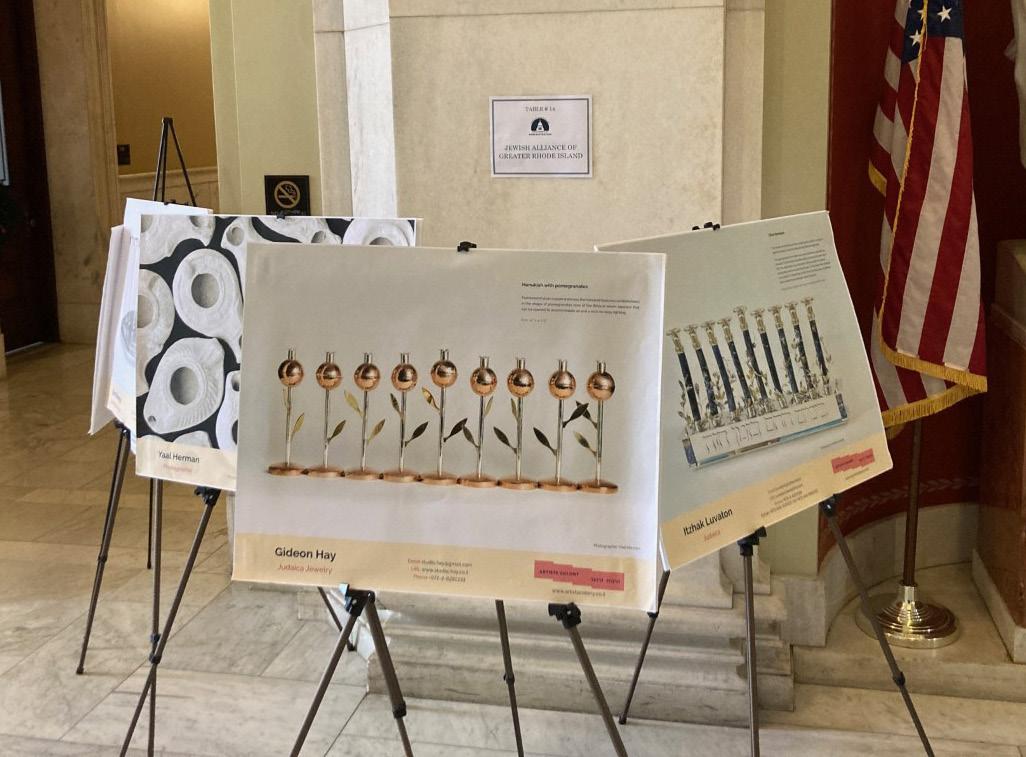
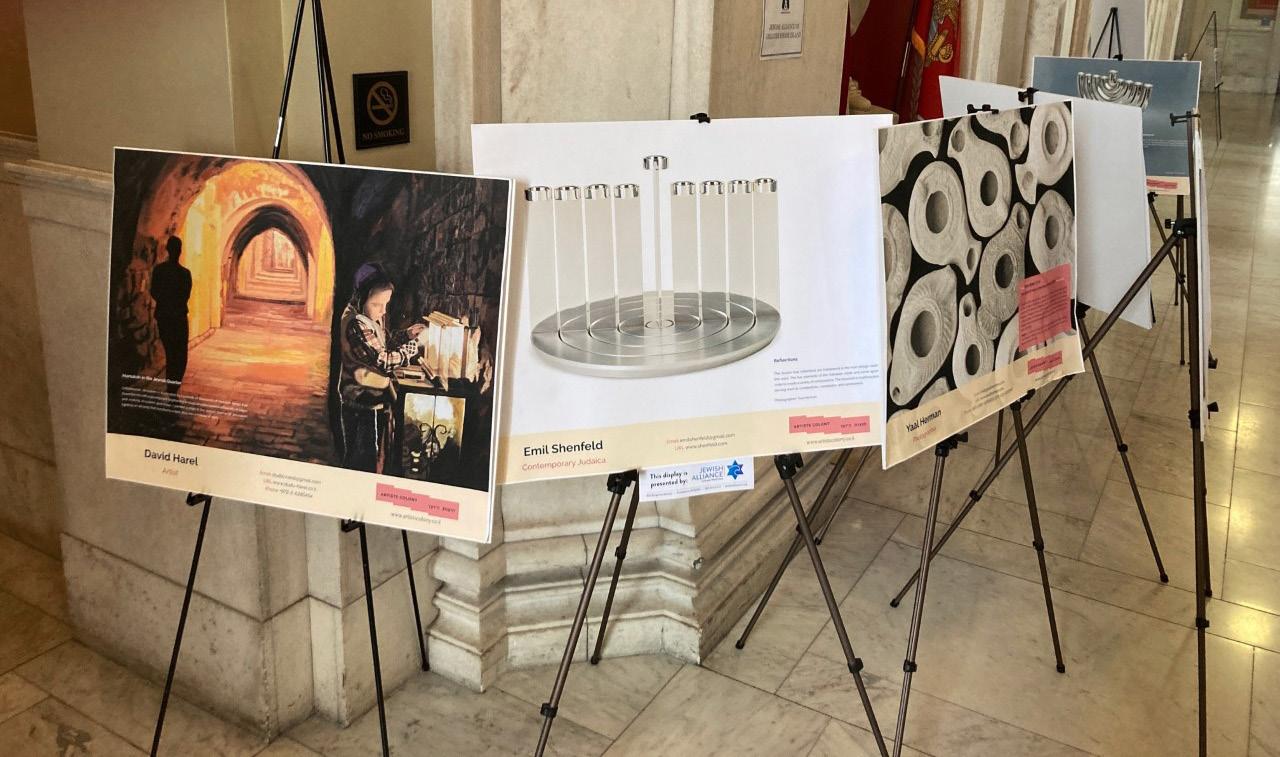
ORA DAMELIN is a Los Angeles based writer, Hebrew School teacher, and amateur baker.
‘As an adult, I sought out Judith’s story at its source.’
One of life’s great achievements is the ability to leave a lasting legacy.
We can help.
Contact President and CEO Neil Steinberg at nsteinberg@rifoundation.org or (401) 427-4007
�e most important thing you can do while you’re here is to ensure the world will be better when you’re not.
Rachel Cohen stared at the full box of candles. Since her parents had separated, getting ready for Chanukah wasn’t the same. Four candles were broken. Of course.

She chewed on her lower lip.
I n the old days, her family had gathered around the kitchen table, and argued about who would light the shammos and who would light the first candle.
“YOU DID IT LAST YEAR,” her twin brother Yakov always insisted.
“No,” Rachel would counter. “I lit the sham mos, which is better.”
“No, it’s not. The first candle is best.”
“Children, hush,” their mother, Sarah, would say as she flipped a potato latke. “You’ll disturb your father.”
Their father, Isaac, would be looking at his little book, pretending to mumble prayers, while holding back a smile.
The compromise was always the same. Rachel would light the shammos, which was better, and Yakov would light the first candle, which made him happy too.
This year, her parents lived in different houses, and Chanukah wouldn’t be the same. Rachel didn’t know what to do. She felt small, helpless, and embar rassed.
In the village of Chelm, twelve-year-old Rachel Cohen was known as the smartest young girl, someone whose wisdom was both sought after and respected.
“If you don’t know what to do,” everyone said, “ask Rachel Cohen, and what ever she says, do that!”
Rachel knew that she wasn’t really that brilliant. But whenever someone asked her a question, she either had the answer, or knew how or where to find it.
“The secret of being wise,” Rabbi Kibbitz had once taught her, “is to listen quietly for as long
as you can without say ing anything. Ask a few questions, and then nod your head, and wait until the answer arises. Most of the time, they’ll think of it themselves, and then give you all the credit.”
Rachel nodded her head and asked herself, “But what does a so-called wise person do, when they don’t know the answer?”
She looked around the kitchen, which was also silent.
Then it came to her, and she smiled. * * *
The bell over the door to Mrs. Chaipul’s restaurant rang, and without looking up, the elderly woman behind the counter told Rachel, “Your mother’s gone to the market in Smyrna to get potatoes for the latkes.”
“Can we talk?” Rachel asked quietly.
Mrs. Chaipul glanced at the young girl, nodded her head and shouted, “All right, the restaurant is closed until lunch for a health and safety inspec tion!”
Most of the men finished drinking their tea or cof fee, put on their coats and headed to the door.
Reb Cantor the merchant didn’t budge. “I thought you already paid the health and safety inspec tor.”
“This is for your health and safety,” Mrs. Chai pul told the merchant. “Because I won’t guaran
tee it if you stay.”
Reb Cantor smiled, stood, and kissed Rachel on the top of her head as he left the restaurant.
Mrs. Chaipul locked the door behind him, and let Rachel to the table in back, where she’d already placed two cups of hot herbal tea.
The young girl and the old woman sat across from each other, lifted their cups at the same time, and blew.
for the lunch crowd.

* * *
That year, Rachel Cohen changed their tradition again.
“Whether we are with mother or father,” she told her brother, “instead of lighting eight or seven or one, each night we will take turns lighting all eight Chanukah candles.”
Yakov was upset. “So many candles seems wasteful. And that isn’t the way Chanukah is supposed to be celebrated!”
Mrs. Chaipul listened as Rachel explained, “On the first night of Chanukah, our family starts with eight candles ablaze, and then we light one fewer each night. This, my father says, echoes the Macca bees’ fear that the oil in the eternal light might burn out at any moment.
“But on the last night, where there would only be one candle and the shammos, we changed the tradition and light all eight again. For us, the last night is a true celebration of joy. My mother says it’s just nice to have all the extra lights.
“This Chanukah, Yakov and I are supposed to take turns, one night with Mama and the next with Papa. I want things to be the same, but no matter how hard I try to rearrange it, the number of candles always comes out uneven. Plus, four of our candles are already broken, which seems like a sign!”
Rachel waited for Mrs. Chaipul to tell her how to solve the problem.
But Mrs. Chaipul didn’t say anything. She was married to Rabbi Kibbitz, and kept her own name, which is another story. She’d often chided her hus band that it was better to keep your mouth shut than to put your foot into it.

Rachel sighed. She sipped her tea.
Then she smiled, and nodded. She suddenly knew what to do. “Thank you, Mrs. Chaipul. I need to hurry and buy more candles.”
Mrs. Chaipul gave Rachel a hug. “I didn’t do anything. But I wish you well.”
Rachel ran from the restaurant, and Mrs. Chai pul reopened the front door
“Everything changes,” Rachel said, “and it’s up to us to make it new again. This way, the time we spend together will be even brighter.”
“All right.” Yakov shrugged. “But I light the first candle.”
“You did it last time.” Rachel smiled. “But that’s fine. Lighting the sham mos is better...”
IZZY ABRAHMSON is the author of “Winter Blessings” and “The Village Twins.” He’s also a pen name for storyteller Mark Binder. Find the books on Amazon, Audible with signed copies and links to the audio version of this story at IzzyAbe.com and MarkBinderBooks.com
NOTES: A shammos is the candle that is used as a match to light the other candles. Latkes are deep fried potato pancakes, delicious! While most people follow the tradition of Rabbi Hillel, and light one candle the first night of Chanukah and adding candles, the followers of Rabbi Shammai start with eight and work their way down. Rachel Cohen is not yet a rabbi, but who knows what the future will bring.
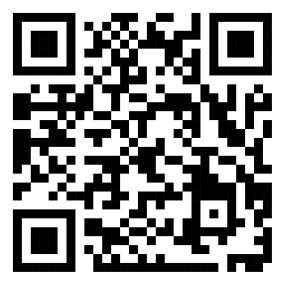
NEW YORK CITY – Temple Emanu-El was host to a dedication ceremony on Oct. 20 for the U.S. Postal Service’s vibrant new Hanukkah stamp.
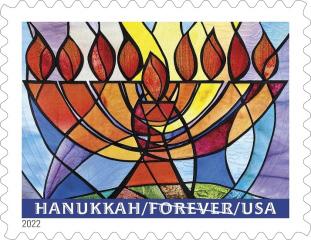
LORI DYM, U.S. Postal Service managing counsel for procure ment and property law, opened the dedication ceremony by say ing, “On behalf of the 655,000 men and women of the United States Postal Service, I am honored to participate in the unveiling of our new stamp celebrating this joyous Jewish holiday.”
Dym was joined by Susan Krantz, president of Temple Ema nu-El; Rabbi Matt Cohen; Jeanette Kuvin Oren, the stamp’s designer and artist; and others.
“Temple Emanu-El is honored that the United States Postal Ser vice approached our congregation to host the first-day-of-issue cer
emony for the launch of the 2022 Hanukkah stamp,” Krantz said.
Cohen said, “While our Hanuk kah menorahs are not yet kin dled, this communal celebration reminds us that despite all odds, throughout time and history, the lights of the Jewish people have miraculously continued to grow brightly and illuminate the world with wholeness, blessing and peace.”
The stamp art features a design from an original wall-hanging. The fiber art was hand-dyed, appliquéd and quilted to form an abstract image of a hanukkiah.
The blue and purple colors rep resent the sky, while the greens and browns represent the earth. The bright yellows and oranges represent the Festival of Lights, as Hanukkah is also known.
Along the bottom of the stamp, the words Hanukkah, Forever and USA appear in white capital letters.
News of the stamp is being shared on social media with the hashtag #HanukkahStamp. Followers of the Postal Service’s
Facebook page can view the stamp’s story at facebook.com/ usps.
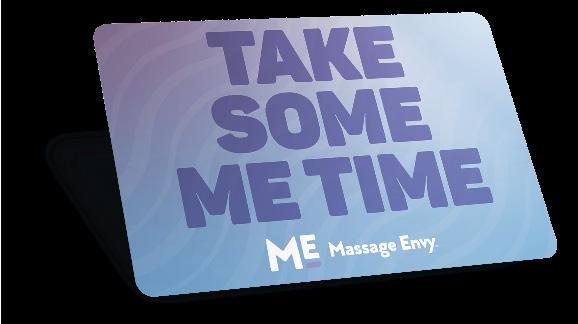
Customers may purchase stamps and other philatelic prod ucts at usps.com/shopstamps, by calling 844-737-7826, or at post offices nationwide.
Hanukkah begins on the 25th of Kislev in the Hebrew calendar, a date that falls in late November or December on the Gregorian Calendar. This year, Hanukkah begins at sundown on Dec. 18.

(JTA) – A BBC article about an attack on a bus full of Jewish students celebrat ing Hanukkah last year contained “significant edi torial failings,” according to a report released by the British government’s media regulator on Nov. 7.

Last November, the bus was driving along London’s Oxford Street when it was accosted by a group of men who made obscene gestures and remarks and report edly threw a shopping basket at the bus rid ers. The BBC reported that an audio record ing from the incident contained anti-Muslim slurs coming from someone on the bus.
But the BBC had also received information indicating that the language was misinter preted at first, and that the wording could have been the phrase “Call someone, it’s urgent” in Hebrew.
“The BBC’s reports claimed that an audio recording made during the incident included anti-Mus lim slurs – which it later changed to the singular ‘slur’ – which came from inside the bus. Shortly afterwards, it received evi dence which disputed this interpretation of the audio,” the Ofcom regulator wrote.
“The BBC failed to promptly acknowledge that the audio was disputed and did not update its online news article to reflect this for almost eight weeks,” an Ofcom statement contin ued. “During this time the BBC was aware that the article’s content was causing significant distress and anxiety to the victims of the attack and the wider Jewish community.”

The November 2021 report prompted indig nation from British Jew ish groups and led to a December protest of about 200 people outside BBC headquarters, organized by the Campaign Against Antisemitism. The incident
has become fodder for crit ics of the BBC who say the network regularly reflects an antisemitic and anti-Is rael slant in its report ing, including the Simon Wiesenthal Center, which applauded Ofcom’s report.
Ofcom also criticized BBC London News’ decision to air a version of the story on TV while its editorial integrity was under review.
“This is a welcome find ing from Ofcom and vali dates the serious concerns of the Jewish community,”
said Claudia Mendoza, co-chief executive of the Jewish Leadership Coun cil, in a statement to the London Jewish Chronicle. “We look forward to hear ing what actions the BBC will be putting in place to stop this from happening again.”
Soon after the initial con troversy, BBC’s executive complaints unit found that the original story did not meet editorial standards; the broadcaster officially apologized in January and amended its story.
“While Ofcom has found that our reporting was not in breach of the Broad casting Code, the BBC’s Executive Complaints Unit ruled in January this year that more could have been done sooner to acknowledge the differing views about what could be heard on the recording of the attack,” a BBC spokesman said Nov. 7. “The BBC apologized at the time for not acting sooner to highlight that the contents of the recording was contested.”
The BBC failed to promptly acknowledge that the audio was disputed…


JERUSALEM (JTA) – In a supermarket here, Ohad David made a beeline for the most expensive olive oil in the store.
He took three bottles of the award-winning Midnight Coratina brand, which goes for about $3 per ounce. It has “medium potency, green fruitiness and a green-leaf, grassy bouquet,” according to its description on the website of Ptora, the boutique olive oil factory that makes it.
BUT DAVID, a 40-year-old insurance agent and father of five, did not buy the oil for its taste.

Like thousands of Ortho dox Jewish consumers who buy premium olive oil ahead of Hanukkah, David purchased $160 of the stuff only to burn it in a meno rah.
Observant Israelis increasingly like to use olive oil in their hanukkiah, or menorah, instead of wax candles because of its signifi cance in the holiday’s story. Hanukkah is a celebration of how the Maccabees, after defeating the Greeks, were able to light the hanukkiah in the temple in Jerusalem for eight days with a oneday supply of oil –believed to be of the olive variety.
“Using olive oil for Hanukkah candles is not required by halakhah [Jew ish law], but in our commu nities everybody does it,” David said.
Those who do so want only 100% pure olive oil to use in their menorahs –and that has become more expensive in Israel over time because of tariffs on imports and the rising demand.
In response, some pro ducers dilute their olive oil with cheaper vegetable oils, without disclosing all of the ingredients, and lure consumers in with lower prices. The product can still be considered Kosher, but it is unacceptable for the observant Jews who want only pure olive oil in
their menorahs.

“The temptation to deceive customers is tre mendous,” Rabbi Moshe Biegel, an expert on Israel’s Kosher certification indus try, wrote in a 2020 essay on the olive-oil sector in Israel.
Israeli authorities per form inspections on dozens of brands each year around Hanukkah, and often find that oil advertised as pure
the Jerusalem Olive Oil fac tory, said about the Ptora groves. He is technically a competitor, but the two companies cooperate on some projects to leverage their respective strengths.

The olive is a national symbol tied closely to the country’s broader agricul tural history – it is even depicted in the official emblem of Israel.
contains up to 50% canola or soy oil. But, despite fines and naming the offenders online, the phenomenon persists.
For David and others in his community, the solu tion is to stick to boutique brands, no matter the cost.

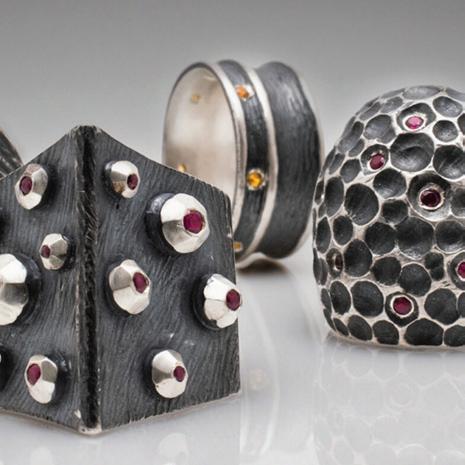
“You know there’s no monkey business because to them it’s a matter of pride, so there’s a high level of transparency and trust,” David said.
He said he discovered Ptora during a family trip to the northern Negev desert, where the factory and groves are located, about 30 miles southwest of Jerusalem.
Like many boutique olive factories in Israel, Ptora offers tours and tastings to increase their brand recognition.
“The place is magical,” Hani Ashkenazi, owner of
In 2019, Israel’s Ministry of Agriculture found that Israeli olive oil was on average double the price of its European counter parts, costing about 9 euros (roughly $10) in Israel per liter compared to 5 euros throughout much of the European Union. Israel employs a protectionist customs policy meant to level the playing field for local producers.
Both production and demand are rising steadily in Israel, a 2020 report from the ministry shows. About 30,000 tons of olive oil are sold in Israel annually, of which about 12,000 are imported. In comparison, the average annual produc tion between 1990 to 2010 was 5,000 tons. The average for the past decade has been 16,000 tons annually.
(For comparison, Egypt, with a land area 47 times that of Israel’s, produces about 20,000 tons of olive oil annually. Italy pro duces about 340,000 tons annually, and the biggest producer is Spain, provid ing about 1.7 million tons annually, or half of the world’s

‘Israeli olive oil was on average double the price of its European counterparts in 2019.’
of excavators have helped ultimately defined the Jerusalem, but may two peoples and three coexist.

WITH HENRY GREEN
Delve beneath the Holy City in a saga of biblical treasures, intrepid explorers and political upheaval. Join the author as he reveals excavations that laid the foundations for Zionism and ultimately defined much of the conflict over modern Jerusalem. Can they also provide a map for two peoples and three faiths to peacefully coexist?


December 14 at 7:00 PM | Free virtual event. Register online.
February 22 at 7:00PM
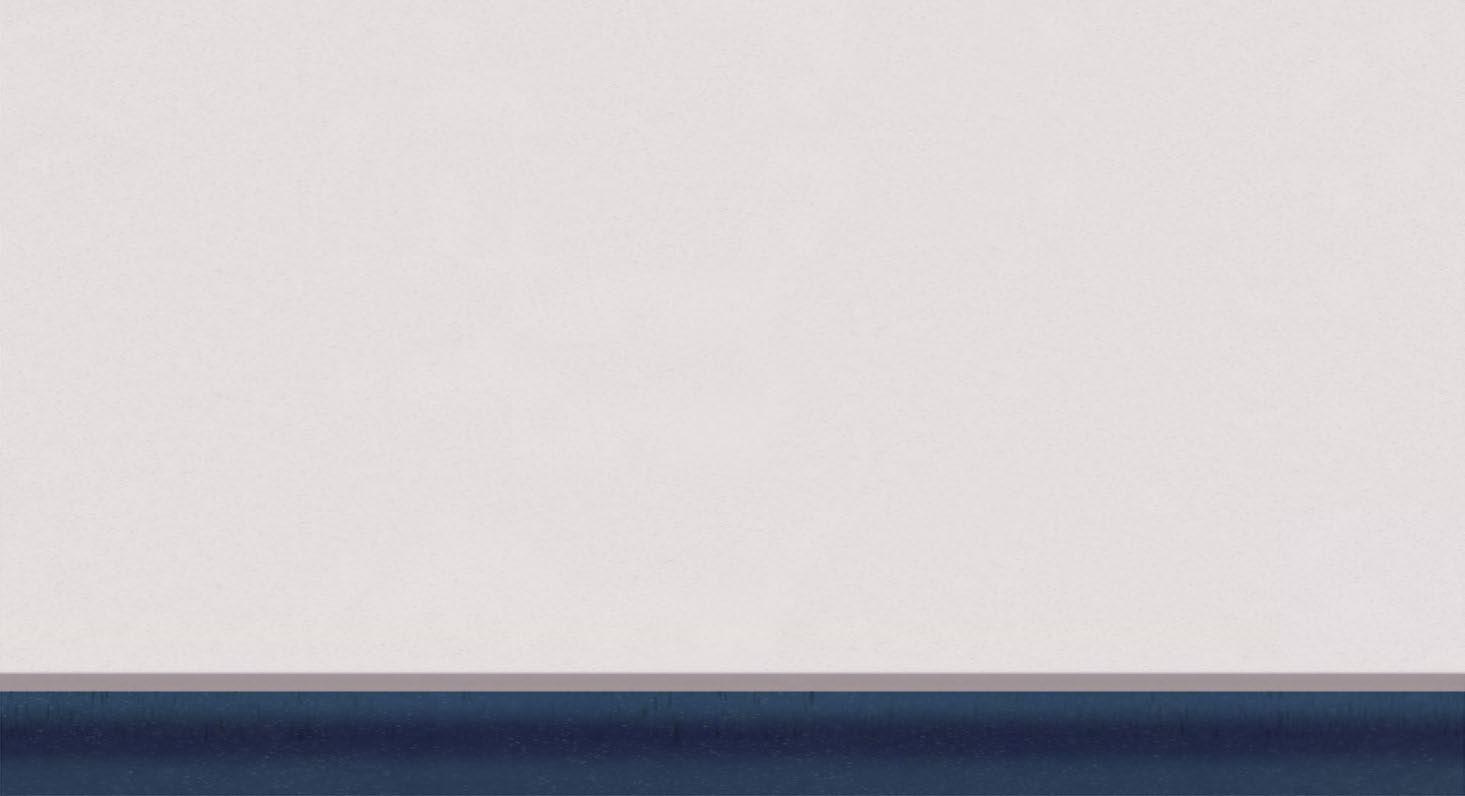
In-person at the Dwares JCC.
DIARY OF A BLACK JEWISH MESSIAH: The Sixteenth Century Journey of David Reubeni through Africa, the Middle East and Europe WITH ANDREW VERSKIN

March 14 at 7:00PM
In-person at the Dwares JCC. MORE AFTER THE BREAK: A Reporter Returns to Ten Unforgettable News Stories WITH JEN MAXFIELD
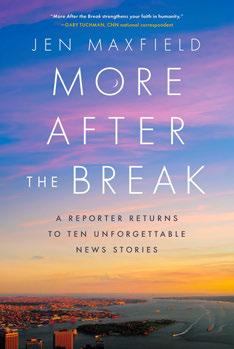
May 11 at 7:00PM

In-person at the Dwares JCC. THE POSTMISTRESS OF PARIS WITH MEG WAITE CLAYTON
JewishAllianceRI.com/behind-the-book-2022-2023/
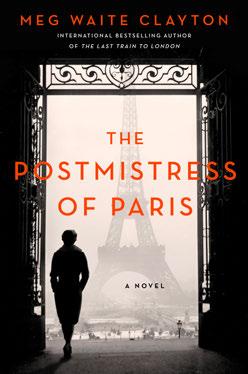
PROVIDENCE – Journalist Juju Chang brought her insights on antisemitism and Asian hate to the Alliance’s Dwares Jewish Community Center on Nov. 20, when she spoke at the Annual Campaign Thank You event.
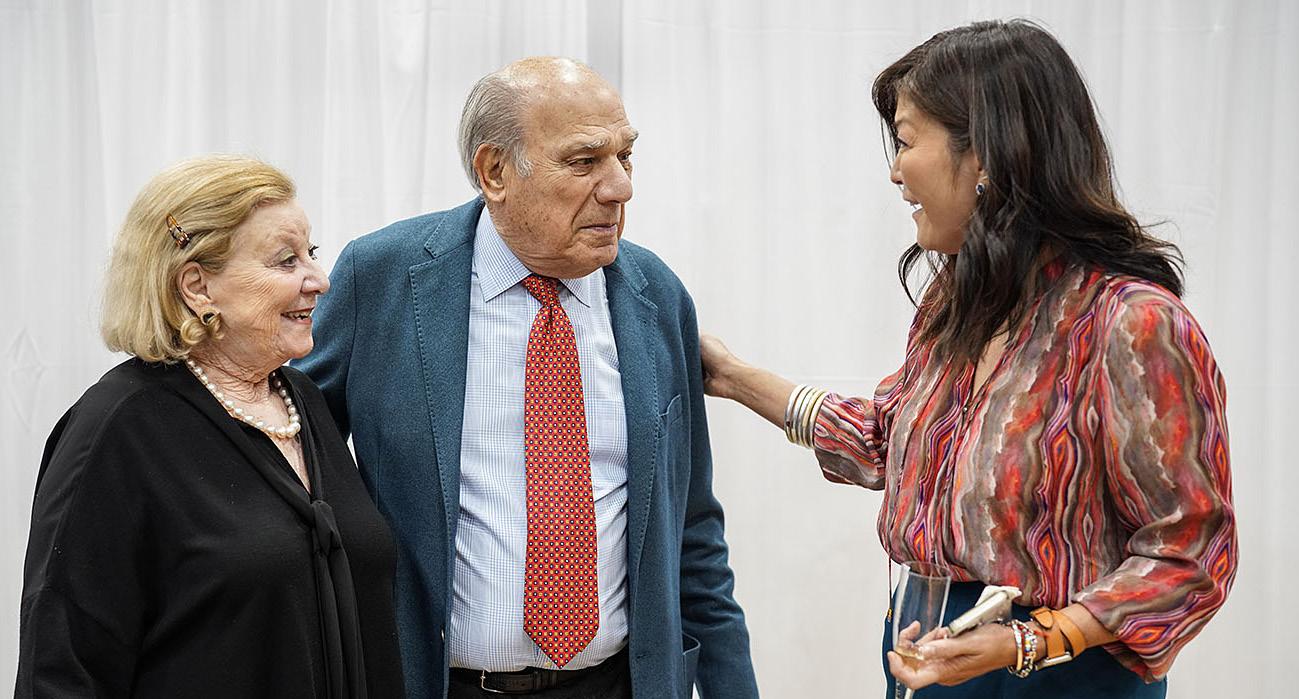
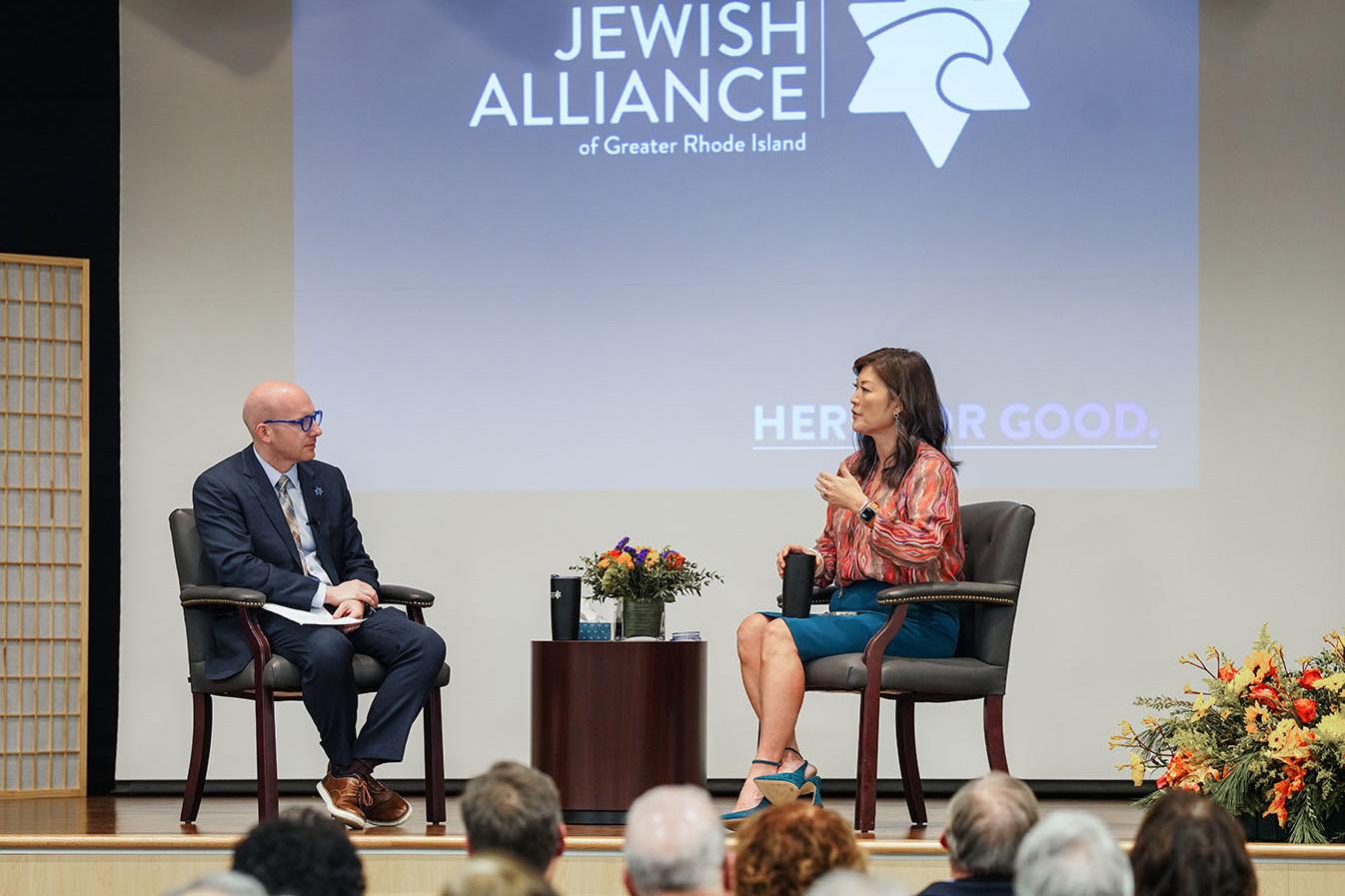
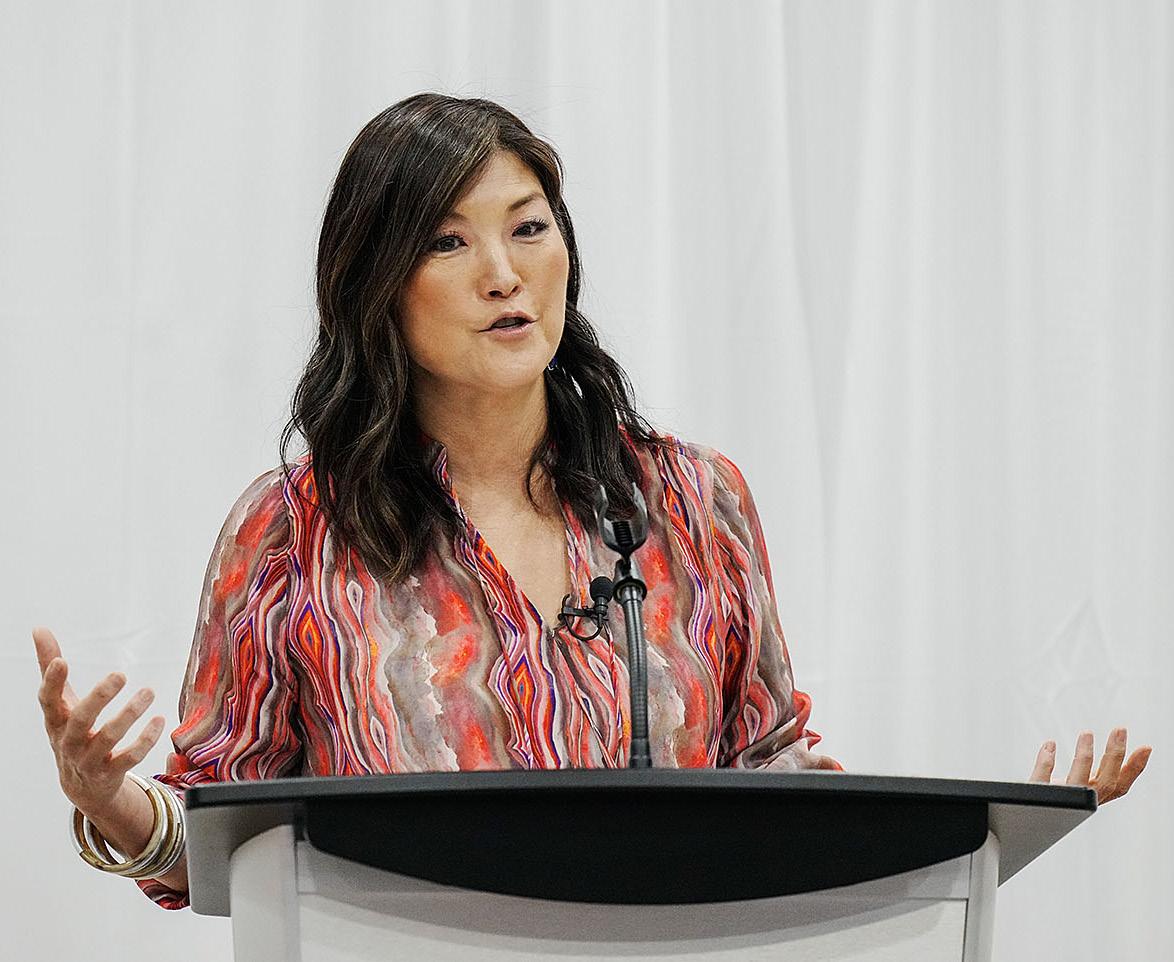
More than 120 people gathered in the JCC’s Social Hall to hear Chang discuss her Jewish journey, the rise in antisemitism, Asian hate, and bits and pieces from her 35 years in the news industry.
Chang, co-anchor of ABC’s “Nightline,” has worked hard to give a voice to marginalized communities, is active in AAPI [Asian-American Pacific Islander] advocacy and has served on the board of her synagogue in New York City.
Born in Korea, Chang was raised an atheist in California. The Stanford University grad uate said, “I came to New York with advice from my antisemitic father to ‘watch out for the Jews.’ I promptly fell in love with a nice Jewish man. I told him I’d never convert.”
But after seven years of court ship and five years of marriage, she did convert. She and husband, Neal Shapiro, have three sons, who have been raised Jewish.
Chang said that during her decades in the news industry,
she’s seen “a tonal shift.”
“I like to remind people that we [at ABC News] have lawyers who look at every word we say. It’s different in cable news. There is regular news and the opinion page [mostly evening shows]. That’s a distinction that’s often lost on people.”
On rising hate incidents against Asians, she said, “This has noth ing to do with the [COVID] virus and everything to do with fear. The Jewish community knows this well.”
Chang suggested that build ing community, as the Jewish Alliance of Greater Rhode Island strives to do, is one way to combat hate and increase understanding.
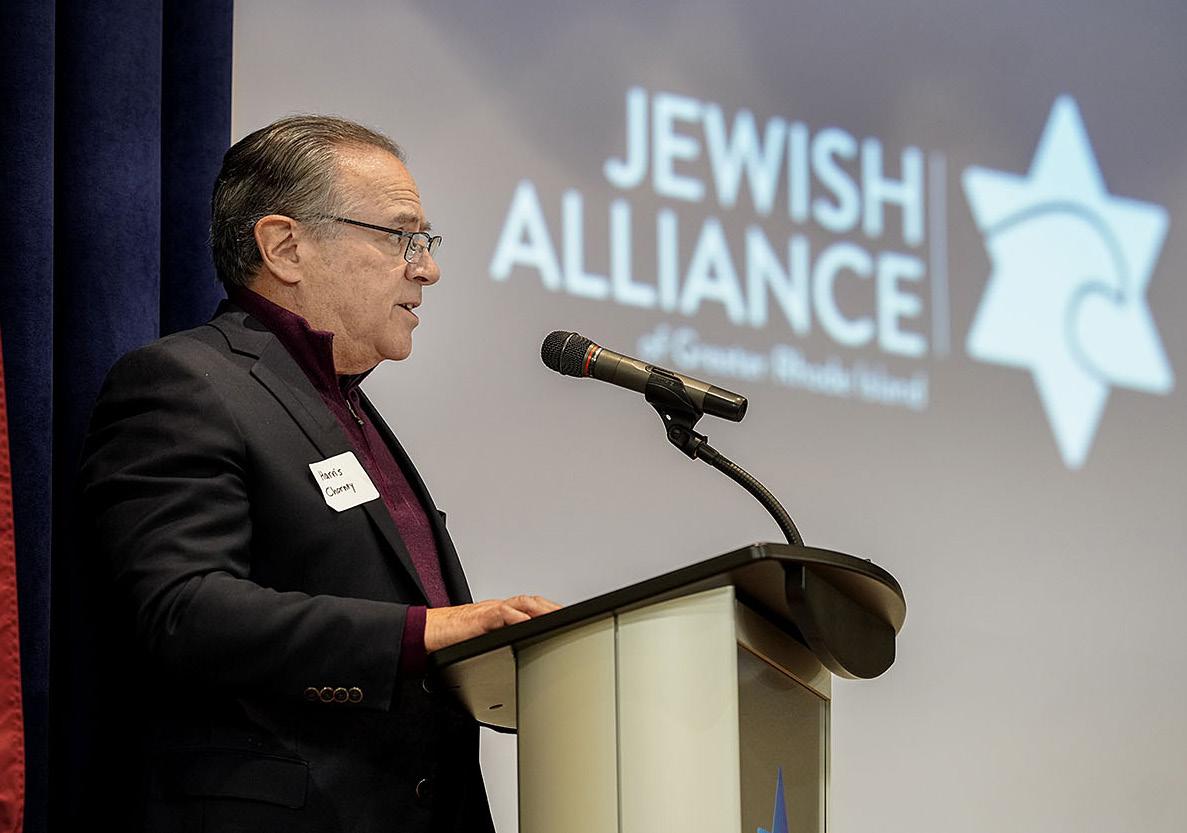

She pointed out that both the Jewish and the Asian communi ties are quite diverse, and said both communities need to make all members feel welcome.
At the end of Chang’s talk, Alliance President and CEO Adam Greenman asked her several Jewish-oriented questions in a “lightning round” modeled on his popular “Chutzpah!” podcast. It turns out that Chang likes matzah ball soup, bagels with lox, and Passover – but she would add kim chi to the seder plate.
FRAN OSTENDORF (fostendorf@ jewishallianceri.org) is the editor of Jewish Rhode Island.
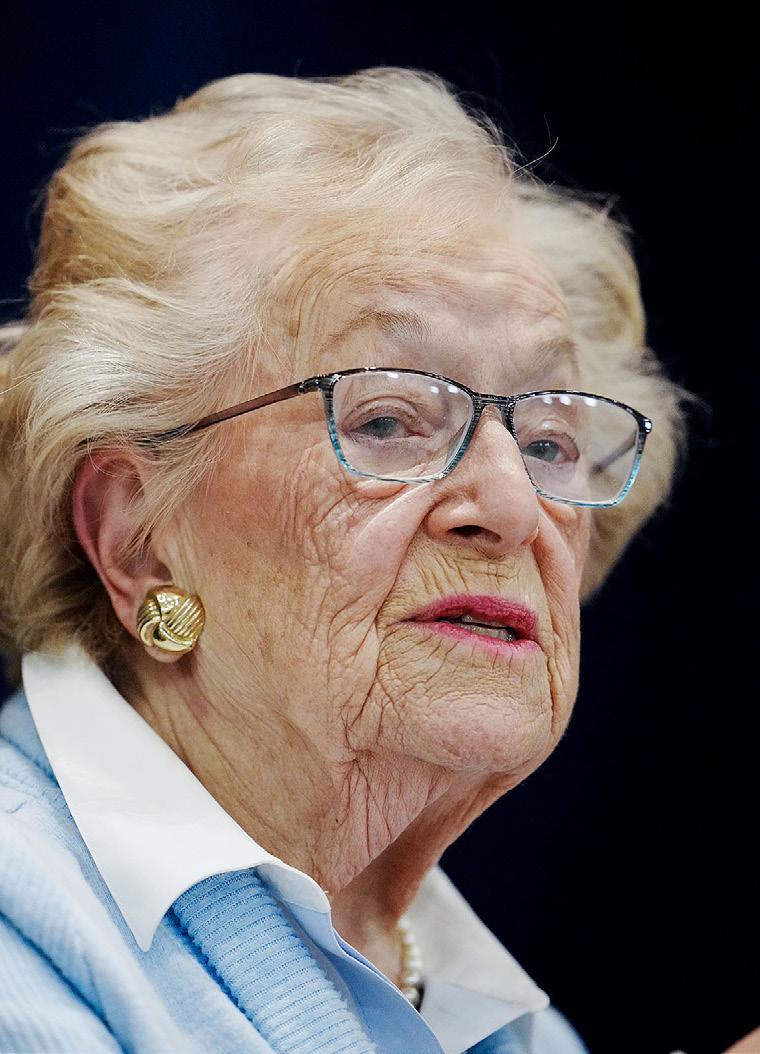 BY FRAN OSTENDORF
BY FRAN OSTENDORF
PROVIDENCE – Ruth Oppen heim was only 9 years old when the men in her small town in Germany went on a rampage, dragging her father out of the house and terrify ing her mother and siblings.
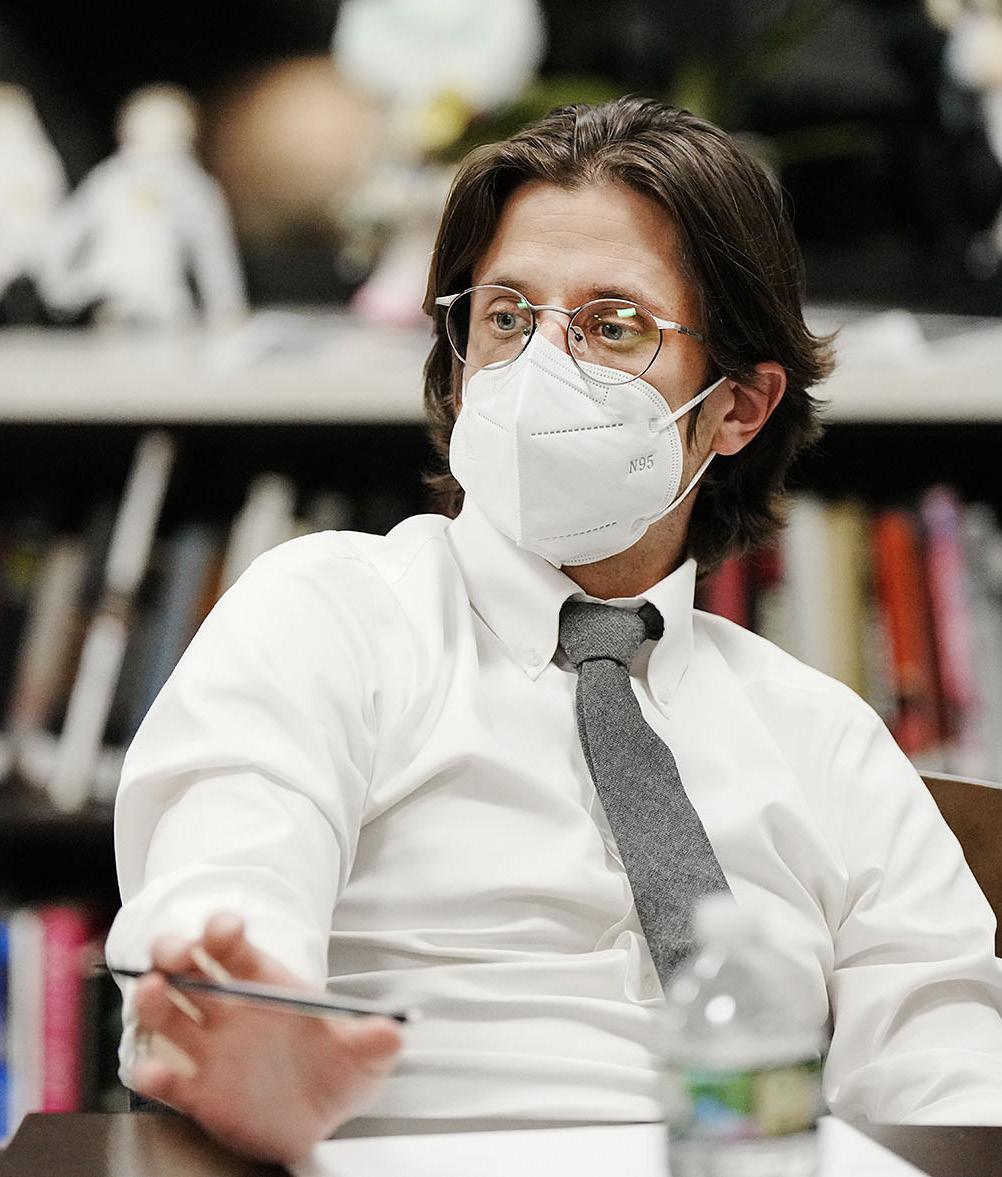
It was Nov. 9, 1938, known as Kristallnacht or the Night of Broken Glass.
More than 160 people gathered in the social hall of the Alliance’s Dwares Jewish Community Center on the 84th anniversary of that fate ful night to listen to Oppen heim tell her story.
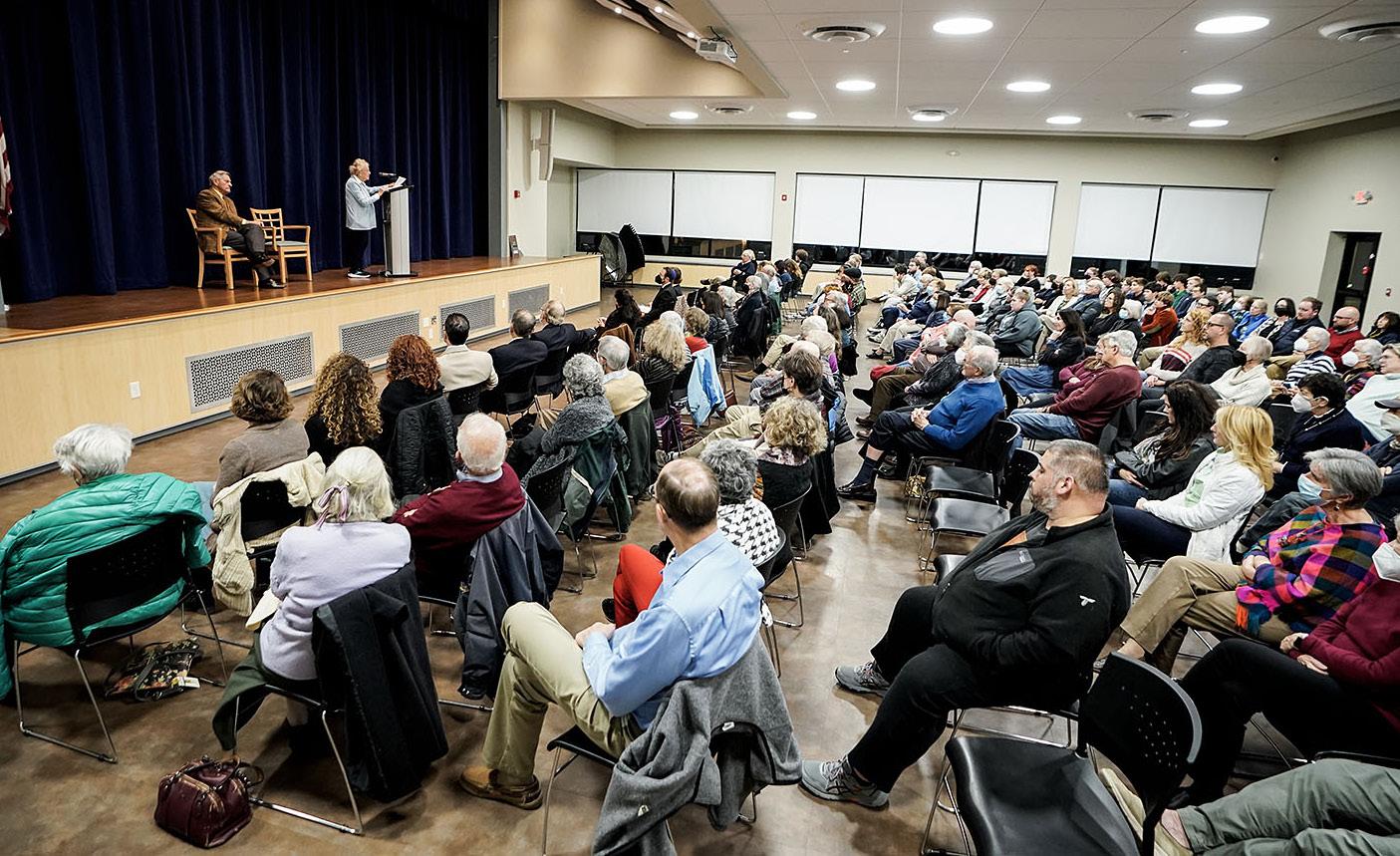
She lived with her mother, father, two sisters and brother in northern Germany, near the Dutch border. She was one of the fortunate few on Kristallnacht – her father came back after a few hours, bloody and beaten, and he carried the shul’s Torah, which the family was able to hide.
The family was eventu ally able to get visas to go to the United States, by way of Holland, and were on the last passenger ship allowed out of Rotterdam. The Torah ended up at a congregation in Morn ingside Heights, New York,
according to Oppenheim, 95. She characterized those last years in Germany as an “era of utter despair.”
“People often ask me if I think this could happen here in the United States,” she said. “Several years ago, I answered emphatically no. After the attack on the Capi tol, I’m not so sure anymore.”
Oppenheim speaks about her experiences to school groups, adult groups and others so that nobody forgets. She recently spoke to the Barrington Police Depart ment, and she’s spoken at the U.S. Naval War College, in
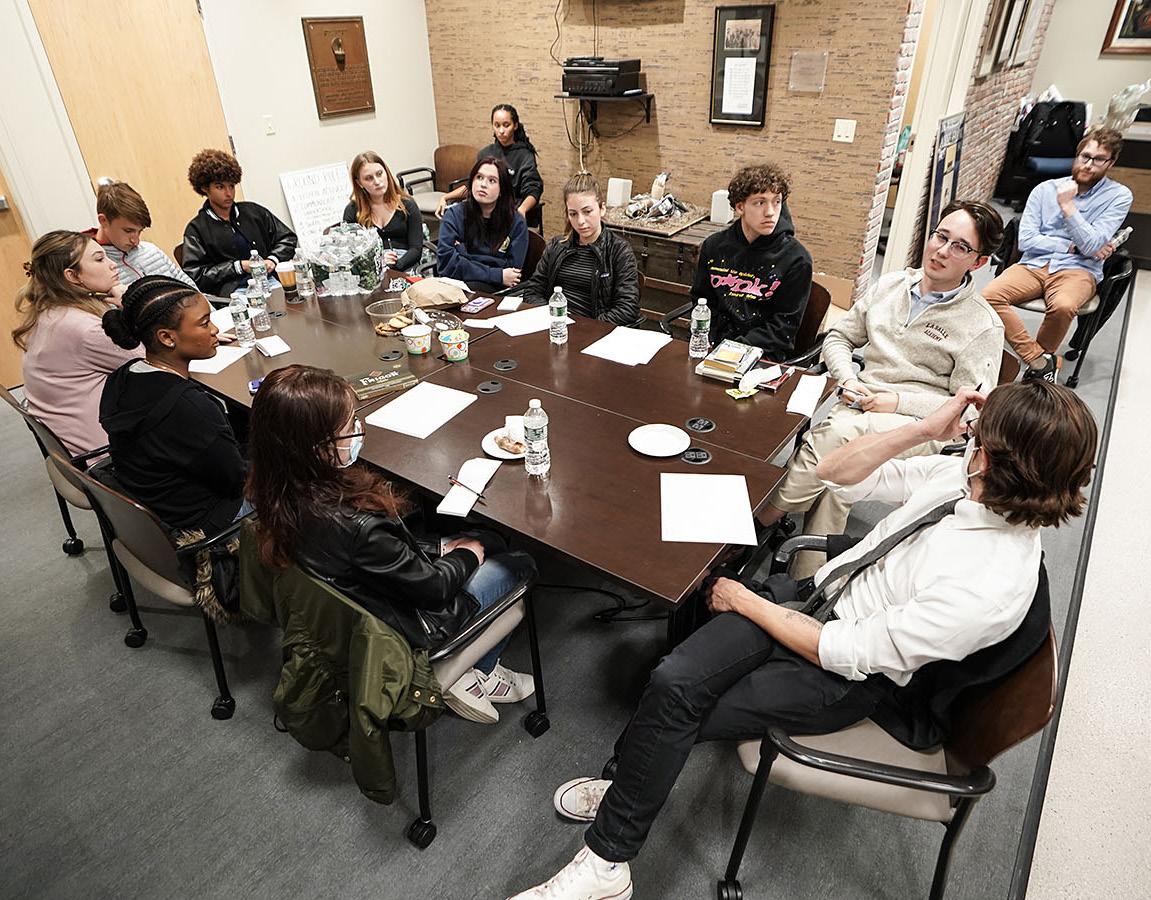
Newport.
“To keep the memories alive is to struggle for a better future,” she said.
The evening opened with a Yiddish melody sung by Can tor Judith Seplowin of Temple Beth-El, in Providence. Ralph Posner, a Holocaust survivor, introduced Oppenheim. The two have known each other for many years. Posner’s father was also arrested on Kristallnacht, though they lived in different places. Then, Posner’s father and Oppenheim’s husband worked together after both immi grated to the United States.
At the end of the hourlong program, Cantor Brian Mayer, of Temple Emanu-El, in Providence, chanted the El Malei Rachamim, the tradi tional memorial prayer.
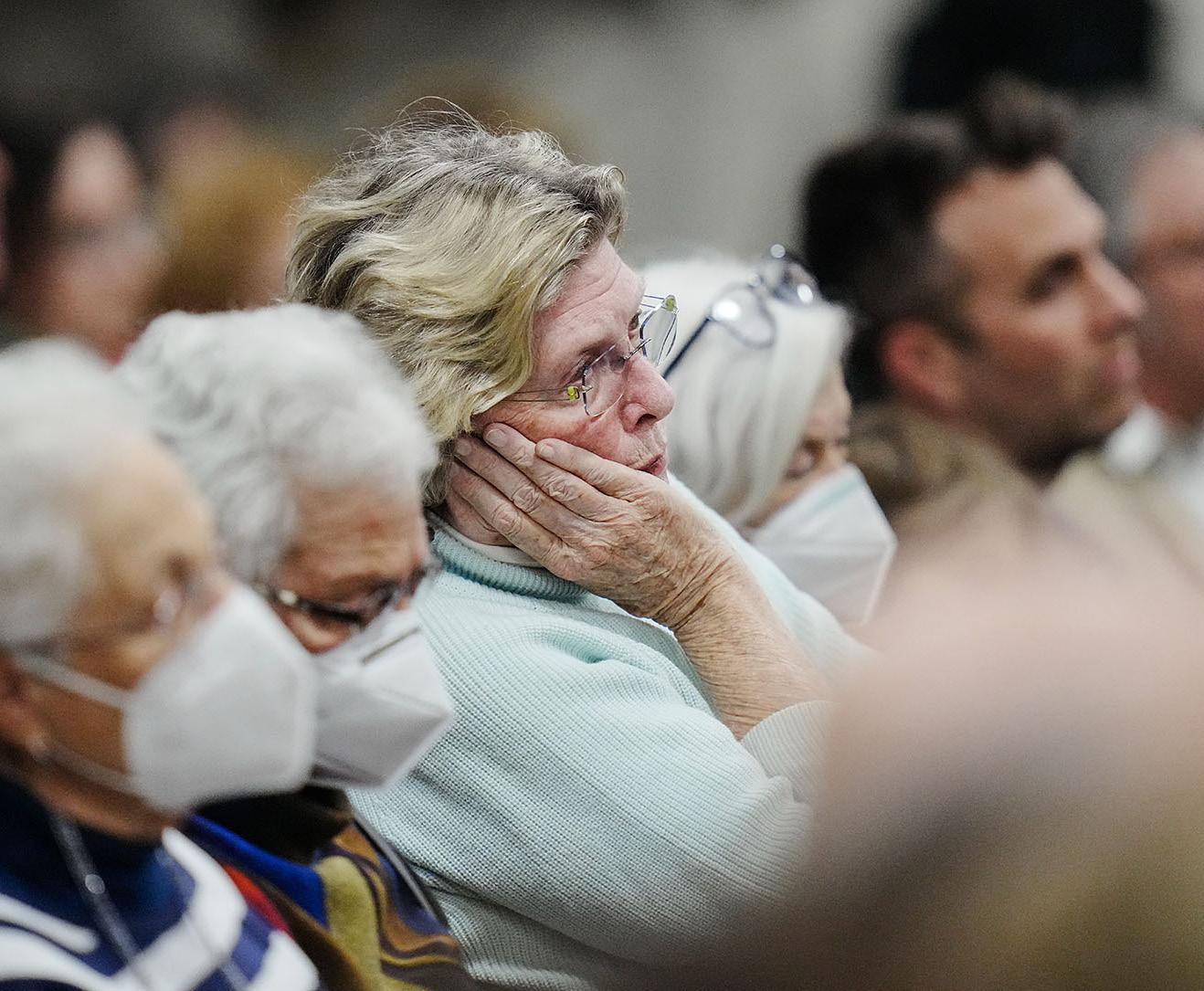
The event was sponsored by the Sandra Bornstein Holocaust Education Center in partnership with Tem ple Emanu-El and Temple Beth-El.
FRAN OSTENDORF(fostendorf@jewishallianceri. org) is the editor of Jewish Rhode Island.
I KNOW THAT sufganiyot – jelly doughnuts – are traditional and beloved for Hanukkah. But I feel confident that once you try these easy and incredibly delicious ricotta fritters, you will become a fan.
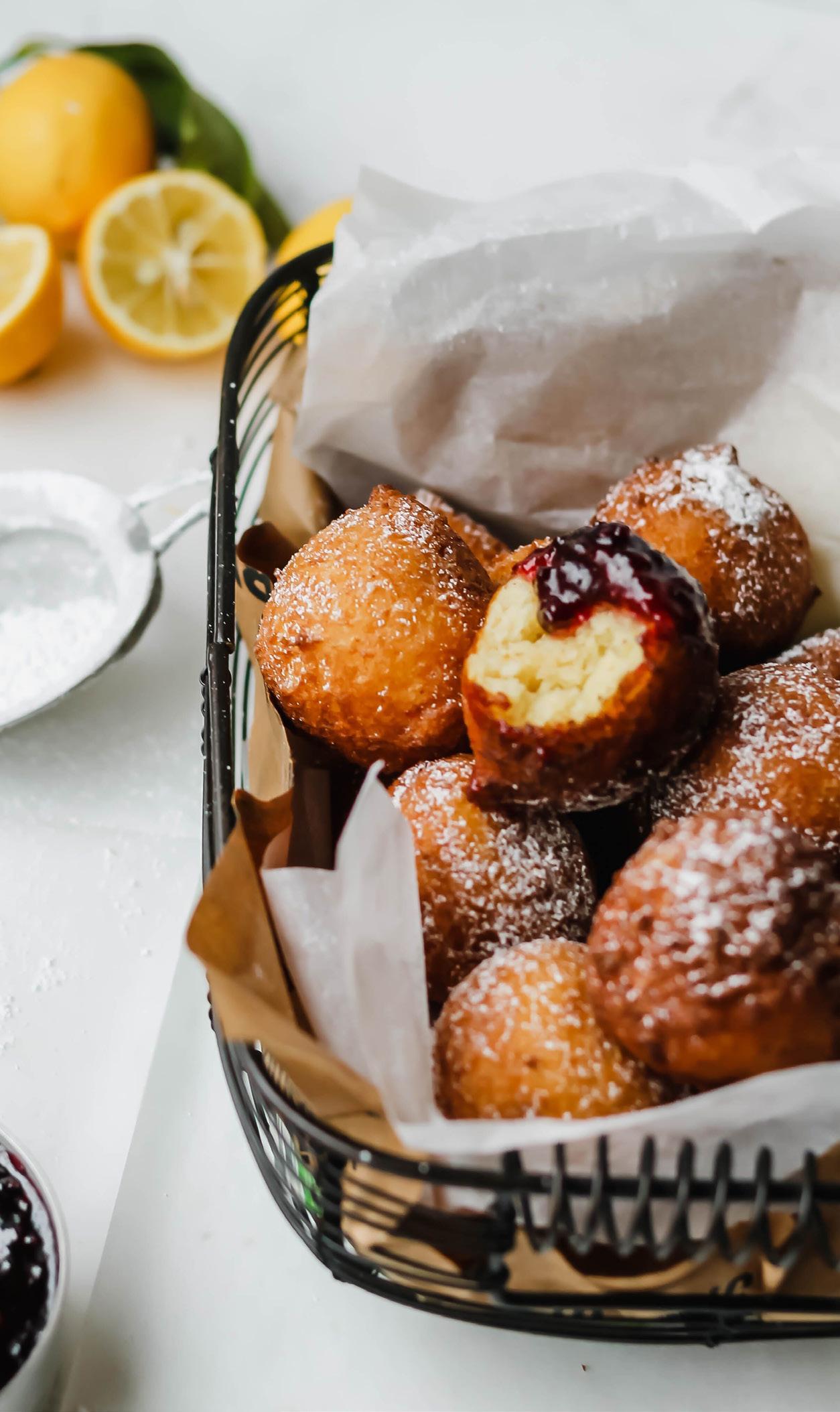
And, I confess, I have actually never loved tradi tional sufganiyot. Some times our family made our own, or we bought them from local bakeries, but we were usually left feeling that they were kind of
meh. They were always a bit too bread-y and heavy.
Around 10 years ago, my sister enlightened us all with these perfectly crisp, round fritters. They’re light and creamy, with a hint of fresh lemon zest. The batter comes together in just five minutes, and it is as easy as making pan cakes! We love to warm up some of my mom’s home made jellies and jams for dipping.
Since these fritters are at their absolute best when they’re fresh, I like to fry
4-6 cups canola oil, for frying
4 eggs
2 cups whole milk ricotta cheese
1/3 cup granulated sugar
2 1/2 teaspoons pure vanilla extract
1 1/2 cups all-purpose flour
1/2 teaspoon Kosher salt
4 teaspoons baking powder
2 teaspoons freshly grated lemon zest
1/2 cup powdered sugar
1 cup jam or jelly (I love pomegranate, peach and blackberry, but feel free to use whatever jam/jams you like)
Heat the oil in a large pot on medium heat until it reaches 365 degrees F.
While the oil is heating, combine in a large bowl the eggs, ricotta, sugar and vanilla extract. Whisk to thoroughly combine. In a medium bowl, combine the flour, salt, baking powder and lemon zest, whisking to thoroughly mix.
Pour the dry ingredients into the wet ingredients and stir with a spoon until
them up while I make tea after the holiday meal. The wow-factor of fresh fritters is incomparable!
Our guests also love the deconstructed sufganiyot because it’s unexpected and gets people talking. I serve them with a vari ety of warm jellies like pomegranate, peach and blackberry.
If you should happen to have any fritters left over, you can store them in a paper bag for 1-2 days at room temperature.
the batter just comes together and there are no lumps of flour.
If you don’t have a candy thermometer, you can check if the oil is hot enough by placing a wooden spoon in the hot oil. If small bubbles immediately form around the spoon, the oil is hot enough. When the oil has come to temperature, use a #40 cookie scoop (2 tablespoons) to carefully scoop the batter into the hot oil, without crowding the pot.
Cook for about 2-3 minutes per side, until deep golden brown. Check the first fritter that you remove from the oil to make sure the inside is cooked.
Use a slotted spoon or metal spider to remove the fritters and any excess oil, then transfer to paper towels to drain. Dust with powdered sugar.
In a small pan, heat the jam or jelly until it becomes liquid, then transfer to a serving bowl.
Serve immediately for best results. This story was originally published in The Nosher, at www.myjewishlearning.com.
THESE LATKES are both creamy and savory. Making latkes bite-size makes the experi ence a little more fun – guests can easily eat the latkes with their fingers, and also feel like they can indulge a little more since the portions are small.
Yield: 12-15 latkes
For the latkes:
4 Idaho (Russet) potatoes
1 small-medium onion
3 large garlic cloves
2 eggs
2 to 3 tablespoons flour
2 teaspoons salt
2 ounces goat cheese, left at room temperature
For the cream cheese:
6 ounces cream cheese, left at room tempera ture
2 tablespoons chopped fresh dill
1 teaspoon fresh lemon juice
Salt and pepper to taste
For the everything bagel topping:
1 tablespoon sesame seeds
1 tablespoon poppy seeds
1 tablespoon dried minced garlic
1 tablespoon dried onion
2 teaspoons thick sea salt
Thinly sliced smoked salmon Vegetable oil for frying
Before getting started on the latkes, make the everything bagel topping and the dill cream cheese.
Add softened cream cheese to a bowl and combine with fresh dill, lemon juice and salt and pepper to taste. Place back in the fridge until ready to serve.
To make the every thing bagel topping, mix together the sesame seeds, poppy seeds, dried garlic, dried onion and thick
sea salt. Set aside.
Peel and cut potatoes and onions in half. Peel garlic cloves. Place potatoes, onion and garlic through food processor for a coarse grate (you can also grate coarsely by hand).
Place potato mixture to a large bowl. Add eggs, flour, salt, goat cheese and 2 table spoons everything bagel topping mix.
Heat vegetable oil in a large saute pan over medium heat. Form
bite-sized mounds of latkes, taking care not to squeeze too much liquid out of the latkes.
Fry until golden brown on each side, then place on a wire rack on top of a baking sheet to cool.
Immediately sprinkle with a pinch of salt.
When ready to serve, spread thin layer of dill cream cheese on top of each latke. Add smoked salmon on each latke and top with sprinkle of everything bagel topping. Serve while still warm.
THE MOST DELICIOUS, comforting recipes are often the simplest, especially if they come with a bushel of history and soul.
My Jewish hus band’s grandmother (Grandma Esta) made the best brisket I’ve ever tasted. I know that these might be fighting words, but hear me out. It was complex, sweet and tender – every thing that Grandma Esta embodied. I was honored that she passed down her recipe to me, but also sur prised that the world’s best brisket could pretty much be made with only carrots and onions.
My Filipina mother makes the best lumpia. Hands down. Lumpia is a Filipino spring roll filled with meat, or vegetables, skillfully
rolled up and fried to golden perfection.
My earliest food memories include plat ters of lumpia at family parties, which relatives raved about as my mom basked in the compli ments.
Preparing for parties typically meant that my mom would make the filling ahead of time. Eventually, I would lose many of my weekend mornings to hours of rolling lumpia from that never-ending bowl of filling.
I had no idea what was in the filling. It wasn’t until I was an adult, throwing my own parties, that I was able to pull back the curtain on the mys terious, world’s-best lumpia recipe – simply by calling my mom and asking.
After Rosh Hasha nah, when I have leftover brisket in
my fridge and guests coming over, my first thought is, let’s turn this into lumpia!
Lumpia is always a crowd-pleaser, and it can be fried ahead and served at room tem perature.
My brisket lumpia was merely a quick Filipinx/Jewish experiment, but it tasted so wonderful and so familiar – I had forgotten that my mom’s lumpia’s rec ipe is really mostly carrots and onions, just like Grandma Esta’s brisket.
As I look forward to creating my own spe cial Jewish home with my husband, I’m com forted by these unex pected connections between his family and my own.

This story was origi nally published in The Nosher, at www.myjew ishlearning.com.
1 cup raw walnuts
2 yellow onions, roughly chopped
1 carrot, roughly chopped
2 tablespoons neutral oil (i.e., avocado, grapeseed, vegetable) plus about ½ cup more for shallow frying
1 pound ground beef
1 teaspoon of salt (plus more to taste)
1 packet spring roll pastry (found in the freezer aisle at Asian grocery stores, see note)
Store-bought sweet chili sauce for dipping
For the filling, pulse wal nuts, onions and carrot in a food processor until finely minced.
Heat 2 tablespoons of oil in a large wok or sauté pan over medium high heat. Add vegetable mixture and sauté for 2 minutes.
Add ground beef to the pan and combine thor oughly. Cook until beef is just brown and there is no more red. Add salt to taste. Remove the filling from the pan and set aside to cool.
To roll the lumpia, place a single pastry sheet on a cut ting board or clean counter. Point one corner towards you so that the sheet is posi tioned like a diamond. Add about two teaspoons of the cooled filling to the lower triangle that is closest to you. Use your fingers to shape the filling into a log. Pull the bottom corner up and over the filling and roll tightly, tucking in the sides like a burrito. Use a dab of water on your finger to seal the final edge. Repeat to roll the rest of the lumpia.
Add enough oil to a large wok or pan over medium high heat so that it is about a ½-inch deep. Gently heat the oil and then fry the lum pia until golden brown.
Serve lumpia with a side of sweet chili sauce for dipping.
Note: You can find spring roll pastry for this recipe in the freezer aisle at Asian food markets. It is similar to phyllo dough, but not the same as egg roll wrappers.

WHAT A DELIGHT it was to read the story of Dick Shapiro (November 2022) – and to watch the video –which I learned of from the emailed newsletter Inside Jewish Rhode Island.

The writing, editing and photog raphy were all wonderful, befitting the character himself, who made me laugh out loud with his witty and truthful remarks.
Please thank all persons involved and keep up the good work.
Dianne Izzo Newport, RIEXCELLENT EDITORIAL (November 2022). With the midterms , people voted and expressed what they want and do not want. We must continue to persevere and value our democ racy. We must speak out and, as you said, silence is not acceptable. Thank you.
Miriam Plitt Pawtucket, RI(JTA) – Nearly seven months after they were denied boarding in Frankfurt, a group of more than 100 Hasidic Lufthansa passengers are getting paid for their troubles.
The airline is paying each passen ger $20,000 plus giving them $1,000 to reimburse them for expenses incurred during the May incident, according to Dan’s Deals, the discount travel website that first reported the incident at the time. After legal fees and some other expenses, each passenger will net approximately $17,400, the site is reporting.
Lufthansa would not confirm the dollar figures but told the Jewish Telegraphic Agency that it is seek ing to settle with each of the affected passengers, capping a series of con ciliatory responses to the incident.
“Although we are not commenting on the details, we can confirm that Lufthansa endeavors to settle the claims with all of the passengers denied boarding on May 4th, 2022,” the company said in a statement.
That date was when airline agents in Frankfurt barred many Jewish travelers coming from New York City from boarding their connecting flight to Budapest, citing the fact that some of the passengers were not wearing masks, as was required at the time. But that rule was applied inconsistently, passengers said at the time, and a Lufthansa supervi sor was caught on video speaking disparagingly about Jewish passen gers as a group.
YEHUDA AMICHAI (1924-2000) is Isra el’s best-known contemporary poet; his work has been translated into 40 languages. In my bookcase stand several of Amichai’s volumes in the Hebrew original and several addi tional volumes in English transla tion.
Perhaps he chose to accept his son’s lie as an awkward and obvious cover for his youthful rebellion, his age-appropriate need to defy his father: “You can’t make me go to shul if I don’t want to.”
One of my favorites among Amichai’s several hundred poems can be titled in English as “A Poem about a Lie on Erev Shabbat.” The poem is not one of Amichai’s best-known works; it is not easy to find among the many collections of his writings in English translation. Nevertheless, I have long been attracted to this poem about a lie because of its ten sion between innocence and sophis tication:
IWhatever his father’s unspoken motives for not confronting his son, the young Amichai found that “the taste of that lie was good and sweet in my mouth.” And the poet carried within him the sweet taste of that lie well into middle age, never knowing for sure how his father interpreted his words, “I went to another synagogue.”
several of his better-known poems, many of which reflect the poet’s ongoing lover’s quarrel with his father and with the God of his father. Poems like “God Takes Pity on Kin dergarten Children,” which begins, “God takes pity on kindergarten chil dren, / less pity on school children / and on adults no pity at all.”
And he read poems such as “El Malei Rachamim,” (“God Full of Mercy”), which stands the tradi tional prayer of mourning and mem ory on its head: “God full of mercy, / were it not for the God full of mercy, there would be mercy in the world / and not only in Him.”
“One erev Shabbat, at twilight of a summer’s day … / I began, in my youth, to lie to my father: / ‘I went to another synagogue.’ ”
Amichai goes on to confess, “I don’t know if he believed me or not.”
It could well be that his father had asked him at the Shabbat dinner table, “Why didn’t I see you at shul earlier this evening?”
Amichai concludes his poem by looking back with a sense of bittersweet ambiguity and maybe a touch of regret: “And ever since then that lie is good and sweet in my mouth / and ever since then I always go to another synagogue. / But my father returned the lie to me when he died: ‘I have gone to another life.’ ”
On Nov. 2, 1997, Amichai spoke at the inaugural William G. Braude lecture at Temple Beth-El, in Prov idence. At the event, Amichai read
During the Q&A period following Amichai’s reading, I had the oppor tunity to ask the poet, “Are you still carrying on a lover’s quarrel with God?”
To which Amichai responded, without batting an eyelash: “I still haven’t worked out my relationship with my father.”
JAMES B. ROSENBERG is a rabbi emeritus at Temple Habonim, in Barrington. Contact him at rabbiemeritus@templehabonim.org.
BY ELIHAY SKITALONE ELECTION, then another one, and another one.
The first time I was able to vote was on April 9, 2019. I remember how excited I was. I was already a soldier, and I was voting in my uniform, which gave it a double meaning for me.
However, the excitement didn’t last very long. The second time I voted was just five months later, and I was still in my army service, and still excited, just a little bit less.
In the two years and eight months that I served in the IDF (the Israeli army), I voted four times – though normally Israel’s elections happen once every four years.
Those elections made Israeli society very divisive. In the past, when you asked an Israeli what he or she means by “us,” the answer was
pretty clear: “us” is the Israeli soci ety, us is the Jewish people around the world, and us is the people of Israel. Even when there were big controversies, we were all united.
Now there is me, not us. We have lost some of the unity that kept us so strong, and we have to find a way to become “us” again.
Hanukkah is coming very soon, and the holiday sparked a very famous disagreement between Beit Shammai and Beit Hillel, rival schools of thought 2,000 years ago.
Beit Shammai held the opinion that on the first night of Hanukkah, eight candles should be lit, and then each night, we should decrease the num ber of candles. Beit Hillel thought the opposite, starting with one candle and finishing with eight, to increase the holiness.
That is one of many examples of disagreements between Beit
Shammai and Beit Hillel – however, it didn’t change the respect they had for each other. Although they had a lot of disagreements, they were following the phrase vehaemet vehaShalom ahavu – therefore you must love honesty and peace (Zechariah 8:19).
Each side respected the other side; they understood that it was import ant to follow the rules of Judaism the way they believed, but unity and peace between all was more import ant. They understood that they didn’t have all the truth, and that they all needed to thrive to connect and bring peace.
Last year, I traveled in South America for about eight months, as part of “the big journey after the army.” In Israel, for those who don’t know, there is a tradition to travel around the world right after leaving
A FEW WEEKS AGO, in the dark of night, antisemites spread their hatred around Warwick and North Providence. Hun dreds of leaflets were littered throughout neighborhoods, spreading antisemitic vitriol and putting a new spin on conspiracy theories that have existed for millennia.

This is not the first time that this has happened. Just last month, a similar group of antisemites, who came from out of state, scattered the same hate through neighbor hoods in Newport and North Providence. In the last few months, we’ve seen antise mitic incidents take place at Jewish institutions, online, and perhaps most concerning, in schools. Unfortunately, our Jewish community knows all too well the danger that comes as these incidents become more frequent.
Antisemitic incidents reached an all-time high in the United States in 2021, with a total of 2,717 incidents of assault, harassment and vandalism reported to the Anti-Defamation League (ADL). This represents the highest number of incidents on record since ADL began tracking antisemitic incidents in 1979 – an average of more than seven incidents per day and a 34% increase year over year.
At the Jewish Alliance of Greater Rhode Island, we track antisemitic incidents in our region. Since June, there have been 25 reported incidents. Over the same
period last year, there were only six. What was once rare and concerning has become too routine, and alarming. What was once a statistic has become for many in our community, too personal. For my family, it became personal when our daughter heard a fellow middle-school student say, “Kanye was right about the Jews.” This must stop, but our Jewish community can not stop this on our own.
Throughout the Torah there is a word uttered by major figures in biblical history. It is uttered by Abraham, Jacob and Moses as an answer to God. It is the Hebrew word, “Hineni,” which translates to, “Here I am.” At the Jewish Alliance, Hineni is one of our core val ues. To us, it means standing with others, so no one stands alone.
Our Jewish community needs all of Rhode Island to say Hineni. We need everyone in Rhode Island to stand with us so we do not stand alone. We need elected leaders, business leaders, community leaders, and everyday Rhode Islanders to call out antisem itism. The Jewish community is only 2% of Rhode Island’s population, so we cannot fight this hate on our own.
There are many ways for you to encourage your non-Jewish friends to support our community. When they see or hear an antisemitic act, it should be reported to law enforcement or to the Jewish Alliance. If people
feel comfortable doing so, the antisemitism should be called out in the moment, or recorded. People can also educate themselves about the long history of antisemitism and hatred. There are many resources on this at antisem itism.adl.org, and at the Sandra Bornstein Holocaust Education Center. Finally, encourage people to join you for a Jewish community event. Whether it is some thing at a local synagogue or at the Dwares JCC, a Shabbat dinner or a PJ Library story hour, help others see the joy of our community.
Nearly 400 years ago Roger Williams came to Rhode Island fleeing religious perse cution. Since then, our state has been a place where reli gious freedom is a core value. It is a state that includes the first Baptist Church of Amer ica and America’s oldest syna gogue. For hundreds of years, Rhode Island has been a place where the Jewish community has felt safe. Where it has thrived and flourished. In this moment of deep concern, we ask all Rhode Islanders to say Hineni, to stand with us, so we can stamp out hate, and so we can all stand together.
ADAM GREENMAN is the President & CEO of the Jewish Alliance of Greater Rhode Islandthe army, and the majority travel in South America and Asia.
I had decided to be a staff member at a summer camp in Pennsylvania after my army service, and then I continued to travel for a few more months. I mention this because in South America there is a little bit of a utopia. When you go there, the min ute you meet an Israeli, you become best friends, regard less of your political beliefs, age or any other differences. Every Friday night you meet new people who become your friends; you all buy food together and make a great Friday dinner. So while I was
officially traveling alone, I never was alone. There are also many Facebook and WhatsApp groups for Israe lis to share information, get advice, or just to ask for help. You feel like you’re in a community, one with so many people who just want to have a great time – and make sure that you do too. This was so important to me. I felt like I was home so far away from home.
Elections can bring out a lot of hate, and I ask all Jews to not forget about the “us.” To be more like Israelis in South America, to remember that we are all one big family.
I ask that we be more like Beit Shammai and Beit Hillel.
It’s OK to have disagree ments, but it’s not OK to forget what love is.
Hanukkah is the time of the year when we celebrate our Judaism and the miracle. We light candles and we sing together, eat sufganiyot and latkes, and dance together. It’s the time to connect again, not just within your family, but with everyone.
And just like the miracle, I hope this light and love will stay for many years.
Chag Hanukkah sameach!
ELIHAY SKITAL is the Israeli shaliach (emissary) at the Jewish Alliance of Greater Rhode Island.
IN 1961, Murray’s Discount House opened its doors on North Main Street in Providence. The store sold a range of household and luxury gifts for at least two decades. Some Rhode Islanders even remember buying their wedding rings at the store. The building, located just a few blocks from the Pawtucket border, has since turned into a laser dermatology center, and memories of Murray’s are hazy. But the store’s motto is timeless: “We may look expensive, but our price tags… give us away.”

Eliezer Marcus, who became the rabbi at Sha’arei Tefilla, in Providence, this past August, comes from a family of rabbis.

“MY FATHER WAS A congrega tional rabbi in Toronto, Can ada, for many years. So I was born and raised in that type of home where that was something I always aspired to,” Marcus, 35, said.
“I guess my father mirac ulously made the rabbinate look like something attrac tive that a young Jewish boy should want to do. He pulled that off somehow, right?” he said with a laugh.
While growing up in his Orthodox home, Marcus went through the Orthodox school system in Toronto. After attending various yeshivot there, he studied in Israel for a few years. While he was there, right after his 20th birthday, his father passed away.
Marcus returned to Toronto, where he studied at the Institute for Advanced Judaic Studies for seven years. Then, he moved his family to Buffalo, New York, where he was the rabbi at Young Israel of Greater Buffalo for six years.
His father, Rabbi Raphael Marcus, led Congregation B’nai Torah, in Toronto, for over two decades.
“He had a very intuitive sense with people, you
know, understanding them and feeling what they need. I think that’s what made him very suc cessful as a rabbi,” Marcus said. “I think, as a child, that makes an impression on you, somebody who really has a phenomenal grasp of human nature, a very deep understand ing of people – and that’s something that you want to implement in your life and building relationships.”
Rabbi Marcus credits both his parents for instilling in him the value of building relationships.
“My mother actually comes from a long line of, you know, a famous rabbinic family,” he said. “And if you’ve heard of the Soloveitchik name, Joseph Ber Soloveitchik was my great-uncle.”
Ber Soloveitchik, also known as “The Rav,” came from a long line of rabbis and began the Maimonides School, in Boston, with his wife, Tonya Soloveitchik, before becoming the head of the Rabbi Isaac Elchanan Theological Seminary (RIETS) at Yeshiva Univer sity, in New York City, in 1941.
Marcus chose to relocate to Providence because it balanced a small city with robust Jewish infrastruc ture.
At Sha’arei Tefilla, “The school, the Yeshiva, the [New England] Rabbinical College, that seemed attrac tive to us,” he said. “And so far, I see people are nice people over here.”
Marcus said he enjoys connecting with people and making a meaningful difference in their lives. That is “the most enriching experience of being a rabbi,” he said.
“The truth is, I can’t say that it’s one particular moment in time. I think it’s a collage of things, you know, an accumulation over time when you work with somebody, and you feel that you made a difference in their life. I would say that’s something that I appreciate, if I’m blessed to have that opportunity.”
In his new role at the Orthodox Sha’arei Tefilla, Rabbi Marcus hopes to cre ate more cohesiveness in the Jewish community.
“There’s such diversity,” he said, “but sometimes if
it’s not channeled properly, you can end up feeling like you don’t really belong any where.”
He is also interested in growing the Orthodox com munity and keeping Jewish families in the city.
“Listen, within the Orthodox community, quite a number of families have moved out over the last three years or so,” he said. “So, I’d like to try to stem that tide.”
When not acting in his official capacity, Marcus said he enjoys getting outdoors with his family. He and his wife, Baila, have 8 children, ranging in age from 5 months to 12 years.
“I love going to state parks,” he said. “You know, looking for animals, things like that. Just taking my kids to a nice, deserted area with water and trees. I love nature.”
Marcus is also a history buff, “much to my wife’s chagrin,” he said, reminisc ing about the early years of their marriage and the numerous summer trips to Gettysburg, Pennsylvania.
“My poor wife,” he said, as he described driving around
the Gettysburg military park and stopping the car every few feet to jump out and look at a statue or read a plaque. Marcus thanked ha-Shem for his wife and her tolerance numerous times throughout the interview.
In addition to learning more about his new con gregation and connecting with people, Rabbi Marcus said he is looking forward to “bringing more people together in a way that makes everybody comfort able, enriched and proud of their Jewish heritage.”
SARAH GREENLEAF (sgreenleaf@ jewishallianceri.org) is the digital marketing specialist for the Jewish Alliance of Greater Rhode Island and writes for Jewish Rhode Island.
 BY FRAN OSTENDORF
BY FRAN OSTENDORF
Intermarriage. It’s been whispered about for years. Who we marry and their faith or spirituality can divide families and communities. But intermarriage is growing.
“BREAKING THE GLASS,” a new six-episode podcast from Jewish Rhody Media, will explore multifaith relationships. With religious engagement in decline and polarization becoming more common, podcast producer and host Emma Newbery talked to people who are making these relationships work despite challenges, and

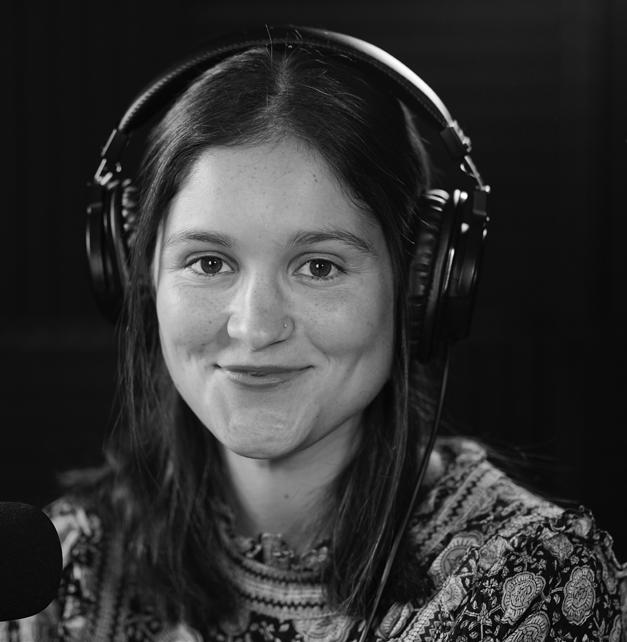
goal is to not only validate and share the experiences of our guests, but also to break any silence or sense of taboo around the subject of multifaith relationships and family constellations.”
It’s a subject that is near and dear to Newbery. She grew up in a progressive Reform Jewish community in Brooklyn, New York.
Her Jewish mother and Episcopalian father raised Newbery and her sister in a community where many of her friends had multifaith parents. Yet she encountered many of the same issues of intolerance faced by the couples she interviewed in “Breaking the Glass.”
“Within my family, we would talk a lot about the different religions and cultures in our household, but among the larger community, I kept it to myself,” she said.
“So, many years later, when it came time to do this project, it was very cathartic for me person ally – and I hope for our team [at Jewish Rhody Media] as well – to coax some of these stories out of each other as we were learning from our series guests about their moments of frustration, growth or joy.”
tured in the series, includ ing Denise Handlarski, a Humanistic Jewish rabbi with an online multifaith community, and Edmund Case, founder of The Cen ter for Radically Inclusive Judaism and an advocate for multifaith families in their Jewish engagement. Also featured in the series are local interfaith couples and clergy from several faiths.
Newbery said she hopes the series will help those in relationships, or associated with those in a relationship, to understand their experi ences.
“My greatest hope for the
never spoken to – listens to it and hears pieces of them selves and their experiences in it. The array of stories we have in the series and the intricacies of these couples and individuals demon strates the richness and variation of ‘interfaith’ or
Listen to the first three
episodes of “Breaking the Glass” now at jewishrhody. org or where you get your podcasts. Watch for the next episode on Dec. 15.
FRAN OSTENDORF (fostendorf@jewishallianceri. org) is the editor of Jewish Rhode Island.
the experts who are helping to carve out new communi ties of understanding.
“We don’t want to present multifaith partnerships as something happening paral lel to the Jewish experience – they are a crucial piece of it, and they aren’t going anywhere. In the U.S., the rates of multifaith marriage among Jews who are not Orthodox hover around 72% in the last decade. More and more Americans are marry ing outside of their religion,” Newbery said.
“In highlighting the voices of couples, faith leaders and community advocates for the inclusion of multifaith couples in religious life, our
“Breaking the Glass” has been a year in the making, during which Newbery said she went through a process of learning and unlearning.
“The first thing I learned is that there is no one understanding of what it means to be ‘multifaith.’ We had to set a scope for the series so that it wasn’t sprawling, but I’m glad we were able to capture the ways in which couples, families and leaders are push ing at the edges of more traditional definitions in religious life.”
The project involved input from a team at the Jewish Alliance of Greater Rhode Island and experts who are fea
If you’re seeking better understanding and communication to help strengthen your relationship, then we encourage you to contact us. Our unique couple-to-couple approach combines Angel’s skills as a Certified Coach with those of her husband, Charles Granoff, a licensed Therapist.
Charles Granoff, LICSW, LMFT Angel Canada Granoff, PCC
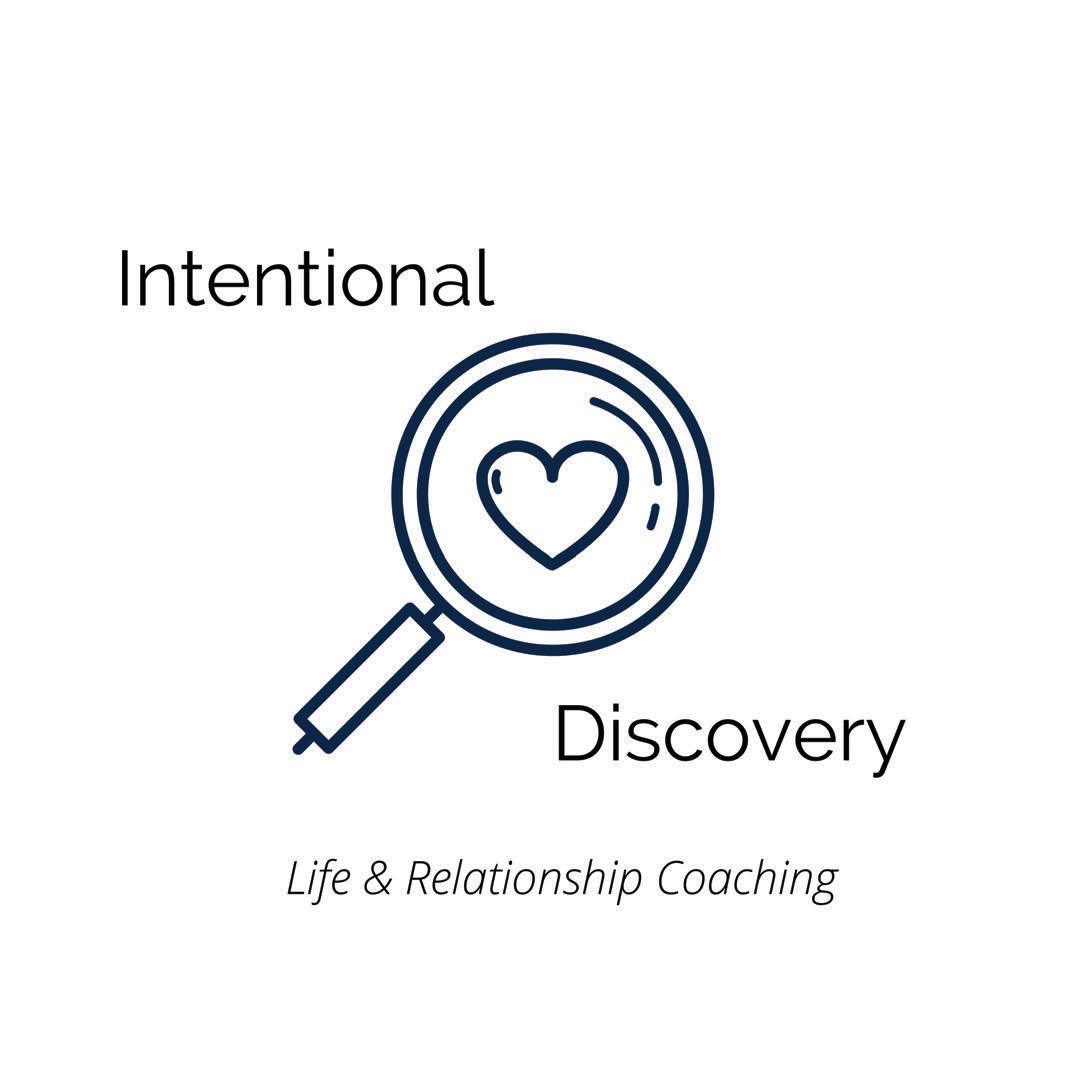


 BY JEWISH ALLIANCE STAFF
BY JEWISH ALLIANCE STAFF

DAVID MANDELBAUM is proud to say that he comes from a generous family – a family that knows the true mean ing of tzedakah (righteous ness/charitable giving). His grandfather gave to all who asked – sometimes perhaps more than he could afford. His mother, Judy, always welcomed another person to her Shabbat or holiday table. And his Uncle Victor gave generously to many causes.
Judy’s Kindness Kitchen, a Sunday soup kitchen named in memory of David’s mother, was established in November 2004 as a pro gram of Congregation Beth Sholom, in Providence.
Today, more than 900 meals are prepared every week at the Alliance’s Dwares Jewish Community Center and delivered to Crossroads Rhode Island, Emmanuel House and The Rescue Mis sion Homeless Shelters in Providence.
When Mandelbaum told his uncle, Victor Werber, Judy’s brother, about this program, Werber imme diately wrote a check for $5,000, and then repeated the gift every year. To make sure that his support contin ued long after his passing, he also included Judy’s Kindness Kitchen in his estate plans.
Upon his passing, Beth Sholom received a bequest to establish the Uncle Victor
Werber Fund for Judy’s Kindness Kitchen. By doing this, Werber ensured that the program named after his beloved sister will be supported in perpetuity. This new fund joined Beth Sholom’s existing endow ment fund at the Jewish Federation Foundation.
Judy’s Kindness Kitchen has become a core program of the congregation.
Beth Sholom co-president Marvin Stark stated, “It is a well-known saying that the world’s existence relies upon three things: Torah, prayer and chesed [acts of loving kindness]. You only have to spend a couple of minutes watching the volunteers preparing meals at Judy’s Kindness Kitchen to see the joy and camaraderie expe rienced during this true act of loving kindness. Congre gation Beth Sholom could not be prouder to act as a partner in this wonderful endeavor.”
Shortly after helping start this new fund, Mandelbaum and his wife, Alison, estab lished a donor-advised fund at the Jewish Federation Foundation. They already had a donor-advised fund (DAF) with another institu tion, but also saw the value of investing in the Jewish Federation Foundation.
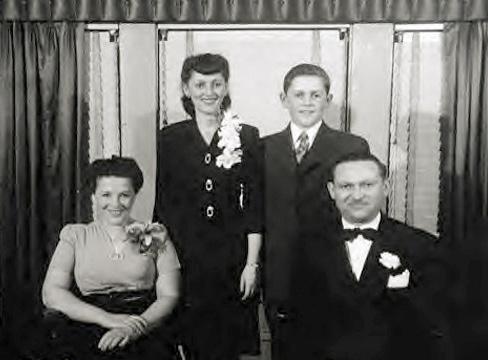
Mandelbaum has remarked that one of his favorite things about mak

EXCAVATIONS IN ISRAEL can elicit protests and even lead to threats of war.
I recall a time, decades ago, when I went to visit an American cousin who was spending the summer working on a dig at the City of David archaeological site, immediately south of the Old City in Jerusalem.
As I approached the corner of a building in downtown Jerusalem (at least a mile from the dig), I heard some chaotic noise. Then I turned the corner and almost stumbled into a protest by ultra-Orthodox Jews, who were angry about the dig.
Andrew Lawler writes in his book, “Under Jerusalem: The Buried History of the World’s Most Contested City,” that “Adventurers seeking the Ark of the Covenant nearly plunged two empires into chaos in 1911. They rattled the Mid dle East six decades after that. When the mayor opened a new exit to a tunnel along the Western Wall in 1996, more than one hundred people lost their lives .…” In 2001, peace talks collapsed over this underground territory.
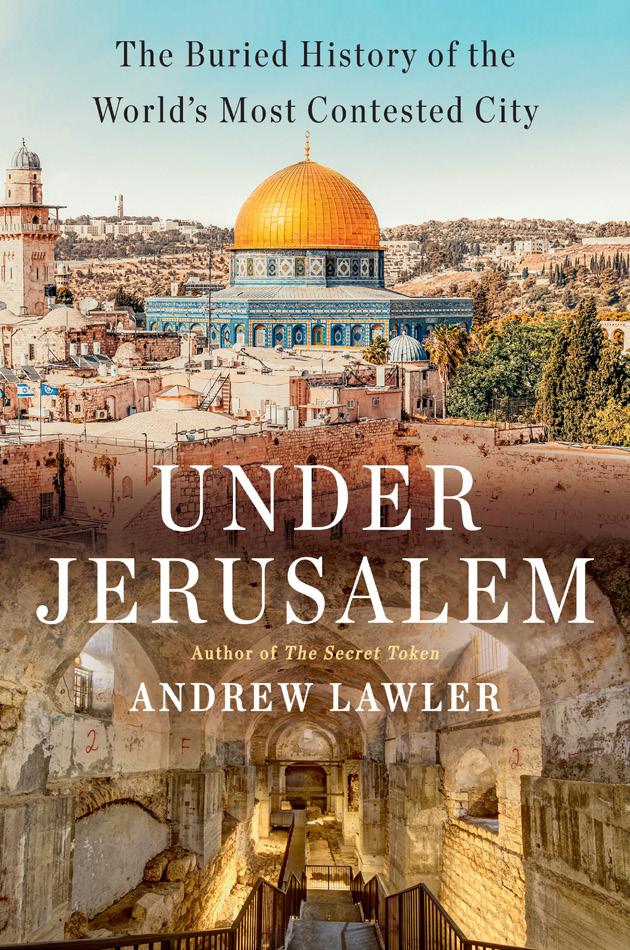
On Dec. 14, Lawler will present a Zoom program on the tombs, tunnels and trenches of Jerusalem, sharing stories from his book, which he describes as “the hunt for the Holy City’s past by a strange and colorful mixture of treasure hunters, scholarly clerics, reli gious extremists, and secular archaeologists.”
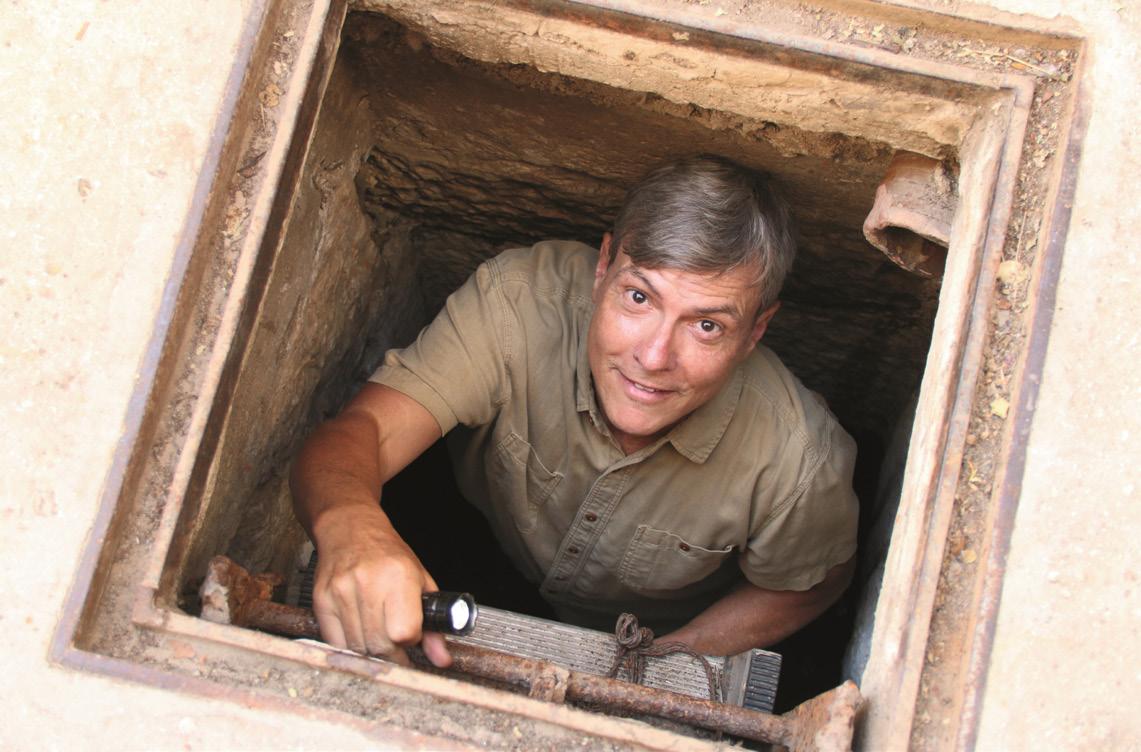
As a city revered by more than half the people on Earth, even digs in Jerusa lem can be earth-shaking.
Lawler begins his book with an incident that inspired some of Abraham Lincoln’s last words in Ford's Theater: “There is no place I so much desire to see as Jerusalem.” However, the treatment of
Jewish graves during that dig sparked international outcries.
Lawler will discuss many such contentious digs and how they have influenced Zionism, Arab nationalism and international conflict, as well as led people from around the world to explore under Jerusalem.
from its far older cousin, tomb robbing,’ into a modern tool of nationalist mythmak ing.”
In addition to “Under Jeru salem,” Lawler is the author of “The Secret Token: Myth, Obsession, and the Search for the Lost Colony of Roanoke” and “Why Did the Chicken Cross the World?: The Epic Saga of the Bird that Powers Civilization.” His interest in Jerusalem was sparked by an archaeology conference at Brown University over a decade ago.
The free program will take place on Wednesday, Dec. 14, at 7 p.m. on Zoom. It will be hosted by Elihay Skital, Rhode Island’s shaliach/ emissary. For more informa tion, contact Skital at 401-4214111 or eskital@jewishallian ceri.org. To register for the program, and get the Zoom link, go to https://www.jew ishallianceri.org/under-jeru salem.
Lawlor’s research was largely funded by the National Geographic Society.
The New Yorker writes, “Lawler’s history tracks both the marvels found underground and the events unfolding above them. ….
Probing excavators’ often partisan motivations, Law ler highlights archeology’s power to shape narratives and its development from a discipline ‘not far removed
The program is part of the Jewish Alliance of Greater Rhode Island’s Behind the Book series, which is co-sponsored by the Jewish Book Council. It is also part of the Israeli Culture Series, which takes place on the second Wednesday of every month.
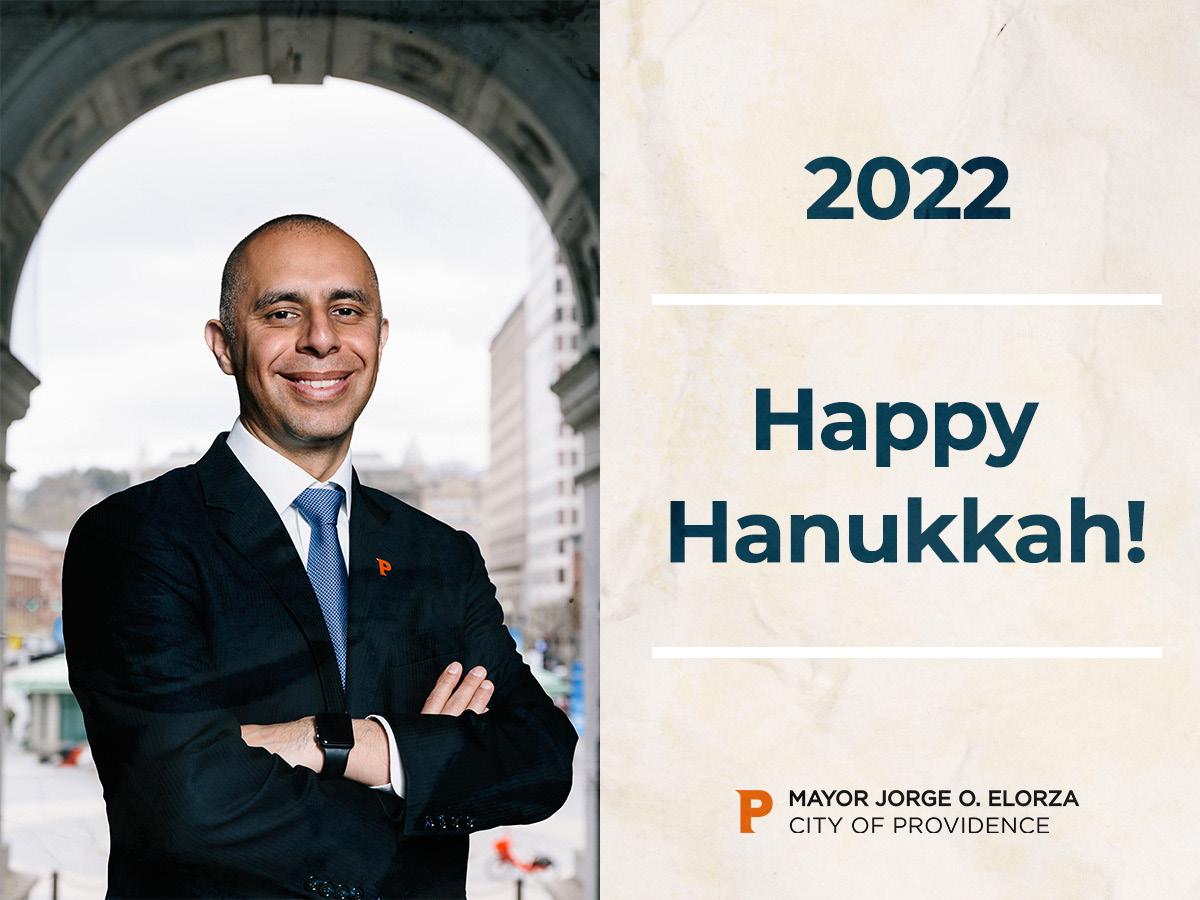
LARRY KATZ (lkatz@ jewishallianceri.org) is the director of Jewish life and learning at the Jewish Alliance of Greater Rhode Island.
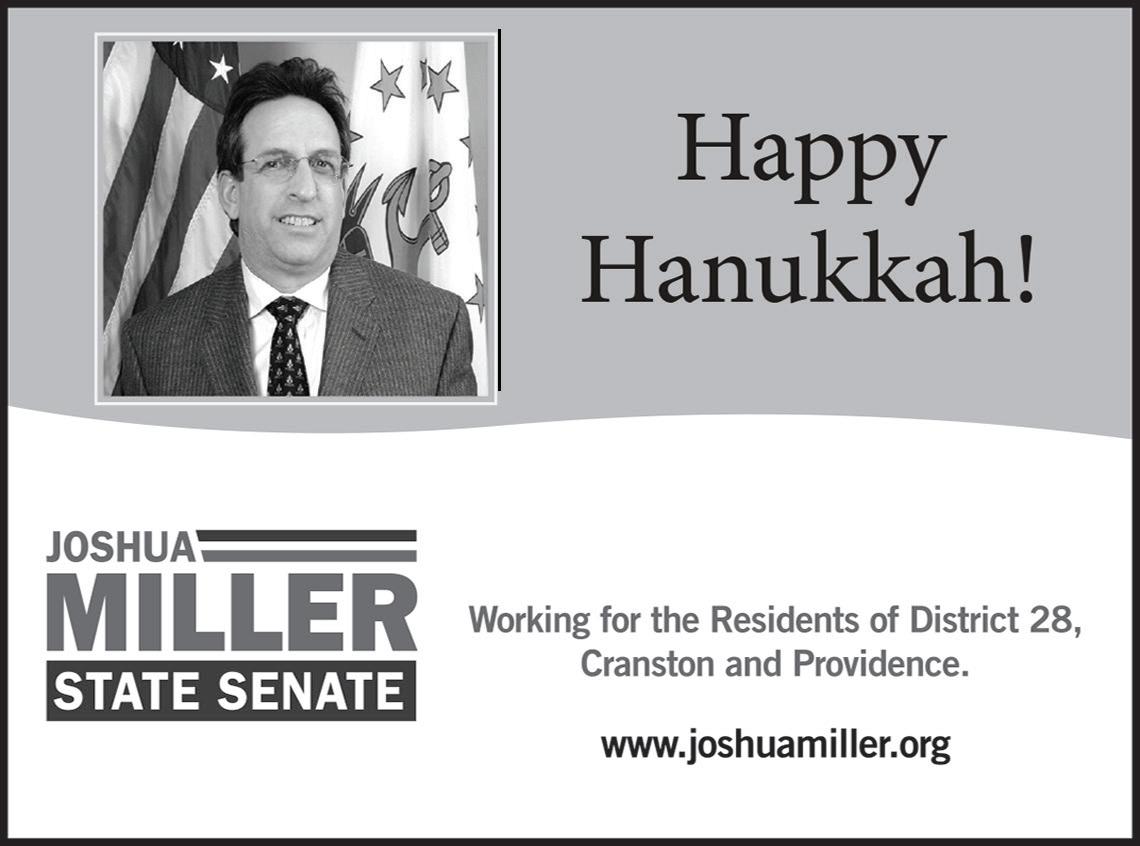

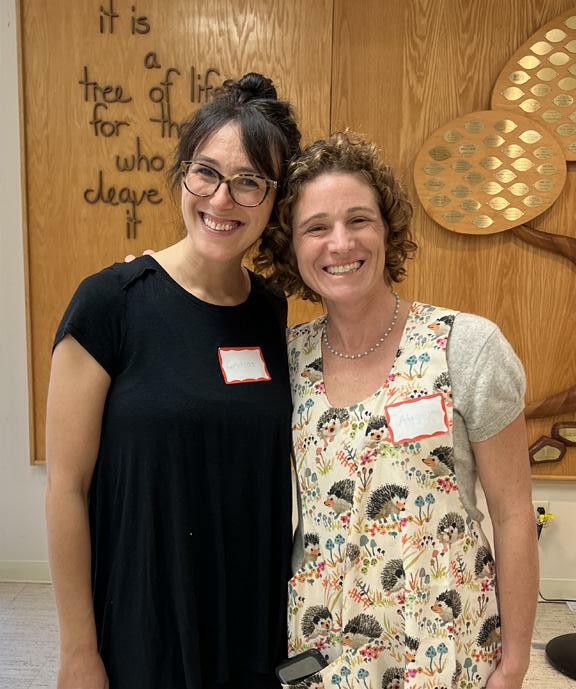

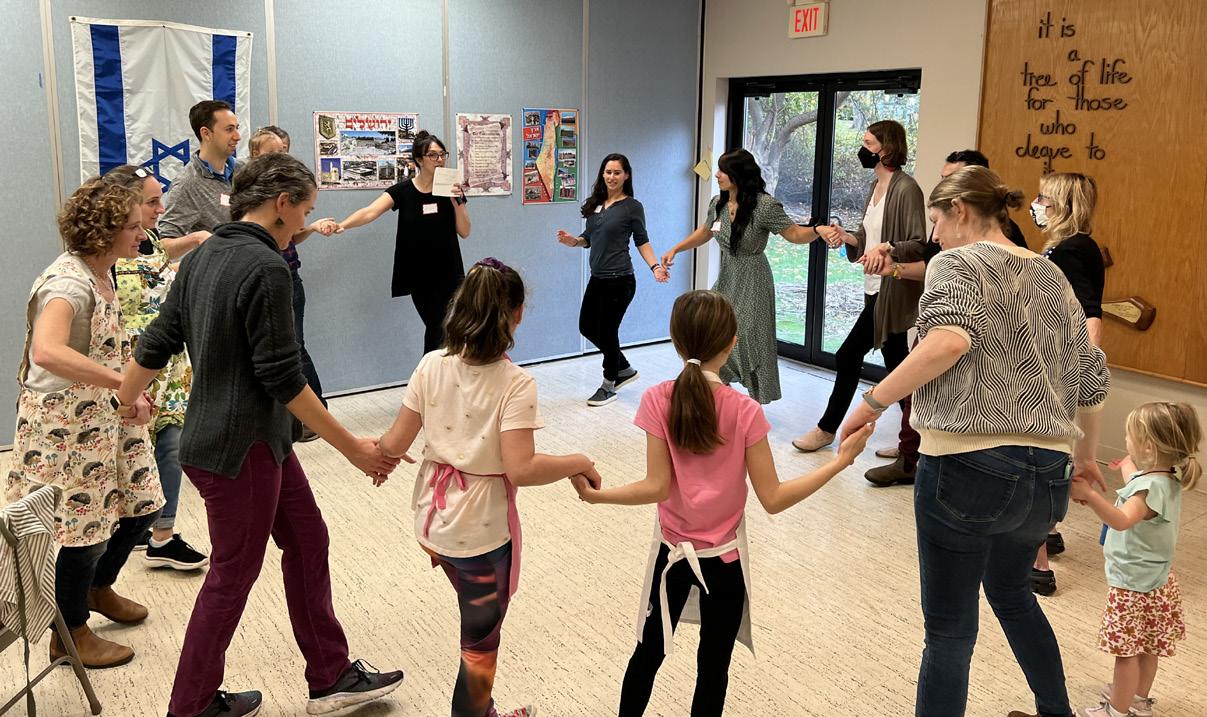
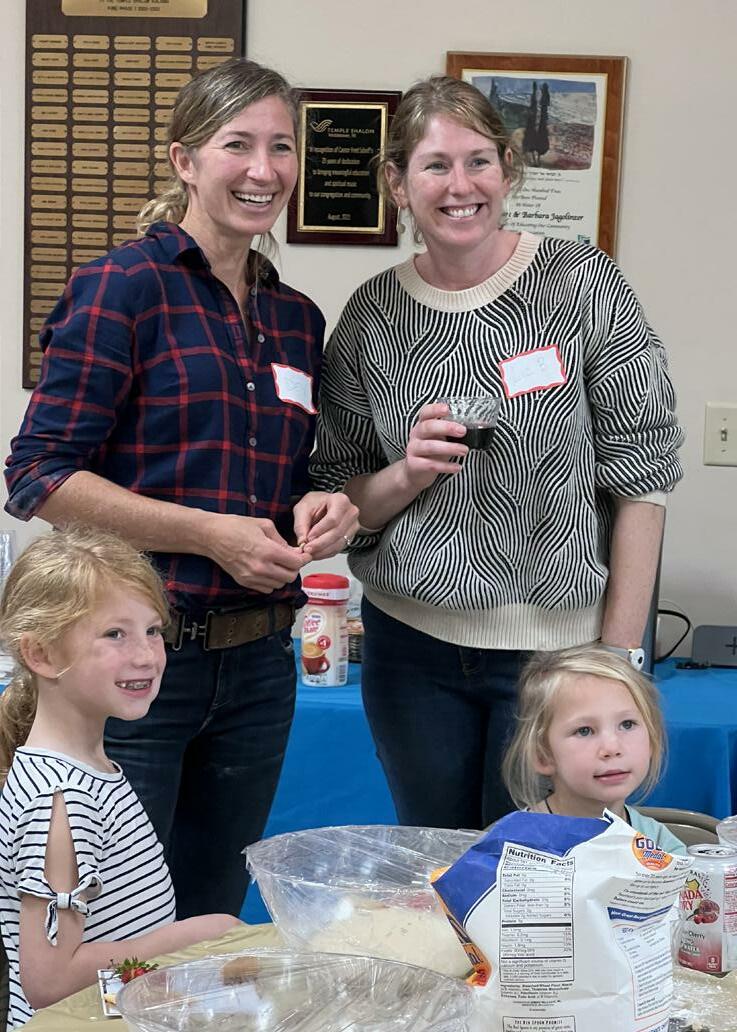
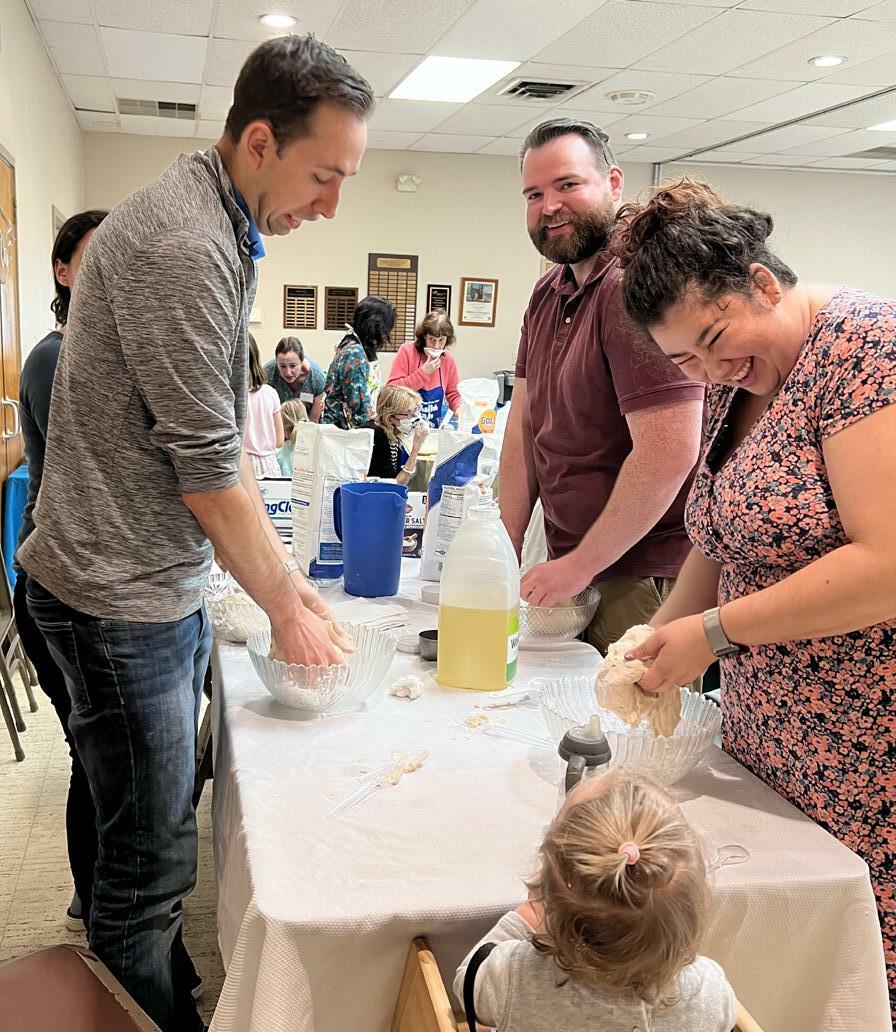
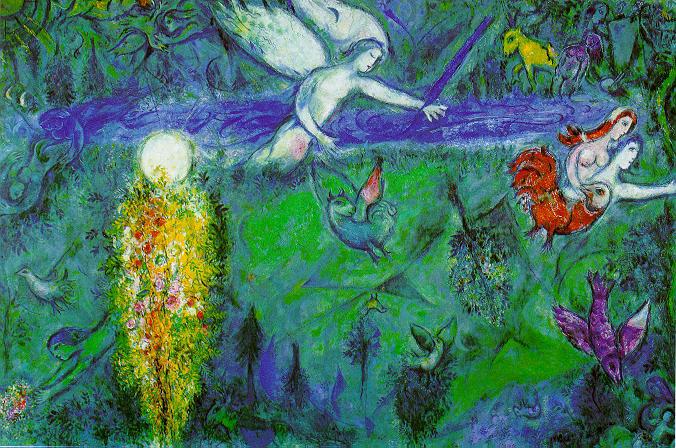
Hate crimes and antisemitic incidents hit a record high in the United States in 2021, even right here in our beloved Ocean State.
IN NOVEMBER , antisemitic flyers left in yards in War wick and North Providence and Newport shattered the peace of our community, and hateful words spoken and tweeted by famous people with a national audience were painful and disturbing to Jews and non-Jews alike.
So when I heard from Jan Dane, owner of Stock Culinary Goods, in Prov
idence, and president of the Hope Street Merchants Association, asking how to best include the Jewish community in their upcom ing holiday celebrations, our conversation quickly turned to antisemitism.
I asked Dane if she had heard about what happened in Billings, Montana, in the mid-’90s.
When faced with a series of hate crimes against Native Americans, Blacks and Jews, the community responded immediately.
During one incident, a brick was thrown through the bedroom window of a 6-year-old boy who had placed a menorah in his window for Hanukkah. In response, the local news paper printed a full-page menorah for people to
display in a window. The message was clear: The irrational hatred of a few cannot destroy the bonds of our community.
This simple way to stand together against hatred and bigotry inspired other
with crayons, or decorated however you like, and hung in a window so that people know you stand with the Jewish community against hatred and antisemitism.
Organizations such as The Sandra Bornstein
Together as a community, we must continue to find ways to invite and activate our neighbors and inter faith partners to stand up as well.
As you shop in our won derful small businesses for gifts for the holiday season, you will find that many have copies of the menorah and a #GetLoudSpeakOut sticker.
Please decorate and hang your paper meno rah to share the light of the season and help fight against all forms of hate and bigotry.
communities to do the same.
Nearly 30 years later, we are asking our community to follow suit. On the back page of this newspaper is a full-page outline of a meno rah, ready to be filled in
Holocaust Education Cen ter, in Providence, and the Jewish Alliance of Greater Rhode Island, partner with our synagogues, other Jewish groups and schools to spread light in a world that has so much darkness.
RACHEL MERSKY WODA is the director of Youth and Family Engagement at Temple Beth-El, in Providence.
Assisted Living | Memory Care | Early Stage Memory Care

• Two memory care programs include The Terrace for those in early stages of dementia, and The Neighborhood, for those in more advanced stages
• Medical Director On-Site Aman Nanda, MD Associate Professor of Medicine at Alpert Medical School at Brown University
• Located On a Beautiful Campus With Walking Paths Ideal for Residents, Family and Dogs
• Private, Luxury Car Service
• Select Apartments available within our affordable program
Call 401-273-6565 to learn more or schedule a tour.
ResidencesOnBlackstone.com • 353 Blackstone Blvd, Providence, RI 02906
‘On the back page of this newspaper is a full-page outline of a menorah, ready to be filled in with crayons, or decorated however you like.’
Jews and slavery in the Atlantic world of the American colonial era is the subject of the first program in Touro Synagogue Foundation’s Winter 2022 Judah Touro Program Series. Guest speaker, Dr. Paul Finkelman, will present a talk titled “Jews, Slavery and the Meaning of Freedom,” on Thursday, Dec. 15 at 6 p.m. via Zoom. There is no fee to participate, but reservations are required to receive the Zoom link.
THE HISTORY OF NEWPORT, which was founded upon the principles of religious freedom, is also the history of those who did not find freedom there – enslaved Africans. Many Newport ers, including Jews, either owned slaves or participated in some aspect of the trans atlantic plantation system, which was based on the slave trade and goods produced through the labor of enslaved Africans. Finkelman’s talk will address this central par adox of America – the coexis tence of slavery and freedom, along with an intermingling of noble ideals about liberty with the poison of racism. His talk will address these issues in a way that will help participants understand them clearly and honestly.
Finkelman is one of Amer ica’s most respected legal scholars and has published extensively on the history of slavery and on Jews in America. He currently holds
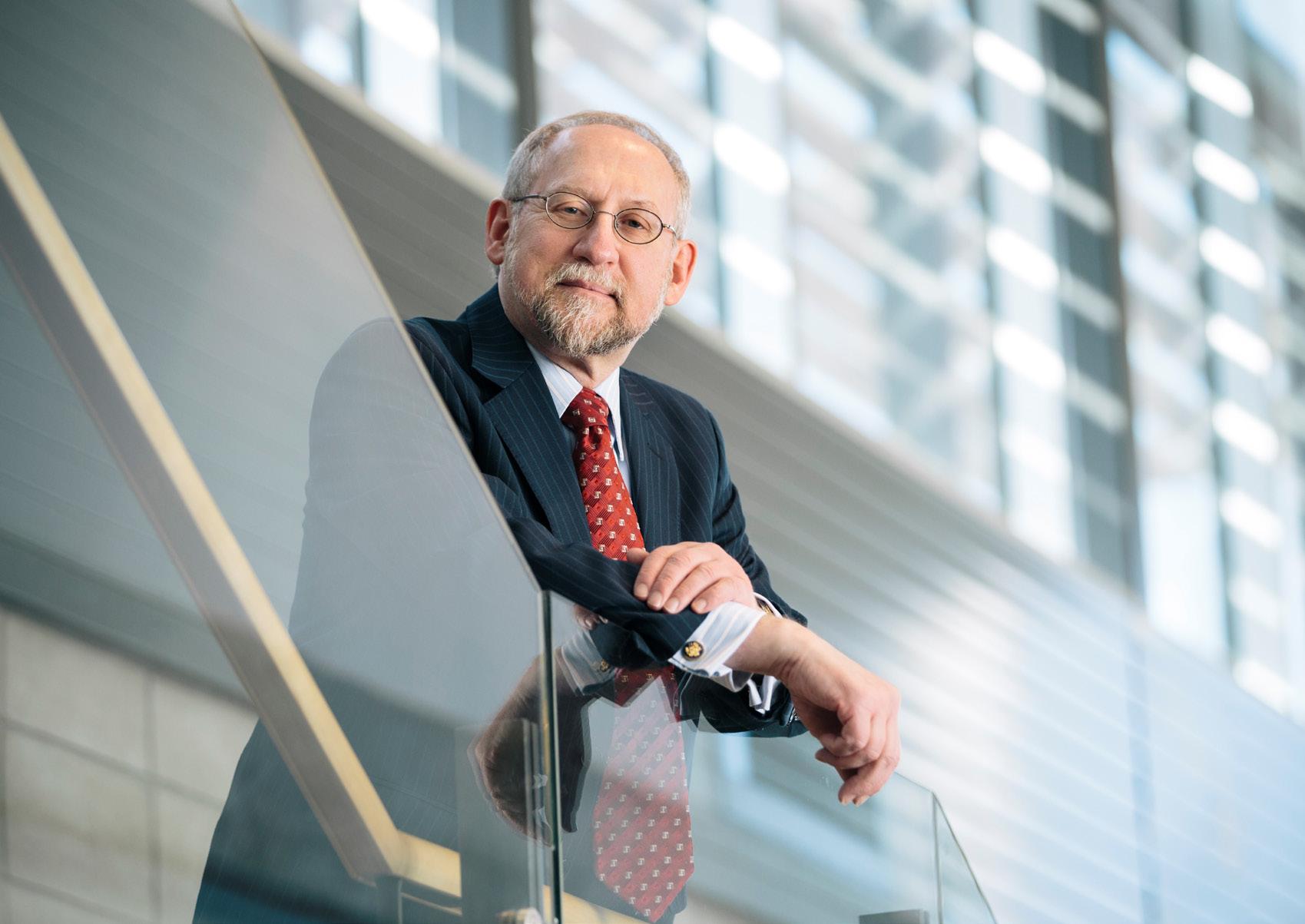
the Rydell Visiting Chair at Gustavus Adolphus College in Minnesota. He received a B.A. in American Studies from Syracuse University and a Ph.D. in history from the University of Chicago. He is the author of more than 200 scholarly articles and the author or editor of more than 50 books. His most recent major book, “Supreme Injus tice: Slavery in the Nation’s Highest Court,” was pub lished by Harvard University Press in 2018. Finkelman has spoken on slavery, human trafficking, civil liberties, and human rights issues at the United Nations, throughout the United States and in more than a dozen other countries.
Two more presentations in this virtual series have been scheduled. On Jan. 12, 2023, at noon, Professor Pieter Vlaardingerbroek, live from Amsterdam, will present a talk, “The Architecture of the Portuguese Synagogue in Amsterdam.” Then, on Feb. 9
at 6 p.m., Samantha Baskind, a distinguished professor of art and history at Cleveland State University, will give an illustrated talk, “Picturing Ashkenazi and Sephardic Jews in Seventeenth- and Eighteenth-Century Amster dam (1675).”
The series closes with a special collaborative presentation on March 30 at noon, hosted by the Rhode Island School of Design Museum, “Local Collections in Conversa tions,” featuring Touro Synagogue’s Ner Tamid (Eternal Light) and its Great Chandelier, and
CONTINUED FROM PAGE 30
ing grants from a JFF fund is that all grant recipients, Jewish and otherwise, know that the grant is coming from a Jewish entity because the grant letter arrives on JFF letterhead with the Hebrew date at the top.
Is there a community organization or program that has a special meaning to you? How would that orga nization be impacted if your
annual donation suddenly stopped? If you want to make sure that your contribution continues and your generos ity is remembered forever, the JFF can work with you to establish a fund during your lifetime or create a planned gift.
Thanks to David Mandel baum and his family, both his uncle and mother will always be remembered for their gen erous spirit and kindness.
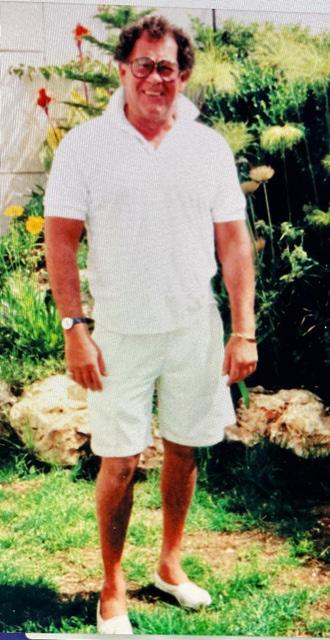
comparative objects from the collection of the RISD Museum. Presenters will include Howard Newman, a nationally respected New port artist and conservator, who restored both these objects.
To reserve for the Dec. 15 presentation, please visit the
“Program & Events” page at tourosynagogue.org, or use this link: https://tinyurl. com/3rszvu8x . For more information or assistance with registration, please contact Meryle Cawley at 401-847-4794, extension 207 or meryle@tourosynagogue.org
Receive by Saturday, Dec. 31 Receive by Saturday, Dec. 31
Postmark by Saturday, Dec. 31 Initiate by Wednesday, Dec. 14 Initiate process by Wed, Dec. 14 Initiate process by Mon, Dec. 19
Grant
Receive by Friday, Dec. 9 at noon. Requests received after this date/time may be remitted to the grantee in Jan. 2023.
Danielle Germanowski for endowment funds: dgermanowski@jewishallianceri.org
Michele Gallagher for campaign gi s to the Jewish Alliance: mgallagher@jewishallianceri.org or 401.421.4111 ext. 165
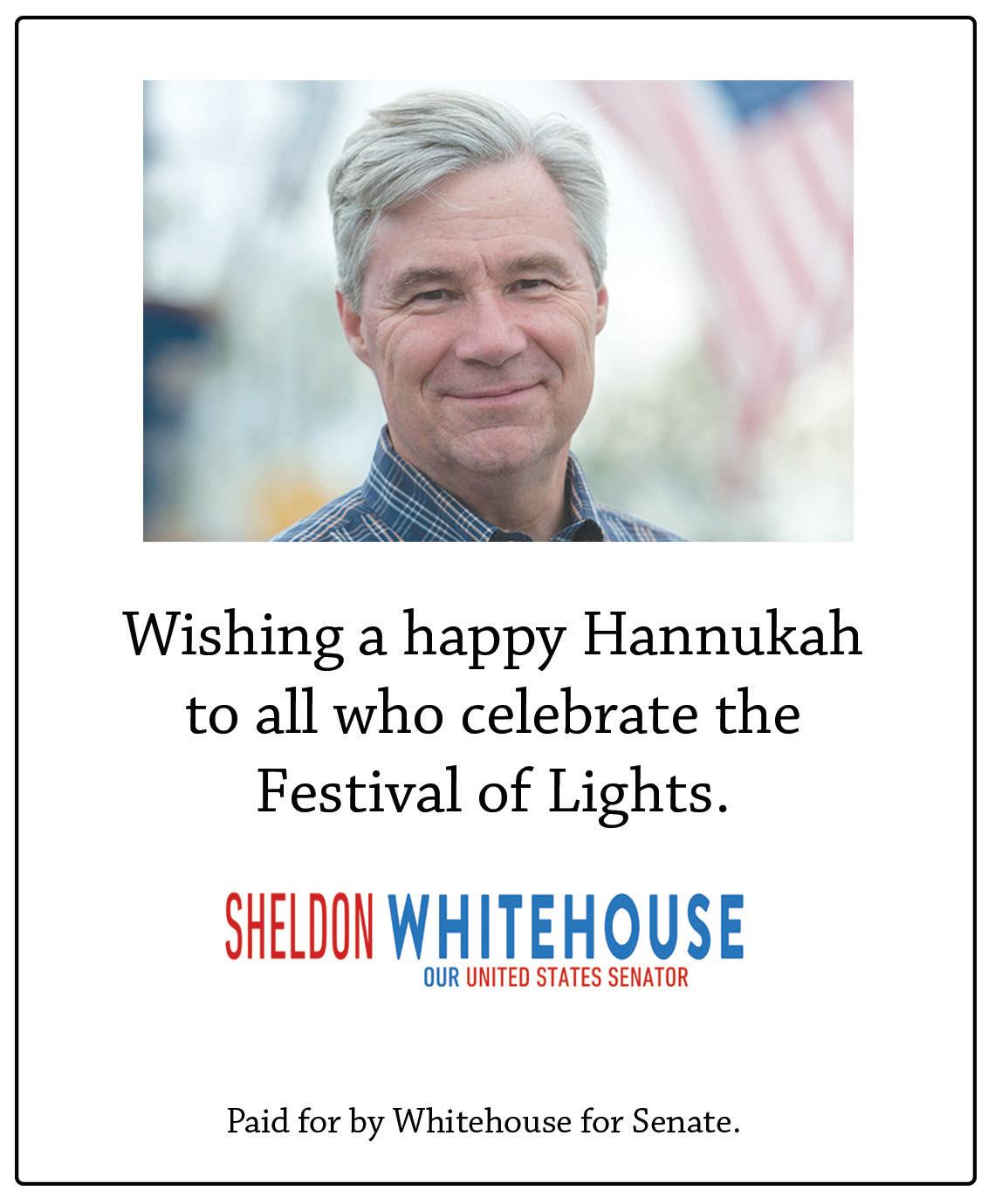
THE STUDENTS at the Providence Hebrew Day School gathered recently to express their gratitude to Mr. Elliott for being the crossing guard at the corner of Elmgrove Avenue and Savoy Street for the past 10 years. Every day – no matter the weather – Mr. Elliott greets those crossing the busy intersection in front of the school with a vibrant “Good Morning” and a “Good
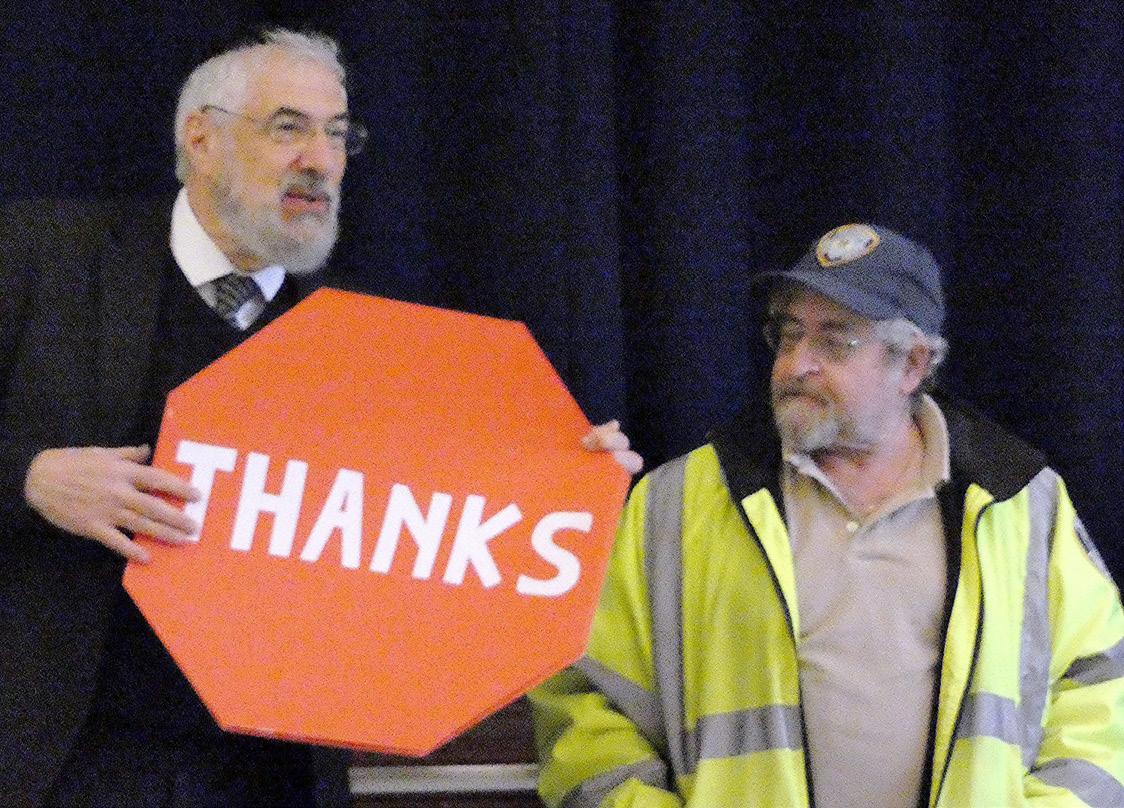
Evening” as they leave at the end of the school day. The school and students showed their appreciation to Mr. Elliott with a special stop sign-shaped card signed by every PHDS student. After Rabbi Gidon Goldberg, head of school, presented this card and a gift to Mr. Elliott, one by one, every child from Kindergarten to eighth grade, stood up to express their gratitude.
2845 Post Road / Suite 105, Warwick, RI 02886
an
www.jewishallianceri.org/report-it/
At the Jewish Alliance, we believe all people should be treated fairly and justly. If you have experienced or witnessed an incident of anti-Semitism or extremism, please report it. Anti-Semitic activity includes overt acts or expressions of anti-Jewish bigotry and hostility. Many incidents are not crimes but are still considered anti-Semitic and should be reported.

This initiative is meant to help track anti-Semitic incidents in the state of Rhode Island. Experiencing any type of anti-Semitism may be traumatic for you or your loved ones. If you need additional support, please contact Jewish Collaborative Services at 401.331.1244 for guidance.
www.jewishallianceri.org/report-it/
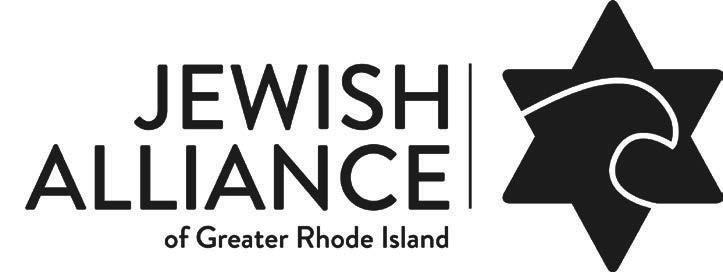
THERE IS NO RIGHT WAY to be a woman online, just like there is no right way to be a woman in the world. No matter your preferences, your skills, your education, your style, your background, someone, some where, will have a problem with it. And they will let you know.
Nina Jankowicz’s “How to Be a Woman Online” (Blooms bury Academic, 2022) is part explainer, part how-to, about how women can survive on the internet as public-facing figures.

For women who are online, the parts of the book that explain how bad the situation
sphere,” Jankowicz writes, and the parts of the book that outline the dismal online situ ation are written for them.
For women online, the book has actionable steps to stay safe(ish) online, often listed at the end of chapters. In a world where law enforcement hasn’t kept up with the online sphere and where social media platforms either can’t or won’t keep up with the tactics of online trolls, safety is relative.
book, and their stories, make a case for more participation in public spaces by women, not less. Cindy Otis, a former CIA officer and disinforma tion expert, is quoted in the book as saying, “I know I’m limiting my professional progress each time I scale back on social media.”
Being an active industry expert on social media can not only enhance your career, but it can also act as much needed counter-programming to the dominance of male voices and influence online.
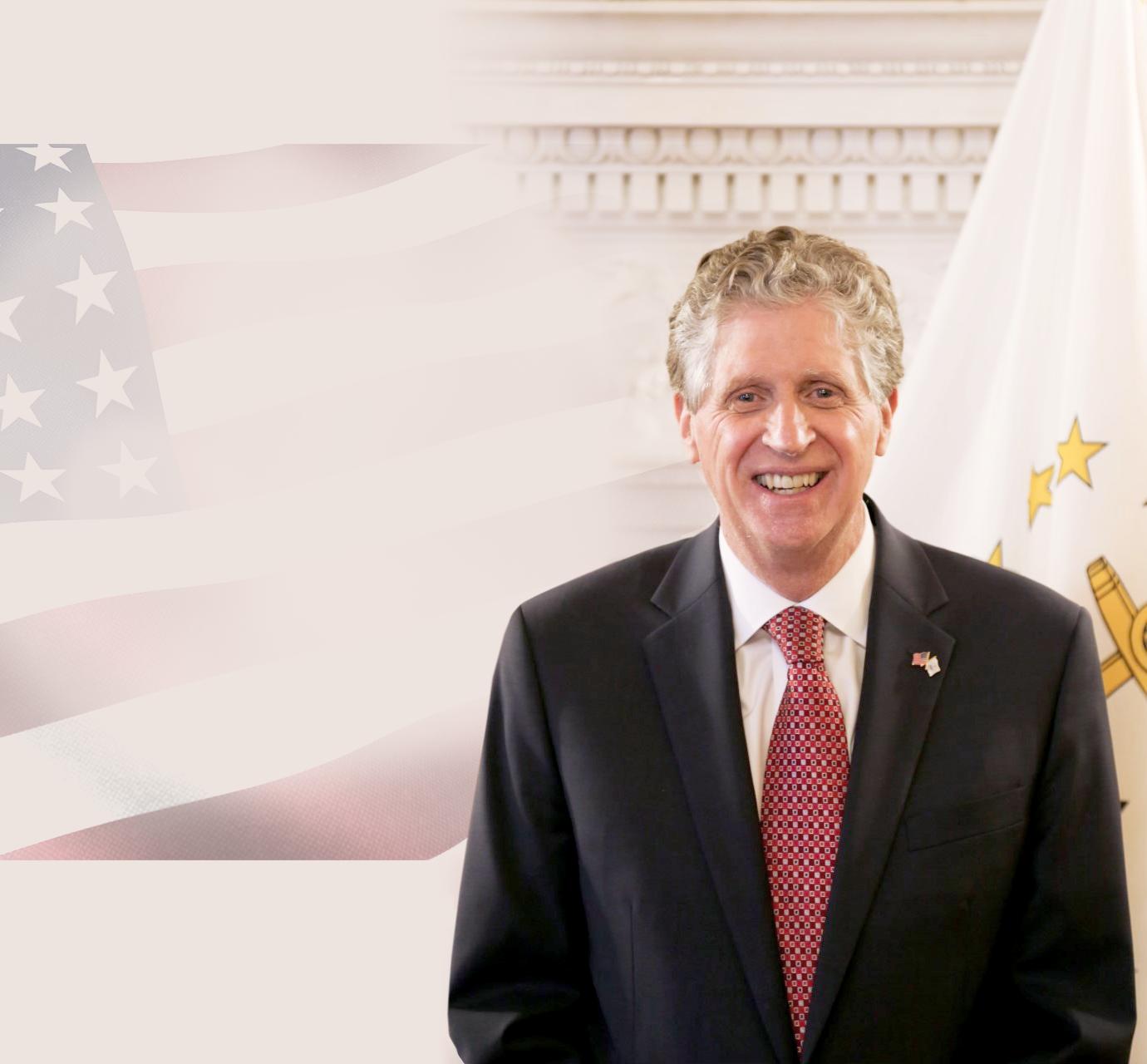
One striking (and chilling) theme in the
fessional people coordinating the takedowns of their female colleagues and peers.
Who is at risk for an online attack? Essentially, any woman with opinions online.
Van Badham, an Australian activist, playwright and
ence segmentation of social media, you could very well have only a handful of fol lowers, but be perceived as famous. The point of some trolling is not only to silence women, but for the trolls to hijack her audience and
‘Who is at risk for an online attack? Essentially, any woman with opinions online.’
thoughts,” Jankowicz writes.
Again, we must deal with the age-old idea that there is only so much air in the room, and that air is for men. Though the book walks the reader through a sampling of the sort of trolls who exist online, these examples are for outsiders – women already know them well. There’s the man who always has some reply to your every point, the guy who acts like an ally only to turn on you, the man who asks you questions he could easily Google, the older man who just knows better than you about anything you have to say, the neo-Nazis, the fas cists, the Men’s Rights Activ ists. With the exception of the last group, these are men that most working woman have had to deal with in real life.
“Women are socialized to be accommodating, but your social media profiles are not a democracy,” Jankowicz writes. Mute the trolls, block them, deny them influence and notoriety, and move on, she writes.

Many of the women profiled in the book make it clear that you are often on your own in dealing with a coordinated attack. No one is coming to save you, so it is imperative that women online build their own networks of support and have the tools they need to fight back.
“It is a privilege to protect oneself,” Jankowicz writes. Not only that, but with the new verification issues on Twitter, it is becoming harder than ever for marginalized people to protect themselves from imposter accounts. If the largest corporations in the world can’t protect them selves from spoof accounts, what chance does an ordinary person have?
In the chapter “Policy: Making it Work for You,” the author walks us through each major social media site and the tools it offers to deal with trolls. The U.S. legal system isn’t much use to women targeted online, so she urges women to read the terms of service and understand reporting policies for each site.
In the chapter “Community: Cultivating a Circle of Soli darity,” Jankowicz reminds us that “Social media is supposed to be social.” She urges women to weigh in on topics they’re interested in or have expertise about, to reach out to people with whom you have something in common, to make jokes and tell people their dogs are cute.
She advocates for building community with other women by following them, engaging with them, sharing content from women instead of men, amplifying other women, and calling out harassment of women when you see it online. She urges building online solidarity with women before you need it.
Jankowicz also suggests that you work with your employer to create a policy on how to deal with online harassment before it happens.
“In most cases, it will likely fall to employees to mount a campaign with an organiza tion’s leadership to protect those who might endure online abuse,” she writes.
Jankowicz suggests spell ing out the problem to your employer and asking for a new policy regarding online harassment. She gives the example of Defector Media’s Human Resource policy: “Every Defector employee has a precautionary subscrip tion to DeleteMe, which can be upgraded to ‘white glove service’ during severe cam paigns.”
Having these policies, Jan kowicz writes, “builds the cir cumstances in which women, who often preemptively self-censor in anticipation of online abuse, can feel safer to publicly express themselves.”
For me, this is the key solution offered in the book. I know many women, myself included, have shied away from participating in social media discourse not because we didn’t have something to say, but because it seemed inevitable that whatever we said would lead to a harass ment campaign.
Jankowicz will tell you that it is inevitable, but that doesn’t mean you cannot mitigate it, handle it, or move past it. But it is time-consum ing, expensive and difficult to do so, so ask your employer to shoulder some of the burden.





She also points out that women being silenced in the public sphere is a feedback loop that will only lead to worse things for women in the long run.
“Silence is a norm we sim ply cannot afford to accept,” she writes.

SARAH GREENLEAF (sgreenleaf@jewishallianceri. org) is the digital marketing specialist for the Jewish Alliance of Greater Rhode Island and writes for Jewish Rhode Island.








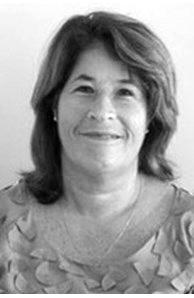

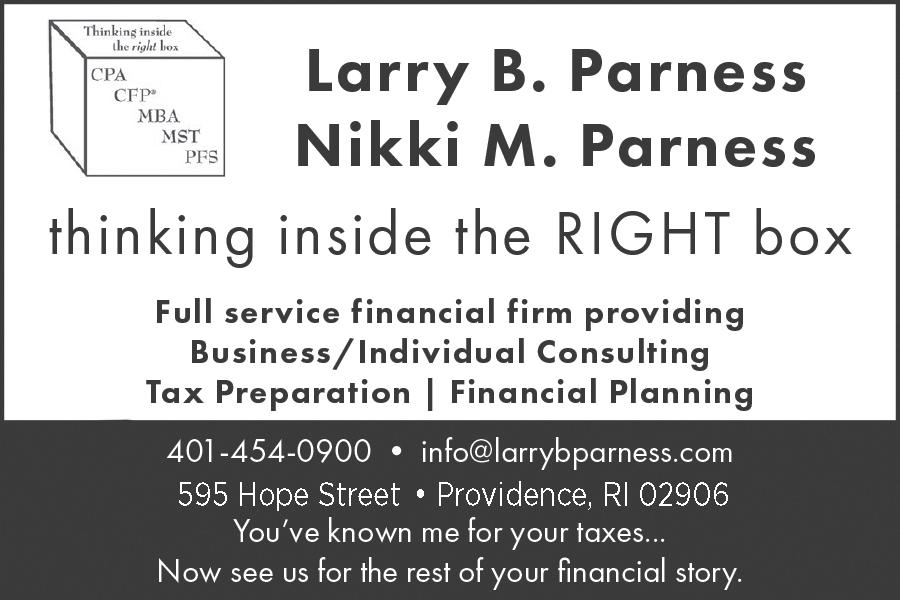
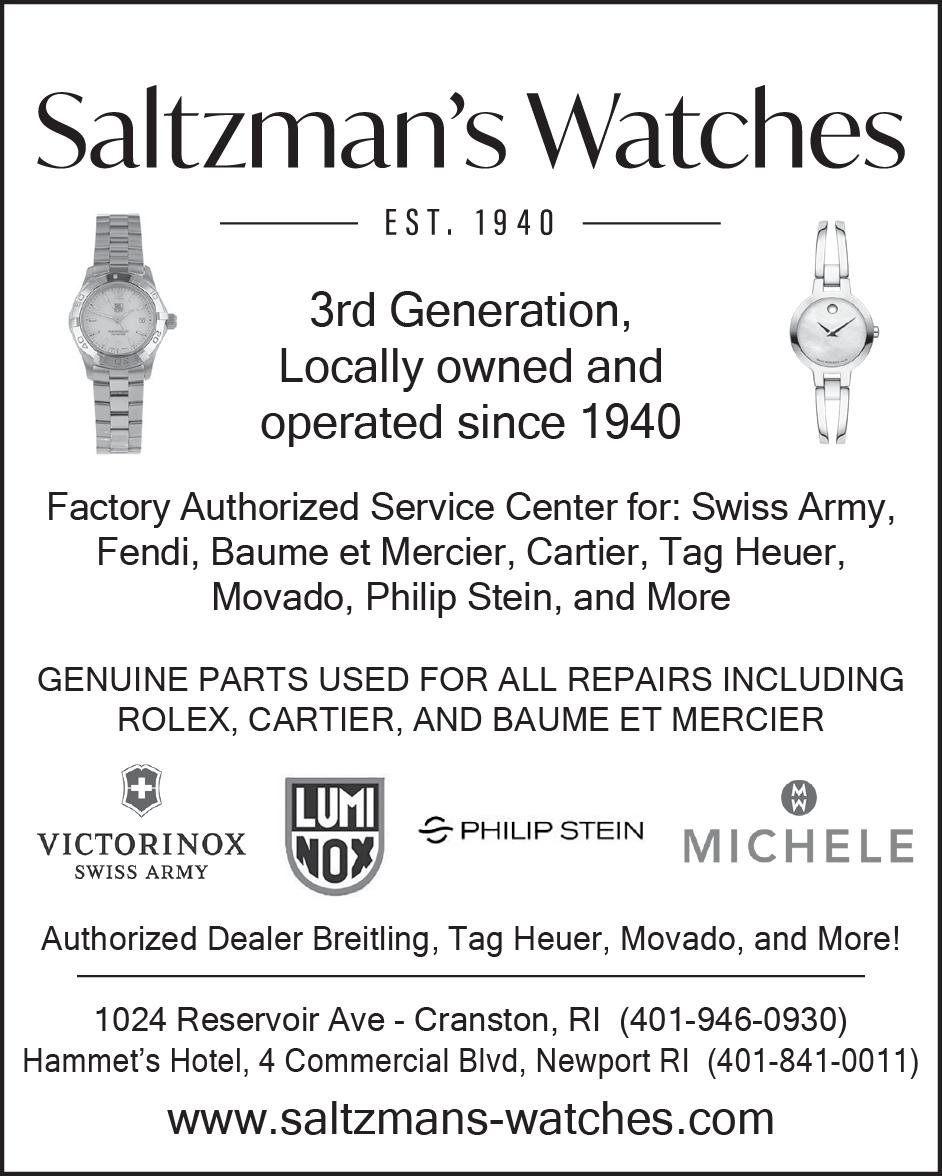




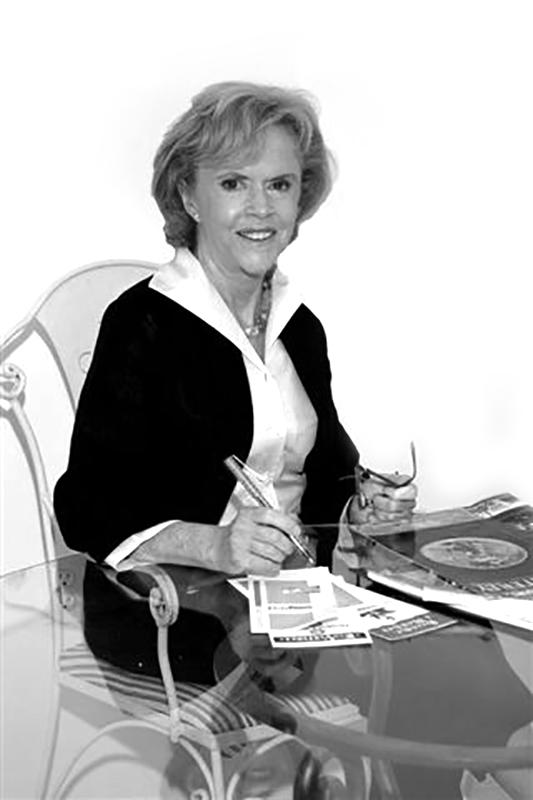


FOR FOUR DECADES, Patricia Raskin has delighted in inter viewing people and turning those interviews into columns and broadcast and internet radio shows. Raskin, who is a columnist for Jewish Rhode Island, has also worked as a lifestyle coach and consul tant, focusing on topics such as health and wellness. She prides herself on her positive outlook.
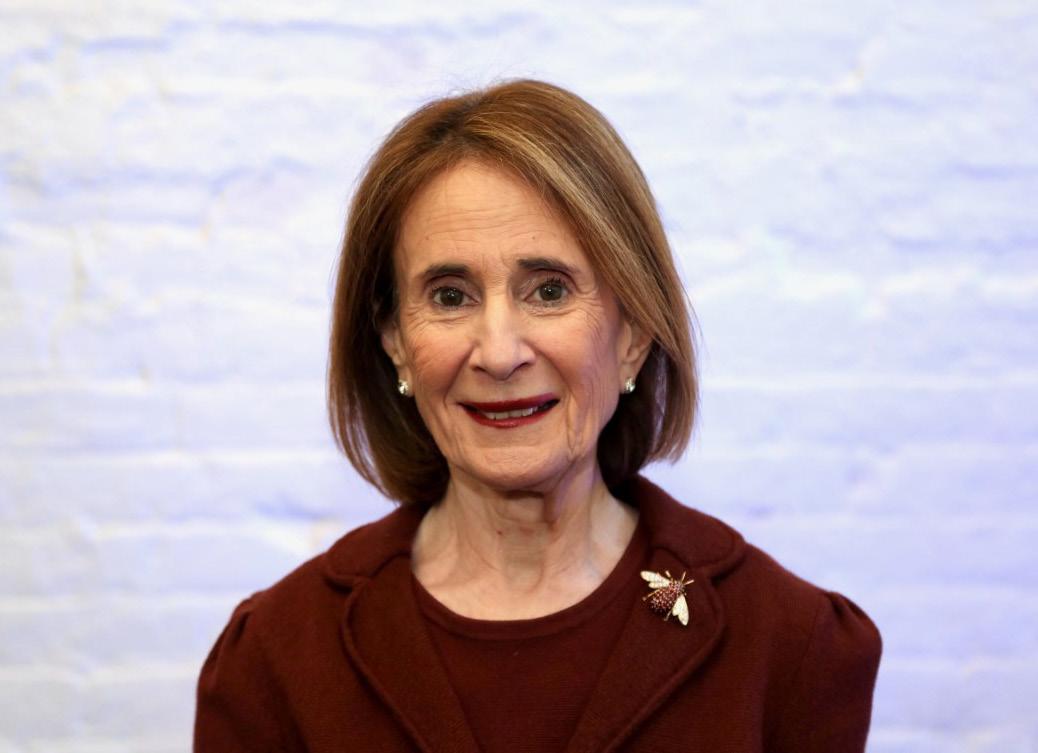
Now, the 75-year-old Rhode Islander has a new podcast, “Positive Aging,” that aims to help the growing number of older adults in the United States.
Jewish Rhode Island recently interviewed Raskin about her newest venture.
Why did you decide to focus on the aging population?
My work has always been about positive living, and my first program on cable television, in 1982, was called “Positive People.” Now that I am older and an early baby boomer, positive aging fits for me as well as for millions of others in our age group. The principles [of positive living] are the same, we are just older. We may not walk as fast or hear as well but we still get there!
In addition, there is still a lot of ageism in our country, and I want to debunk the myths and show how as older
Howard Bergel, 62
COVENTRY, R.I. – Howard J. Bergel passed away on Nov. 15, 2022, at the Respiratory and Rehabilitation Center of RI. Born in Rhode Island, a son of Joan D. (Erenkrantz) Bergel and the late Jordan P. Bergel. He had lived in Norton, Massachusetts, for many years before moving to Coventry in the winter of 2021. He was a tinkerer who was passionate about cars, he fueled this passion by surrounding himself with like-minded individuals as an auto-parts delivery driver.
Howard’s memory is trea sured by his beloved mother, Joan Bergel, of Warwick. He
adults we can create the “new” in work, hobbies and relation ships.
Love is love at any age, creative thinking is creative thinking at any age. They don’t have numbers attached to them.
Do you think there is appeal in your podcast for all ages?
Yes, the topics are timeless. We cover wellness, medical topics, relationships, tech nology, innovation, travel, finances and many others. We all need to eat well, exercise regularly, get enough sleep, learn technology to stay current, have positive rela tionships, learn new things to keep our brains active, and think positively. On my “Positive Aging” podcast, we adapt specific strategies and activities to older adults, but the concepts are the same for all of us to stay active, vital and healthy.
What are you looking for in a guest on your podcast?
I have chosen guest experts in their fields who are shining examples of positive living and positive aging. They are all on a mission to help others stay or improve mental, physical, emotional and behavioral health. We have already recorded the 13-week series, which is produced by Rhode Island PBS and funded by Southcoast Health, Green wood Credit Union, Cochlear,
BAMA companies and Balanc ing Life’s Issues. The podcasts air each week until Dec. 13. The show remains archived on Spotify, Apple and other pod cast platforms. To listen to the podcast, go to https://www. buzzsprout.com/2025964.
How does this lean into your Jewish values?
Judaism teaches us about doing mitzvahs, giving tze dakah, tikkun olam [repair ing the world] and having a purpose in life. All of my interviews, and there have been over 5,000 of them in four decades, focus on one of these in some way. I would say that about 70% of the experts, authors and celebrities I have interviewed have been through a life-changing event that propelled them to do their work, write their book and teach their principles.
I know you have a finite number of episodes, but do you hope to keep going on this subject with podcasts?
Absolutely! Podcasts are growing every day and now there are over 2 million podcasts available worldwide. This is such a great way to get information when you can’t watch, and today many podcasts are produced on a platform such as Zoom, where you can watch as well. Also, podcasts are so adaptable. You can transcribe them, turn them into a blog or book, and
keep them archived so they are evergreen. Podcasts are really radio shows in a digital format.
What’s your next step to age positively?
To keep doing the things talked about on my program so that I can continue to stay vital, active, and continue to learn and grow. My motto comes from the book “Illu sions,” by Richard Bach, who I was fortunate to interview.
In it, he writes, “You teach best what you most need to learn.” That has been my life’s work in a nutshell. The more I teach and interview, the more I learn and grow.
Anything else you’d like people to know?
Positive aging is really pos itive living. I started applying these principles early in my career, but you can start at any age. On a television docu mentary I produced, I inter viewed a 102-year-old golfer who started playing golf at 92. His average score was 100!
A very special person in my life got a bachelor’s degree at 46, a master’s degree at 60, learned how to scuba and snow ski at 63, and began dance lessons at 81.
The way we think makes such a difference! And this is true at any age.
was the dear brother of Cindy and her husband, Steve Spec tor, of Mount Pleasant, North Carolina.
Please consider making a donation in his memory to a charity of your choice.
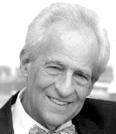
On Nov. 12, 2022, Dr. Maurice (Maury)
Bermon of Barrington passed away.
Maury was born in Philadelphia on Aug. 7, 1944, to David Bermon and Pauline Needleman Bermon, and grew up in the Oxford Circle
neighborhood of Northeast Philadelphia along with his older brother Stuart. Maury graduated from University of Pennsylvania, completed an MD at Tufts University and an internship at Boston City Hospital (now Boston Medical Center). He completed a residency in psychiatry through Harvard University at Cambridge Hospital.
Maury came to Rhode Island to serve as the chief of psychiatry for the Rhode Island Group Health Asso ciation, the first HMO in Rhode Island. He worked as a psychiatrist for more than 40 years at RIGHA, Harvard Pil grim Health Care, Landmark Hospital and finally in private
practice. He loved his work and it brought deep meaning to his life.
Since childhood, Maury lived with renal failure and received the gift of life from his brother Stuart who donated his kidney as a living donor in 1988. Miraculously Stuart’s kidney continued to function and sustain Maury for the next 32 years. Maury was predeceased by his brother Stuart in 2007 at the age of 70.
Maury loved music of all kinds, especially classical. For decades, he was an enthu siastic subscriber to the RI Philharmonic. His children grew up listening to him play Gershwin on the piano. He
is the editor of Jewish Rhode Island.
FRAN OSTENDORFwas an avid sports fan and a scrappy competitor on the court. He was a lover of food, and his friends knew him as a world-class eater. He loved to dance and even after two hip surgeries, nothing could keep Maury from the dance floor. More than anything, his family and friends were the world to him.
Maury is survived by the love of his life, his wife, Louise Bermon, his children David James Bermon (Jessy Needham) of Long Beach, Cal ifornia, and Susan Elizabeth Stewart-Bermon (wife Becca Stewart-Bermon) of Jamaica Plain, Massachusetts, and his niece Jennifer Bermon, of Marina del Rey, California.
PROVIDENCE, R.I. – Daniel Michael Cohen passed away suddenly and unexpectedly on Nov. 11, 2022, while traveling to a family reunion.
Danny was born in New York City on Aug. 25, 1981, but grew up and spent most of his life in Providence. He was considered by all to be a true Rhode Islander. He attended Providence’s Wheeler School, followed by the University of Vermont, where he earned a BA in psychology and history in 2005. The next year, back in RI, he met Annalise, his soulmate and future wife.
From a young age, Danny loved computers. He was deeply inspired by computer science and its potential to unite people and improve the world. He earned an MS in Internet Engineering from Marlboro College and went on to have a successful career as a software engineer. He taught hundreds of engineers around the world and built collaborative, effective teams through his unique combina tion of technical expertise and human touch. Only Danny could train software engineers to work better together by making pizza.
Intent on making any event, large or small, the most fun and meaningful it could be, Danny enjoyed sharing his interests in skiing, playing music, running, traveling and cooking. Every meal, every musical performance and
every moment was a chance to bring loved ones together.
Danny loved traveling the world and had an innate ability to make dear friends everywhere he went. He cre ated communities from Rhode Island to Vermont, Wash ington, D.C., to Florida and Kyrgyzstan to India, where he frequently traveled for work.
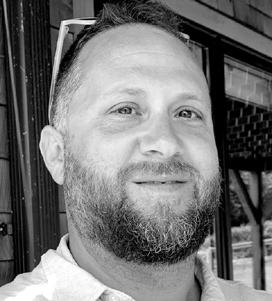
He is survived by his loving wife, Annalise; his adored children, Olivia, Samuel and Hope; his brother, Joseph (and wife Danielle); mother, Jill, and father, Donald. He also is survived by a beloved extended family of nieces, nephews, aunts, uncles, cous ins, in-laws and friends.
Donations in Danny’s name may be made toward the build ing of the new Community Center at the Meadowbrook Waldorf School at www. meadowbrookschool.com or by mail at 300 Kingstown Road, Richmond, RI 02892.

Allan Cole, 79 AUSTIN, TEXAS – Allan Sidney Cole, of Austin, passed away peacefully Oct. 31, 2022, in Knoxville, Tennessee, in the company of his daughters.
Born May 17, 1943, to William and Erie Cole, in New York City, Allan was the oldest of three children. Upon graduating from Mahwah High School, in Mahwah, New Jersey, Allan attended and graduated from Drexel Univer sity in Philadelphia, Pennsyl vania, as an electrical engi
neer. He lived in Austin for 26 years, until recently when he relocated to Tennessee to be closer to his children.
Allan is survived by his children and their spouses, Sondra Sexton (Wayne) and Dara Park (Scott), and three grandchildren, Danielle, Logan and Sidney. He also leaves his brother, Lawrence R. Cole, and sister, Paulette L. Johnson; three nieces, Sarah, Rebecca and Chava Leah; and one nephew, Binyamin. He was predeceased by his niece, Rochel Cole.
Allan enjoyed a long career in computer engineering at IBM, and later in Austin, Texas, for various technology companies. In 1981, while at IBM, he and a colleague earned a patent for cooling computer chips.
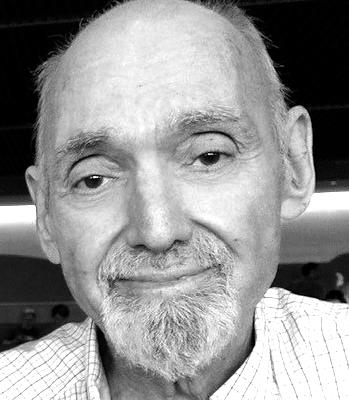
Allan enjoyed rodeos, accor dion conventions, eating Texas barbecue, travel, attending computer shows, shopping marathons and collecting Hanukkah menorahs from all over the world. He truly embraced all things Texas and was a good ambassador for his chosen home. Having deep fried turkey at Thanksgiving and taking summer trips with his family were times he treasured very much. He also enjoyed dispensing career advice to any and all family members. His family always benefited from his up-to-date computer knowledge, which ranged from fixing their computers to his encyclopedic knowledge of the best technol ogy deals each week.
Robert Cooper, 72 NEW BEDFORD, MASS. –Robert W. Cooper passed away on Nov. 19, 2022, at St. Luke’s Hospital in New Bedford, Massachusetts, after a short and unexpected illness. He is survived by his loving wife, Bonnie Mintz Cooper, with whom he shared 47 years of marriage, love and adventure.
After a chance meeting in Vermont nearly 50 years ago, Bob fell hard for Bonnie and immediately moved from the South to be with her in New England. They had two sons, Ben and Sam, who they raised together in Barrington with love and a commitment to having fun. Ben’s two daugh ters, Edie and Sunny, were the object of Bob’s affection – man ifested through their shared love of coin collecting, dancing and sweet treats.
Bob and Bonnie cultivated a loyal group of friends
wherever they lived. First, in Barrington, where they traveled, dined and laughed over the course of decades with two couples, the Molvars and the Blooms. Then, in Pad anaram, where Bob joined the New Bedford Yacht Club and the Wharf Rats, a group that instantly recognized him for his good humor and enduring curiosity.
For over 40 years, Bob managed the family business, Klear-Vu, a manufacturer of cushions, in Fall River, Massa chusetts. He had a passion for the work, approaching it like a puzzle with his engineering background and his love of new ideas. His patented inven tion, the Gripper, replaced the cushion’s ties with a non-slip bottom, thus improving the company’s product and invig orating the company. He found much professional fulfillment working with a dedicated group of employees, including his father-in-law, brother-inlaw and son.
He studied civil engineer ing and earned a Bachelor of Science degree from the Uni versity of Alabama. He loved watching his alma mater’s football team, the Crimson Tide.
Born and raised in Auburn, Alabama, Bob grew up riding bikes, participating in Boy Scouts, and playing on the family farm with his siblings, Art, Mary and Don, with whom he remained close for his whole life. All four gath ered their families every other year at Thanksgiving, bring ing together family members from across the country.
Son to Arthur W. and Dorothy Summers Cooper, and survived by two sons, Benjamin Cooper and wife, Jackie Delamatre, and Samuel Cooper and partner, Nicole Najafi, two granddaughters, Edie and Sunny Cooper, three siblings, Arthur Cooper and wife, Julia Cooper, Mary Kitchen and husband, Robert Kitchen, and Donald Cooper and wife, Hyunchu Cooper, brother-in-law Mark Mintz, and many nieces, nephews and dear friends. They will hold him in their hearts forever.
Memorial contributions may be made to the United Way of Greater Fall River, 30 Bedford St., Fall River, MA 02720 or the Boys & Girls Club of Fall River, PO Box 5155, Fall River, MA 02723.
WARWICK, R.I. – Adam David Gilstein, of Warwick, died on Nov. 19, 2022, at HopeHealth Hulitar Hospice Center. He was the beloved son of

Suzanne (Bograd) Gilstein and Alan Gilstein who prede ceased him.
Adam graduated from The Winchendon School. He was a buyer and inventory manager for Summit Medical Com passion Center. Adam had a passion for helping people managing medical conditions with medical cannabis and was highly sought after for his expertise and compas sion. Adam had many friends throughout his lifetime who loved his sense of humor, love of football and gatherings with him at his home. His family is particularly grateful to his childhood friend Tim Hughes who cared for and supported him throughout his illness.
In addition to his mother, he is survived by his sister Debbi Jaffe and her husband, Jor dan, of Barrington; he was the loving uncle of Jacob and Alan Jaffe. He is also predeceased by his grandparents Benjamin and Lillian (Krakowsky) Gil stein and Bernard and Goldie (Flint) Bograd.
Contributions can be made to The Miriam Hospital Emer gency Staff Support Fund, The Miriam Hospital Foundation, Box H, Providence, RI 02901.
WARWICK, RI – Molly Granoff, of Warwick, died peacefully at home on Nov. 21, 2022. She was the beloved and devoted wife of 62 years of the late Marvin L. Granoff. Born in Providence to the late Charles and Sarah Kadsivitz, she was the loving mother of two sets of twins: Charles Granoff (Angel) of East Providence, Rick Gra noff (Marcy) of Cranston, Faye Stolzman (Robert) of Providence and Dr. Sara Granoff-Schor (Dr. Charles) of Providence. She will forever be remembered by her four grandchildren Jonathan Gra noff (Paige), Jamie Granoff, Nora Stolzman and Jenna Schor. Molly also is survived by her sister Rose (Kadsivitz) Sagan (the late Lester) and sister-in-law Nanci Levin Kay (the late Harry). She also leaves many nieces, neph ews, and many great-nieces and nephews. Molly was one of eight devoted Kadsivitz brothers and sisters whom she dearly loved.
Children and family were a huge part of who Molly was. Entertaining family at her summer home in Narragan sett was one of her greatest joys. Molly was predeceased
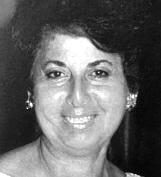
by her brothers Sam, Bob, Harry and Nathan Kay (the late Robin Montgomery). As well as sisters Betty (Kay) Plotnick, Sylvia Greenfeld (the late Harold), and her late nephew Neil Greenfeld.
Molly was a voracious reader of all books but liked historic novels the best. Molly loved the beach, oil painting, playing tennis, bridge and canasta.
The Granoff family would like to thank Molly’s incred ible caregivers and loyal “handyman” for their many years of kindness, compas sion and hard work. Thank you for the love you have shown Molly: Maureen Lipata, Wanda Carroll, Mona Dionne, Ernestina Johnson, Paula Ginalski, Cynthia Gallo, the late Helen Sears and Brian Carpenter.
Contributions in her mem ory may be made to Hope Health Hospice Care, 1085 North Main St., Providence, RI 02903 or the Alzheimer’s Association of RI, 245 Water man St., Suite 306, Providence, RI 02906.

CARLSBAD, CALIF. – Janice Markell Temkin-Irvin passed away in hospice care on Nov. 11, 2022. Janice is remembered as a great cook and a tennis player with The Stage Coach Team. Janice worked as a bookkeeper for a large law firm in Los Angeles and sub sequently for Jewish Family Service in San Diego. She had been married to Jacob Temkin and then to Lester Irvin.
Janice is survived by her children, Alan Temkin, of Providence, and Elizabeth Temkin, of Los Angeles.
FLA. – Shirley Konicov died Nov. 16, 2022. She was the beloved wife of the late Monte Konicov. Born in Baltimore, Maryland, a daughter of the late William and Fannie (Weiner) Cohen. She lived in Boca Raton for 25 years, and previously lived in Warwick for over 50 years.
In her early forties, Shirley pursued a college degree and embarked on a career as a health caregiver. As a Rhode Island licensed registered nurse, she worked in several skilled nursing facilities. She assumed leadership roles as nurse supervisor at both the Charlesgate Nursing Center in Providence and the former Pawtuxet Village Care in War
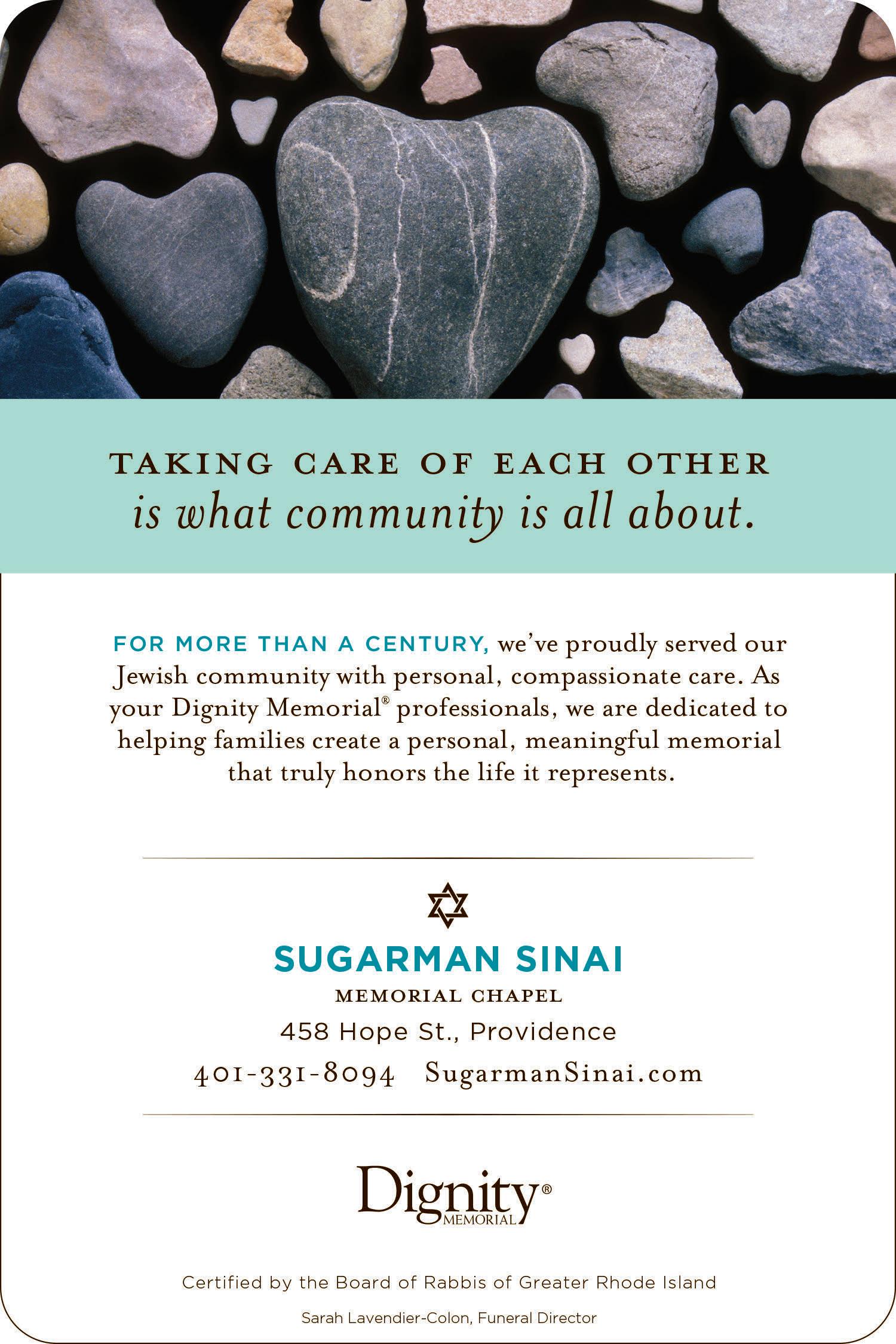
wick, retiring in 1994.
Shirley was an active resident of Century Village in West Boca Raton, and a life member of Hadassah. She was a patron of the arts and culture, especially enjoying music, theater and multiple forms of dancing in which she personally excelled. She will be remembered as a committed caregiver both in her career, and more impor tantly in her daily life. With family and friends, she was constantly recognized as an exquisite hostess and fabulous cook.
She was a devoted mother of Marc Konicov and his wife, Roberta, of Wakefield, Massa chusetts, Dr. David Konicov and his wife, Michelle, of Lincoln, Ellen Ellin and her husband, Barry, of Balti more, Maryland, and Howard Konicov and his wife, Judy, of South Orange, New Jersey. She was the dear sister of the late Bernard Cohen. She was the loving grandmother of Andrew, Bruce (Marni), Carys, Jenna (Bashar), Benjamin, Jacob and Jus tin. She was the cherished great-grandmother of Dylan and Sophie.
Contributions in her mem ory may be made to Hadassah, 40 Wall St., 8th Floor, New York City, NY 10005.
Andrew Latzman, 50 CRANSTON, R.I. – Andrew Neil Latzman died unexpect edly on Nov. 7, 2022. He was the beloved partner of Sue Misto for three years. Born in Manhat tan, New York, he was a son of the late Allen and Mona (Nesser) Latzman.
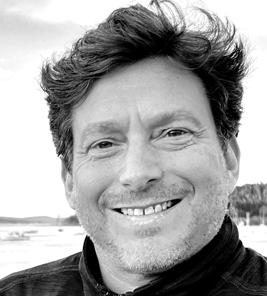
He was raised in New Rochelle, New York, with his brother, Philip. After gradu ating from New Rochelle High School, he went on to receive a bachelor’s in political science from Binghamton University in 1994. There, he met his life long friends, Rick and Mike.
Andrew moved to Cranston in 2002 with his young family; he made a point to be a strong and reliable force in the lives of his sons.
Andrew took immense pride in cultivating his beautiful yard and enjoyed long walks on the beautiful beaches of Rhode Island. He was a diehard and lifelong fan of the Knicks and Jets, he described himself as the best NBA player that never played. When he wasn’t working on his game, he served as a coach for his son’s soccer team. He
was described as a passionate coach who focused on putting his team at the top. He was a cat lover who tenderly cared for and rescued many cats throughout his lifetime.
Andrew worked for Metrics Lab as a data analyst. He was proud of his work and had reached a point which allowed him to excel in the field of market research and gained notoriety within the company as the best on his team.
He was the devoted father of Samuel and Nathaniel Latzman, both of Cranston. He was the dear brother of Philip and his wife, Jill Latzman, of Scottsdale, Arizona. He was a loving uncle to Marisa and Mitchell Latzman. He was the cherished nephew of Stephen and his wife, Pat Latzman, as well as Carol and her husband, Lee Mizrahi, who became loving parental figures after the loss of Andrew’s parents. He was the valued cousin of Robert, Jonathan, Dan iel, Tara, Evan, Kevin and David. He was treasured by so many longtime friends: Rick Adleson, Mike, Kevin Klein, Danny and the Baron family, Mark, Judy and the Denton family, the Gelman family, the Feigenbaum family, Joyce Furfero and others. He was predeceased by his parents, his grandparents and his uncle, Barry.
Contributions in his mem ory may be made to Gloria Gemma Breast Cancer Resource Foundation, 249 Roosevelt Ave., Suite 201, Pawtucket 02860 or Juvenile Diabetes Research Founda tion, 200 Vesey St., 28th Floor, New York City, NY 10281, or the Woonsocket Cat Sanctu ary, 266 Mendon Road, Woon socket, RI 02895.
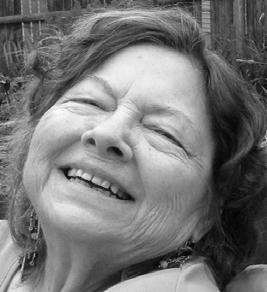
PAWTUCKET, R.I. – Thelma Jo Levitt, of Pawtucket, passed away on Oct. 31, 2022, at Hope Health Hulitar Hospice Center, in Providence. Born Oct. 15, 1946, in Lawton, Okla homa, she was the daughter of the late Roy E. and Betty E. (Shafer) Jenkins. Jo was a graduate of the class of 1964 at the Apache High School, Apache, Oklahoma. She was a member of the First Baptist Church, where she played piano for Sunday school, was the pianist for the high school chorus and acted in the senior play.
Jo was the loving wife of Richard Alan Levitt, of Paw tucket, and mother of Julie
Vanessa, Mindy Melissa and Sarah Dawn. She had eight grandchildren: Nathaniel Roy Dunbar Levitt, Kelsae Rhian non Levitt, Isabelle Rochelle Carroll, Devin Christian Carroll, Gabriel Claude Car roll, Dylan Andrew McIntyre, Jordan Alan McIntyre and Brayden Alexander McIntyre. Jo is survived by her sister, Fanny Lou Jenkins Grote (Richard). She was preceded in death by her brother, Berl Leroy Jenkins, and nephew, Joshua Richard Grote. Also surviving is her nephew, Dan iel Andrew Grote (Kathy), and daughter, Elizabeth Claire, as well as more nephews, nieces, great-nephews and greatnieces.
In 1994, an incident while scuba diving in Cozumel left Jo with an injury to her spinal cord that resulted in paraplegia. Despite her disability, she continued to be an independent woman. Her husband, Rick, provided care for her during the times that she was unable to care for herself. At home, Jo provided granny-daycare for all of her grandchildren, which fostered very close relationships with them. She had a profound impact on everyone she met.
The joys of her life were her husband, children and grandchildren. She enjoyed taking the kids to the beach
during the summer, camping in their trailer at the pond on weekends, scuba diving during vacation and throw ing parties. She and Rick adored each other and shared amazing memories together. Throughout her time in her wheelchair, Rick would push her throughout the neighbor hood, and she enjoyed every walk they took while talking with neighbors.
After years of suffering from Alzheimer’s disease, Jo passed peacefully at the Hope Health Hulitar Hospice Center. As Rick put it, any time with her after her scuba diving accident was considered “bonus time.” He had 28 years of “bonus time” with her, which we all appreciated and loved! The family is especially grateful to HopeHealth and their compassion to Jo and the entire family.
Jo’s forever friend Marie Flinchum’s grandson, Dylan Flinchum, had a rare and ter minal disease, metachromatic leukodystrophy (MLD). Jo was passionate about supporting her friend and her friend’s family from the very begin ning. Jo and her family have attended the Dylan Flinchum Rock On 5K each year since it began. This organization helped the Flinchum family support Dylan Flinchum’s medical needs, as well as the
needs of other families with MLD. Dylan passed away on Nov. 11, 2021. His family continues to support other families with MLD. Our family will always continue to help this amazing foundation. In lieu of flowers, donations in Jo's memory can be made to the Dylan Flinchum Rock On! Foundation (DylanRockOn. org).
Nancy Lieberman, 73 WAKEFIELD, R.I. – Nancy Deborah Lieberman, of Wakefield, wife of the late Stephan Howard Lieb erman, died peacefully, with her family by her side, on Nov. 17, 2022, at Kent Hospital from complica tions of cancer.
She was born at Doctors Hospital, New York, Feb. 2, 1949, the daughter of artist Frances Joslin Gold and Harold Arthur Gold, DDS, of Wilton, Connecticut.
Raised in Wilton, she attended Wilton High School and graduated from Boston University with a degree in Early Childhood Education. She married Stephan Howard Lieberman on July 22, 1972, in Wilton.
Nancy is survived by sons David William Schauer Lieberman (and wife Jessica Schauer Lieberman) of Somer ville, Massachusetts, Scott Jef frey Lieberman, granddaugh ter, Cypress Rose Lieberman of Wakefield, sister Susan Gold Purdy (and husband Geoffrey H. Purdy) and niece, Cassan dra Heather Purdy of Roxbury, Connecticut.
In 1992, Nancy and Stephan opened Bagelz Bakery in Wakefield (now owned and operated by Scott Lieberman)
and a second location on the campus of URI in Kingston. She previously served on the board of Congregation Beth David in Narragansett.
Donations may be made to Welcome House of South County or Temple Beth David in her memory.
Lawrence Miller, 78 SANTA ROSA, CALIF. –Lawrence Samuel Miller (Larry), of Santa Rosa, peacefully passed away in his sleep at home on Nov. 21, 2022. Larry grew up in Providence and lived there until 1986 when he moved to San Francisco to pursue a life of healing the world. He got close, but after the 2016 election that all fell apart.
Larry graduated from Hope High School and attended elementary school at The Providence Hebrew Day School, inspiring lifelong agnosticism and devotion to Buddhist practices as an adult. Larry received a BA from New Hampshire College before marrying Sara (Linder) Sheiber of Providence. As a Sergeant in the United States Army during the Viet Nam War, Larry was stationed in Berlin and liked to brag that he killed more Germans during the Viet Nam war than any other soldier. This was not true.
Having earned an MA in Psychology from the New School in San Francisco Larry had several careers as a clinical psychotherapist, licensed massage therapist, non-denominational hospital chaplain and foster parent to medically fragile babies in the San Francisco foster system.
Larry and his then partner Mindy Zlotnick devoted seven years to caring for medically fragile newborns and infants for three to six months at a time, with some babies staying two to three years.
Per his final wishes, Larry donated his body to UC Davis. Donations can be sent to the VA Northern California Health Care System which took good care of him for 30 years. However, this did not stop him from dancing.
Larry is survived by son Lee Miller of Nashville, Tennes see, grandchildren Max and Sophia Miller, partner Kira Ohina of Santa Rosa, and sister Iris Minkin of Narra gansett.
Shirley Nulman, 94 NORTH KINGSTOWN, R.I. – Shirley L. Nulman passed away on Nov. 8, 2022, at Bayview Rehab at Scalabrini, in North Kingstown. She was the beloved wife of the late Lawrence Nulman for 70 years. Born in Providence, she was the daughter of the late Nathan and Mollie (Silverman) Snell. She had lived in Cranston for 61 years.
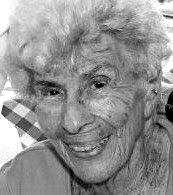
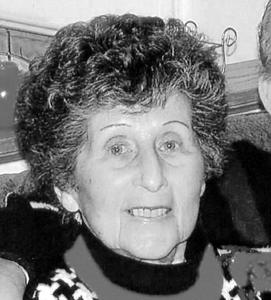
She worked alongside her husband, Lawrence, at Barnes Cleansers for some time, serving as a bookkeeper and alterations assistant. While she enjoyed working along side her adoring husband and truly enjoyed her work with Barnes Cleansers, she was graced with a more important job that she took very seri ously, motherhood. She was an active mother who made sure to provide her children with the unwavering support they needed; she joined the PTA and oversaw a troop of Brownies with the Girl Scouts of America as a troop leader. She enjoyed sewing and creat ing beautiful clothing for her daughters.
She enjoyed reading, ball room dancing and playing mahjong, but most of all she valued time with her family as her children grew and brought grandchildren into her world. In her later years, Shirley joined the condo association in Pompano, Florida, and was blessed to be able to enjoy winters in Florida.
She was a devoted mother to Lee Nulman, of Cranston; Patti and her husband, Noel Simpson, of Narragansett; and Nancy and her husband, Tim Persons, of St. Louis, Missouri.
She was the dear sister of the late Albert Snell; his wife, Miriam; and William Snell.
She was the loving grand mother of Nicole Berman and her wife, Cait Dooley; Mitchell Berman; Alyssa Persons; and Kyle Persons and his wife, Rachel Trent.
Contributions in her mem ory may be made to Beacon Hospice, 854 American Way, Suite A, Baton Rouge, LA 70816 or the Alzheimer’s Asso ciation of Rhode Island, 245 Waterman Ave., Providence, RI 02906.
WARWICK, R.I. – Elaine Silverman passed away on Nov. 5, 2022, at HopeHealth Hulitar Hospice Center surrounded by her loving family. She was the beloved wife of the late Alan Silverman for 60 incredible years. Born in Boston, Massachusetts, a daughter of the late Israel and Tillie Mushkin, she raised her children and stayed in Warwick for 63 years, previously living in Cranston. She was a devoted mother who raised her children with compassion.
She was the devoted mother of Vickie Turnquist and her husband, Tom, of Warwick; David Silverman and his wife, Sue, of Cranston; and the late Susan Silverman-Kinney. She was the loving grandmother of six: Adam, Sarah, Lauren, Zachary, Cooper Lee and Caylee. She was the cherished great-grandmother of one. Contributions in her mem ory may be made to Hope Health Hulitar Hospice Center, 1085 North Main St., Provi dence, RI 02904.
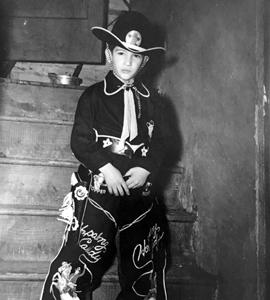
FORT LAUDERDALE, FLA. – Leona (Zawatsky) Spilka, of Fort Lauderdale, formerly of Providence, passed away Oct. 29, 2022. She was the wife of the late Dr. Norman M. Kahn and the late Samuel Spilka. Born in Providence, a daughter of the late Julius J. and Sarah (Michaelson) Zawatsky, she was a longtime resident of the city before mov ing to Florida in 1990.
Leona was a secretary in the Providence public school system for 26 years before retiring. She was a lifelong member of Temple Emanu-El, Hadassah, the Jewish Home for the Aged and ORT. She also enjoyed volunteering at the Galt Reading Room in Fort
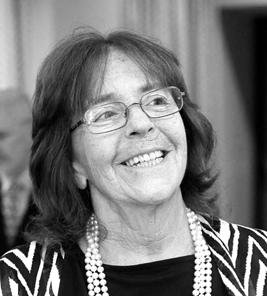
Lauderdale.
She is survived by her daughter Deborah Roberts (Stan) of Warwick, stepdaugh ter Ronnie Kippel (Dr. Gary) of Brooklyn, New York, and three grandchildren, Rachael Kaplan (Ben), David Rob erts (Molly) and Aliza Rose Kippel. She adored her four great-grandchildren, Made lyn, Henry, Simon and Max, as well as several nieces and nephews.
She was the mother of the late Robert A. Kahn, sister of the late Albert and Martin Zawatsky, and mother-in-law of the late Stanley Roberts. Contributions in her mem ory may be made to Temple Sinai, Rabbi’s Discretionary Fund, 30 Hagan Ave., Cran ston, RI 02920 or Holy Cross Catholic Hospice Unit in Fort Lauderdale, Florida, where she was so beautifully cared for with great dignity.
Alan
WARWICK, R.I. – Alan B. Webber died Nov. 23, 2022, at home, sur rounded by his family. He was the beloved husband of Lori (Swanholm) Webber for 31 years. Born in Providence, a son of the late Marshall and Betty (Cantoff) Webber, he lived in Warwick, previously residing in East Greenwich and Cranston.

He was president and owner of both the former Marshall Trading and Pauley Compa nies. Alan was a history buff and passionate about teaching and sharing knowledge with his students at both Toll Gate and Warwick Veterans high schools, retiring in 2021. Alan was a past president of the Potowomut Golf Club, a former softball coach, and an avid Red Sox and Patriots fan.
He was the devoted father of Danielle Webber and her husband, Joseph Fleury, of Boston, Massachusetts. He was the dear brother of Paul Webber and his wife, Kate, of Newport and the late Steven Webber and James Web ber and his surviving wife, Emily, of Cranston. He was the loving uncle of several nieces and nephews. He was the cherished lifelong friend of Richard Bedrosian of Dix Hills, New York.
Contributions in his mem ory may be made to the American Cancer Society, 931 Jefferson Blvd., Suite 3004, Warwick, RI 02886.
